
Kesehatan mental merupakan aspek yang sangat penting dalam kehidupan sehari-hari. Psikolog ingatkan pentingnya untuk menjaga kesehatan mental agar dapat menjalani kehidupan dengan lebih baik.
Menurut psikolog, kesehatan mental adalah kondisi dimana seseorang mampu mengatasi tekanan, stres, dan tantangan yang dihadapi dalam kehidupan sehari-hari. Kesehatan mental yang baik akan membuat seseorang merasa lebih bahagia, tenang, dan dapat berfungsi dengan optimal dalam berbagai aspek kehidupannya.
Tidak jarang kita melupakan pentingnya menjaga kesehatan mental, terutama di tengah kesibukan dan tuntutan hidup yang semakin meningkat. Padahal, kondisi tersebut dapat berdampak buruk bagi kesejahteraan kita secara keseluruhan. Gangguan kesehatan mental seperti depresi, kecemasan, dan stres dapat mengganggu kualitas hidup seseorang dan mempengaruhi hubungan dengan orang di sekitarnya.
Oleh karena itu, psikolog menekankan pentingnya untuk menjaga kesehatan mental dengan melakukan berbagai cara yang dapat meningkatkan kesejahteraan emosional dan psikologis. Beberapa cara yang dapat dilakukan antara lain adalah dengan berolahraga secara teratur, mengatur pola tidur yang baik, menjaga pola makan yang sehat, dan melakukan aktivitas yang menyenangkan.
Selain itu, psikolog juga menyarankan untuk mengelola stres dengan cara yang tepat, seperti dengan melakukan relaksasi, meditasi, atau terapi psikologis jika diperlukan. Penting juga untuk memperhatikan lingkungan sekitar dan membangun hubungan yang sehat dengan orang-orang di sekitar kita.
Dengan menjaga kesehatan mental, kita akan mampu menghadapi berbagai tantangan hidup dengan lebih baik dan merasa lebih bahagia serta bermakna. Jadi, jangan lupakan pentingnya menjaga kesehatan mental untuk kehidupan yang lebih baik dan berkualitas.

Ancol adalah salah satu destinasi wisata di Jakarta yang selalu ramai dikunjungi oleh wisatawan lokal maupun mancanegara. Salah satu atraksi yang tidak boleh dilewatkan saat berkunjung ke Ancol adalah naik gondola untuk menikmati pemandangan indah dari ketinggian.
Gondola merupakan transportasi berupa kereta gantung yang menghubungkan dua titik di Ancol, yaitu Pantai Carnaval dan Pantai Ancol. Dengan naik gondola, pengunjung dapat menikmati pemandangan laut biru yang tenang, pantai pasir putih, serta kawasan hiburan yang ada di sekitar Ancol.
Potret mengudara dari gondola membuat takjub pengunjung Ancol. Mereka dapat melihat keindahan alam dan kegiatan di sekitar Ancol dari atas, yang tidak dapat mereka nikmati dari darat. Udara segar dan angin sepoi-sepoi membuat pengalaman naik gondola semakin menyenangkan.
Selain menikmati pemandangan, naik gondola juga memberikan pengalaman yang seru dan menegangkan bagi pengunjung. Sensasi melayang di atas ketinggian dengan pemandangan yang indah membuat mereka merasa seperti sedang terbang di udara.
Bagi pengunjung yang ingin mencoba pengalaman unik naik gondola di Ancol, mereka dapat membeli tiket di loket yang tersedia di area Pantai Carnaval dan Pantai Ancol. Harga tiket yang terjangkau membuat naik gondola menjadi salah satu atraksi favorit bagi wisatawan yang berkunjung ke Ancol.
Dengan potret mengudara dari gondola yang membuat takjub pengunjung Ancol, tidak heran jika atraksi ini selalu ramai dikunjungi oleh wisatawan. Nikmati keindahan alam dan kegiatan di sekitar Ancol sambil menikmati udara segar dan angin sepoi-sepoi dengan naik gondola. Jangan lewatkan pengalaman seru dan menegangkan ini saat berkunjung ke Ancol!
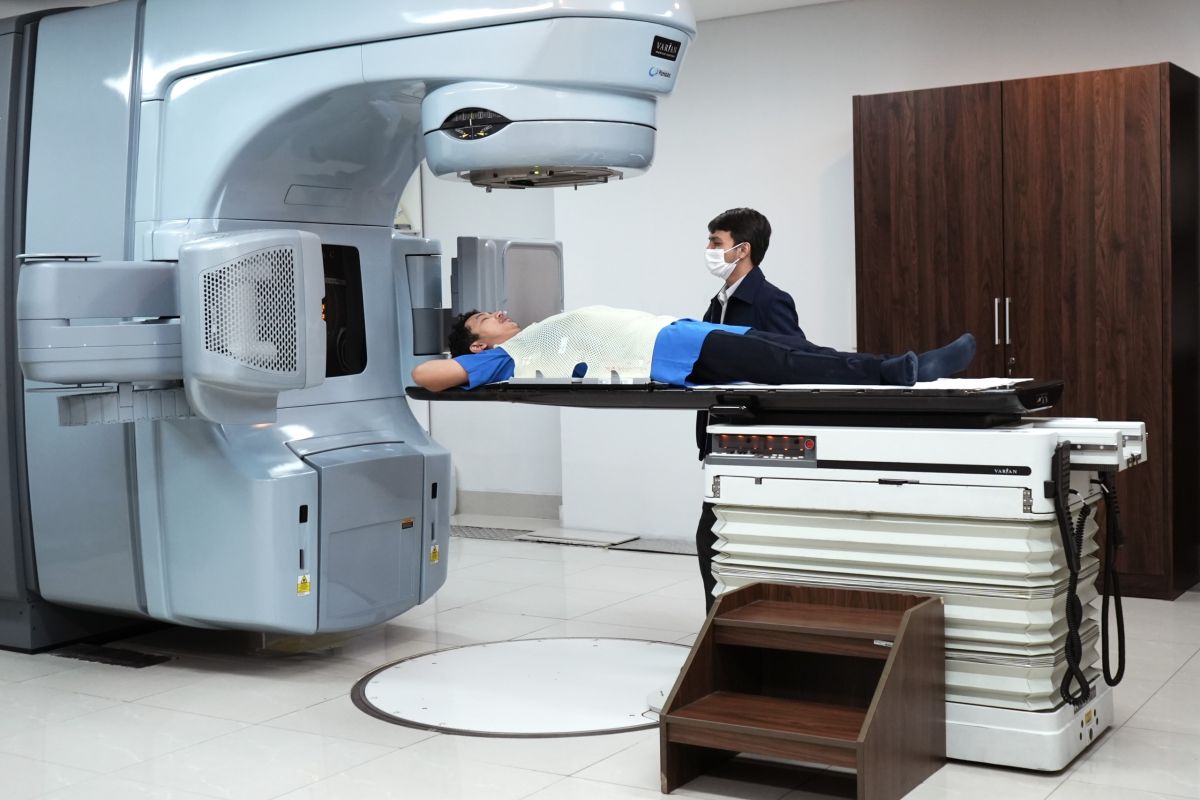
Kanker adalah salah satu penyakit mematikan yang masih menjadi momok bagi banyak orang di seluruh dunia, termasuk di Indonesia. Namun, dengan kemajuan teknologi medis, kini terdapat berbagai metode pengobatan yang lebih efektif dan minim invasif untuk mengatasi kanker. Dua di antaranya adalah LINAC dan Brachytherapy.
LINAC, singkatan dari Linear Accelerator, adalah alat yang digunakan untuk menghasilkan radiasi yang digunakan dalam pengobatan kanker. Alat ini bekerja dengan cara mempercepat partikel-partikel berenergi tinggi, seperti elektron atau foton, untuk menghancurkan sel-sel kanker. LINAC biasanya digunakan dalam terapi radiasi eksternal, di mana radiasi diberikan dari luar tubuh pasien.
Brachytherapy, di sisi lain, adalah metode pengobatan kanker yang menggunakan sumber radiasi yang ditempatkan di dalam atau dekat tumor. Sumber radiasi ini dapat berupa benih radioaktif atau kateter yang mengirimkan radiasi langsung ke tumor. Brachytherapy biasanya digunakan dalam pengobatan kanker prostat, kanker serviks, dan kanker payudara.
Kedua metode pengobatan ini memiliki kelebihan dan kekurangan masing-masing. LINAC memiliki keunggulan dalam memberikan dosis radiasi yang tepat dan terkontrol, serta mampu menjangkau tumor yang lebih dalam. Namun, terapi radiasi eksternal dengan LINAC memerlukan beberapa sesi pengobatan dan dapat menyebabkan efek samping seperti kelelahan dan iritasi kulit.
Sementara itu, Brachytherapy memiliki keunggulan dalam memberikan dosis radiasi yang tinggi secara lokal, sehingga dapat mengurangi kerusakan pada jaringan sehat di sekitar tumor. Namun, metode ini juga memiliki risiko infeksi dan perdarahan, serta memerlukan keahlian khusus dalam pemasangan sumber radiasi.
Meskipun demikian, baik LINAC maupun Brachytherapy merupakan opsi pengobatan kanker yang efektif dan dapat membantu pasien untuk sembuh dari penyakit mematikan ini. Penting bagi pasien dan keluarganya untuk berkonsultasi dengan tim medis yang terdiri dari dokter spesialis onkologi radiasi dan radioterapis untuk memilih metode pengobatan yang paling sesuai dengan kondisi dan jenis kanker yang diderita.
Dengan pemahaman yang lebih baik tentang LINAC dan Brachytherapy sebagai opsi pengobatan kanker, diharapkan masyarakat dapat lebih aware terhadap pentingnya deteksi dini dan pengobatan kanker. Semoga dengan adanya kemajuan teknologi medis ini, semakin banyak pasien kanker yang dapat sembuh dan mendapatkan kualitas hidup yang lebih baik.

KAI DAOP 1 (Divisi Operasi 1 PT Kereta Api Indonesia) memproyeksikan sebanyak 47.317 penumpang akan datang ke Jakarta pada hari Minggu ini. Proyeksi ini merupakan hasil dari peningkatan jumlah permintaan tiket kereta api yang terjadi akhir-akhir ini.
Menurut Kepala KAI DAOP 1, Bambang Prayitno, peningkatan jumlah kedatangan penumpang ke Jakarta ini dipicu oleh berbagai faktor, seperti libur panjang akhir tahun, libur sekolah, dan juga meningkatnya minat masyarakat untuk menggunakan kereta api sebagai sarana transportasi yang nyaman dan aman.
Untuk mengantisipasi lonjakan jumlah penumpang, KAI DAOP 1 telah menyiapkan berbagai langkah, seperti menambah jumlah kereta api yang beroperasi, meningkatkan frekuensi perjalanan, serta memperluas layanan tiket online agar memudahkan masyarakat dalam melakukan pemesanan tiket.
Selain itu, KAI DAOP 1 juga telah meningkatkan penerapan protokol kesehatan di seluruh stasiun dan kereta api, seperti pengukuran suhu tubuh, penyediaan hand sanitizer, serta pembatasan jumlah penumpang di dalam kereta api demi menjaga kesehatan dan keselamatan para penumpang.
Dengan adanya proyeksi kedatangan sebanyak 47.317 penumpang ke Jakarta hari Minggu ini, diharapkan KAI DAOP 1 dapat memberikan pelayanan yang terbaik dan memastikan keamanan serta kenyamanan para penumpang selama perjalanan dengan kereta api. Semoga dengan berbagai upaya yang telah dilakukan, masyarakat dapat menikmati perjalanan mereka tanpa khawatir akan risiko penularan virus.

Lebaran sudah berlalu, namun mungkin masih terasa efeknya bagi sebagian dari kita. Makanan lebaran yang berat dan banyak bisa membuat pencernaan kita terganggu. Oleh karena itu, penting bagi kita untuk melancarkan pencernaan setelah Lebaran agar tubuh kita kembali sehat dan bugar.
Berikut adalah beberapa cara untuk melancarkan pencernaan setelah Lebaran:
1. Konsumsi makanan berserat tinggi
Makanan berserat tinggi seperti buah-buahan, sayuran, dan biji-bijian dapat membantu melancarkan pencernaan. Serat membantu merangsang gerakan usus dan memperlancar proses pencernaan.
2. Minum air putih yang cukup
Minum air putih yang cukup sangat penting untuk menjaga kesehatan pencernaan. Air membantu melunakkan tinja dan mencegah sembelit.
3. Hindari makanan berlemak dan berminyak
Makanan berlemak dan berminyak sulit dicerna oleh tubuh dan bisa menyebabkan masalah pencernaan. Hindari makanan seperti gorengan, makanan cepat saji, dan makanan berlemak lainnya setelah Lebaran.
4. Olahraga secara teratur
Olahraga dapat membantu melancarkan pencernaan dengan meningkatkan pergerakan usus. Lakukan olahraga ringan seperti berjalan kaki, bersepeda, atau berenang setidaknya 30 menit setiap hari.
5. Istirahat yang cukup
Kurang tidur dapat mempengaruhi kesehatan pencernaan. Pastikan Anda mendapatkan istirahat yang cukup setiap malam agar tubuh dapat beristirahat dan memperbaiki diri.
Dengan mengikuti tips di atas, Anda dapat melancarkan pencernaan setelah Lebaran dan menjaga kesehatan tubuh Anda. Semoga bermanfaat!

Puluhan ribu pemudik berangkat dari Jakarta menuju kampung halaman mereka untuk merayakan Lebaran. Menjelang hari raya Idul Fitri, tradisi mudik sudah menjadi bagian yang tak terpisahkan dari budaya masyarakat Indonesia.
Hari ini, sebagian besar pemudik memilih untuk berangkat dari Jakarta menuju kampung halaman mereka, H+4 sebelum Lebaran. Mereka memanfaatkan waktu libur panjang untuk berkumpul dengan keluarga dan kerabat tercinta di kampung halaman.
Para pemudik ini rela menempuh perjalanan jauh dengan berbagai moda transportasi, mulai dari kereta api, bus, hingga pesawat terbang. Meskipun penuh dengan tantangan dan kerumitan, semangat untuk berkumpul dengan keluarga di hari raya tetap menjadi motivasi utama bagi para pemudik.
Selain itu, fenomena mudik juga menjadi momen yang ditunggu-tunggu bagi sebagian besar masyarakat Indonesia. Mereka bisa bertemu dengan keluarga yang sudah lama tidak bertemu, merasakan kehangatan dan kebersamaan di tengah kesibukan dan hiruk-pikuk kota metropolitan.
Namun, dalam perjalanan mudik ini juga harus diwaspadai berbagai risiko dan kendala, seperti kemacetan lalu lintas, kecelakaan, dan peningkatan tarif transportasi. Oleh karena itu, para pemudik diharapkan untuk selalu berhati-hati dan memperhatikan keselamatan selama perjalanan.
Semoga para pemudik dapat sampai di kampung halaman dengan selamat dan merayakan Lebaran dengan penuh kebahagiaan bersama keluarga tercinta. Selamat mudik dan Selamat Idul Fitri bagi semua umat Muslim yang merayakannya.

Setelah berhari-hari menikmati hidangan lezat dan berbagai macam kue kering di hari raya Idul Fitri, saatnya kita kembali memperhatikan kesehatan tubuh. Merayakan Lebaran memang menyenangkan, namun seringkali kita lupa untuk menjaga pola makan dan gaya hidup sehat.
Salah satu cara untuk menjaga kesehatan tubuh setelah Lebaran adalah dengan melakukan cek kesehatan secara rutin. Dengan melakukan pemeriksaan kesehatan, kita dapat mengetahui kondisi tubuh kita dan mencegah berbagai penyakit yang bisa muncul akibat pola makan yang kurang sehat selama liburan. Pastikan untuk melakukan pemeriksaan darah, tekanan darah, dan kolesterol secara berkala agar dapat segera mengambil tindakan jika ditemukan kelainan.
Selain itu, mengelola stres juga menjadi hal yang penting untuk menjaga kesehatan tubuh. Liburan Lebaran seringkali dihabiskan dengan bertemu kerabat dan keluarga, namun hal ini juga bisa menimbulkan stres akibat berbagai konflik dan tuntutan sosial. Cobalah untuk mengatur waktu istirahat yang cukup, berolahraga secara teratur, dan melakukan aktivitas yang menyenangkan untuk meredakan stres.
Selain itu, menjaga pola makan yang sehat juga sangat penting untuk menjaga kesehatan tubuh. Setelah Lebaran, coba untuk kembali ke pola makan yang seimbang dengan mengonsumsi makanan yang mengandung nutrisi yang cukup. Hindari makanan yang tinggi gula dan lemak jenuh, serta pastikan untuk mengonsumsi banyak buah dan sayuran.
Dengan menjaga kesehatan tubuh dan mengelola stres dengan baik, kita dapat tetap merasa segar dan bugar setelah Lebaran. Ingatlah bahwa kesehatan tubuh adalah investasi yang penting untuk masa depan yang lebih baik. Jadi, jangan lupa untuk selalu menjaga kesehatan tubuh dan pikiran agar dapat menikmati hidup dengan lebih baik. Semoga kita semua selalu diberikan kesehatan dan kebahagiaan selalu. Selamat menjaga tubuh sehat usai Lebaran!
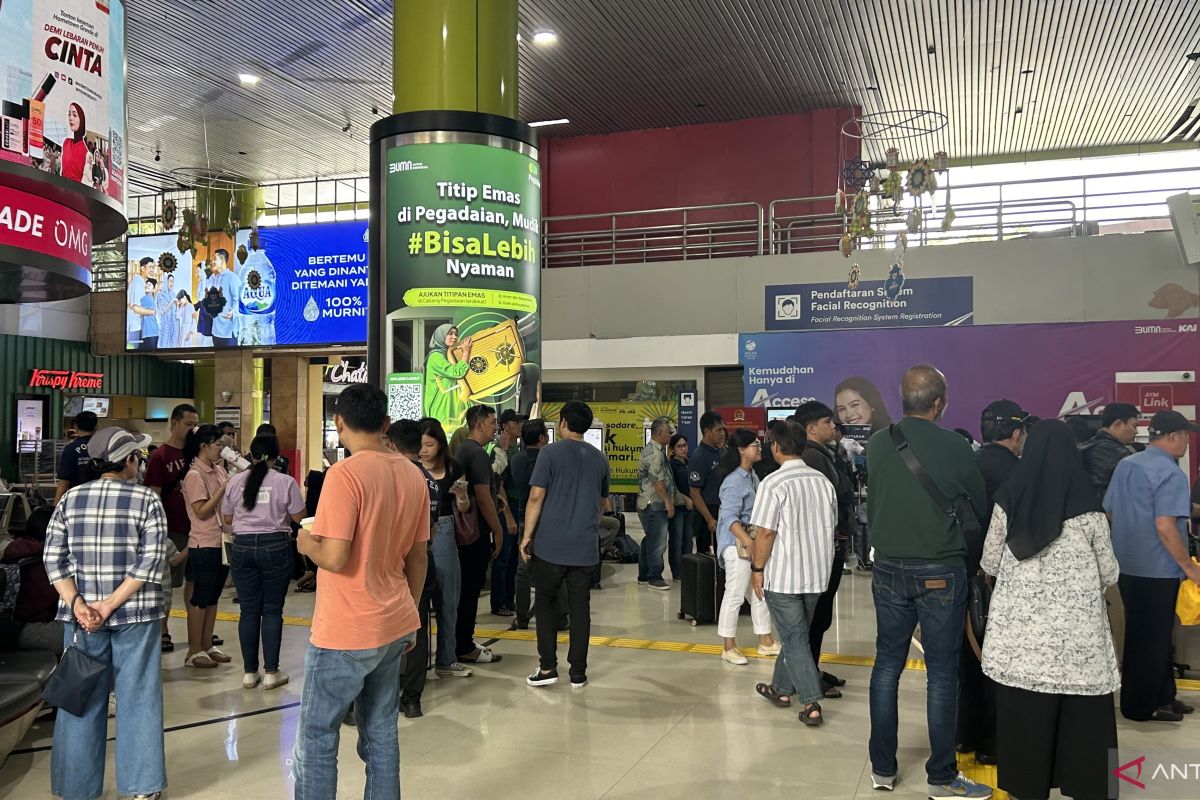
Hari ini, para penumpang kereta api yang berangkat dari Stasiun Gambir akan mendapatkan pengalaman yang berbeda. Sebanyak 11 kereta api akan singgah di Stasiun Jatinegara, memberikan kemudahan bagi para penumpang yang tujuannya berada di sekitar wilayah tersebut.
Kedatangan 11 kereta api tersebut diharapkan dapat memberikan pilihan yang lebih luas bagi para penumpang untuk mencapai tujuan mereka dengan lebih efisien. Selain itu, hal ini juga akan membantu mengurangi kepadatan penumpang di Stasiun Gambir, sehingga proses perjalanan menjadi lebih lancar dan nyaman.
Stasiun Jatinegara sendiri merupakan salah satu stasiun yang cukup ramai dan strategis di Jakarta. Dengan adanya kedatangan 11 kereta api dari Stasiun Gambir, diharapkan dapat memberikan dampak positif bagi peningkatan mobilitas masyarakat yang tinggal di sekitar wilayah Jatinegara.
Para penumpang yang akan menggunakan layanan kereta api ini diimbau untuk mematuhi protokol kesehatan yang telah ditetapkan, seperti memakai masker, menjaga jarak, dan mencuci tangan secara teratur. Dengan demikian, perjalanan mereka pun akan menjadi lebih aman dan nyaman.
Dengan adanya keberangkatan 11 kereta api dari Stasiun Gambir yang akan singgah di Stasiun Jatinegara, diharapkan dapat memberikan kemudahan bagi para penumpang dalam melakukan perjalanan mereka. Semoga dengan adanya langkah ini, mobilitas masyarakat dapat semakin meningkat dan memberikan dampak positif bagi perkembangan transportasi kereta api di Indonesia.

Roberto Cavalli adalah seorang desainer mode asal Italia yang dikenal dengan gaya fesyennya yang glamor, sensual, dan mewah. Ia telah menjadi salah satu ikon dalam dunia mode selama puluhan tahun, dan terus menghadirkan inovasi-inovasi baru dalam setiap koleksinya.
Salah satu inovasi yang paling terkenal dari Roberto Cavalli adalah teknik cetakan hewan yang menjadi ciri khasnya. Ia sering menggunakan motif hewan seperti macan tutul, zebra, dan ular dalam desain pakaian dan aksesori, memberikan sentuhan eksotis dan berani pada setiap koleksinya.
Selain itu, Roberto Cavalli juga dikenal dengan penggunaan bahan-bahan yang berkualitas tinggi dan detail-detail yang rumit dalam setiap kreasinya. Ia sering menggunakan kain sutra, bulu, dan payet untuk menciptakan pakaian yang mewah dan mengesankan.
Tak hanya itu, Roberto Cavalli juga sering menggabungkan elemen-elemen tradisional Italia dengan sentuhan modern dalam desainnya. Ia sering memadukan warna-warna cerah dan cetakan yang mencolok dengan potongan yang elegan dan feminin, menciptakan gaya yang unik dan berbeda dari desainer-desainer lainnya.
Melalui inovasi-inovasinya dalam fesyen, Roberto Cavalli telah berhasil membangun sebuah merek yang sangat dihormati dan diakui di seluruh dunia. Ia terus berusaha untuk menghadirkan koleksi-koleksi yang menarik dan berbeda setiap musimnya, dan terus menjadi salah satu desainer paling dicari oleh para selebriti dan pecinta mode di seluruh dunia.

Stres adalah reaksi alami tubuh terhadap tekanan atau tuntutan yang dialami seseorang. Stres bisa terjadi karena berbagai faktor, seperti pekerjaan, hubungan sosial, atau masalah keuangan. Jika tidak diatasi dengan baik, stres bisa berdampak buruk pada kesehatan fisik dan mental seseorang.
Untuk mengatasi stres, perlu adanya perawatan diri yang direkomendasikan oleh ahli. Perawatan diri ini bertujuan untuk membantu seseorang mengelola stres dan meningkatkan kesejahteraan secara keseluruhan. Beberapa perawatan diri yang direkomendasikan ahli untuk mengatasi stres antara lain:
1. Olahraga secara teratur
Olahraga adalah cara yang efektif untuk mengurangi stres dan meningkatkan mood seseorang. Berbagai jenis olahraga, seperti jogging, bersepeda, atau yoga, bisa membantu mengurangi tingkat hormon stres dalam tubuh.
2. Beristirahat yang cukup
Kurang tidur atau kurang istirahat bisa membuat seseorang lebih rentan terhadap stres. Oleh karena itu, penting untuk memastikan bahwa seseorang mendapatkan istirahat yang cukup setiap hari.
3. Menjaga pola makan yang sehat
Makan makanan sehat dan seimbang juga dapat membantu mengurangi stres. Hindari makanan yang tinggi gula dan lemak jenuh, dan pilih makanan yang kaya akan serat, vitamin, dan mineral.
4. Bermeditasi atau berolah pikir
Meditasi atau berolah pikir adalah cara yang efektif untuk meredakan stres dan meningkatkan konsentrasi seseorang. Dengan berlatih meditasi secara teratur, seseorang dapat belajar untuk mengendalikan pikiran dan emosinya.
5. Menjaga hubungan sosial yang sehat
Hubungan sosial yang baik dengan orang-orang di sekitar dapat membantu mengurangi stres dan memberikan dukungan emosional. Carilah waktu untuk berkumpul dengan teman atau keluarga, dan berbagi cerita atau masalah yang sedang dihadapi.
Perawatan diri yang direkomendasikan oleh ahli dapat membantu seseorang mengatasi stres dan meningkatkan kesejahteraan secara keseluruhan. Penting untuk memprioritaskan perawatan diri ini dalam kehidupan sehari-hari, agar seseorang dapat mengatasi stres dengan lebih baik dan menjalani hidup dengan lebih bahagia dan sehat.

Kereta Api Wisata yang menghubungkan Stasiun Tawang dan Museum Kereta Api Ambarawa di Jawa Tengah menjadi salah satu pilihan transportasi favorit bagi para pemudik yang pulang kampung saat Lebaran. Hal ini terlihat dari antusiasme dan minat yang tinggi dari para pengunjung yang memadati kereta api tersebut.
Museum Kereta Api Ambarawa merupakan salah satu destinasi wisata yang populer di daerah tersebut. Museum ini menawarkan pengalaman unik bagi pengunjung untuk melihat berbagai koleksi kereta api antik yang dipajang di dalamnya. Selain itu, pengunjung juga dapat menaiki kereta api wisata untuk menikmati pemandangan indah sekitar Ambarawa.
Dengan adanya Kereta Api Wisata yang menghubungkan Stasiun Tawang dan Museum Kereta Api Ambarawa, para pemudik memiliki alternatif transportasi yang nyaman dan menarik. Mereka dapat menikmati perjalanan yang berbeda dari biasanya sambil menikmati keindahan alam sepanjang perjalanan.
Tidak heran jika Museum Kereta Api Ambarawa sering dipadati oleh para pemudik saat musim Lebaran. Mereka ingin menikmati liburan mereka dengan mengunjungi tempat wisata yang menarik dan unik seperti museum ini. Selain itu, kereta api juga dianggap sebagai sarana transportasi yang aman dan nyaman bagi mereka yang ingin pulang kampung.
Dengan adanya antusiasme dan minat yang tinggi dari para pemudik, Museum Kereta Api Ambarawa dapat menjadi destinasi wisata yang menarik dan ramai dikunjungi tidak hanya saat Lebaran, tetapi juga di hari-hari biasa. Hal ini tentu menjadi kabar baik bagi pengelola museum dan pemerintah setempat untuk terus mempromosikan dan mengembangkan pariwisata di daerah Ambarawa.

Media sosial telah menjadi bagian penting dalam kehidupan sehari-hari banyak orang di seluruh dunia. Namun, penggunaan media sosial juga dapat memberikan dampak negatif, salah satunya adalah meningkatkan tingkat stres seseorang. Hal ini disebabkan oleh berbagai faktor, seperti tekanan untuk terus tampil sempurna di dunia maya, perbandingan diri dengan orang lain, dan konten negatif yang seringkali tersebar di media sosial.
Untuk itu, penting bagi kita untuk menekan dampak penggunaan media sosial terhadap tingkat stres. Berikut adalah beberapa kiat yang dapat membantu kita mengatasi stres yang disebabkan oleh media sosial:
1. Batasi waktu penggunaan media sosial
Salah satu cara terbaik untuk mengurangi stres yang disebabkan oleh media sosial adalah dengan membatasi waktu penggunaan. Tentukan waktu khusus untuk menggunakan media sosial dan pastikan untuk tidak melebihi batas waktu yang telah ditetapkan.
2. Berhenti membandingkan diri dengan orang lain
Seringkali kita merasa stres karena terlalu membandingkan diri dengan orang lain di media sosial. Ingatlah bahwa setiap orang memiliki kehidupan yang berbeda dan hanya menampilkan sisi terbaik dari kehidupan mereka di media sosial. Fokuslah pada diri sendiri dan berhenti membandingkan diri dengan orang lain.
3. Hindari konten negatif
Banyak konten negatif yang tersebar di media sosial, mulai dari berita yang menakutkan hingga komentar negatif dari orang lain. Hindarilah konten-konten yang dapat memicu stres dan cobalah untuk mengikuti akun-akun yang memberikan dampak positif bagi pikiran dan perasaan Anda.
4. Gunakan media sosial dengan bijak
Terakhir, gunakan media sosial dengan bijak dan sadar akan dampaknya terhadap kesehatan mental Anda. Jika merasa stres atau cemas setelah menggunakan media sosial, cobalah untuk mengambil jeda sejenak dan melakukan aktivitas yang dapat merilekskan pikiran Anda, seperti meditasi atau olahraga.
Dengan menerapkan kiat-kiat di atas, diharapkan kita dapat menekan dampak penggunaan media sosial terhadap tingkat stres yang kita alami. Ingatlah bahwa kesehatan mental kita sama pentingnya dengan kesehatan fisik, dan menjaga keseimbangan dalam menggunakan media sosial dapat membantu kita meraih kedamaian pikiran dan hati. Semoga artikel ini bermanfaat bagi Anda.

Semarang, kota yang terletak di pesisir utara Pulau Jawa, tidak hanya terkenal dengan bangunan-bangunan bersejarahnya yang indah, tetapi juga dengan kuliner-kuliner lezat yang menjadi ciri khasnya. Salah satu makanan legendaris yang wajib dicicipi saat berkunjung ke Semarang adalah lunpia.
Lunpia merupakan sejenis lumpia yang terbuat dari campuran rebung, udang, daging ayam, telur, dan rempah-rempah yang dibungkus dengan kulit lumpia yang tipis. Lunpia ini kemudian digoreng hingga matang dan disajikan dengan saus kacang yang gurih. Rasanya yang gurih, renyah, dan sedikit manis membuat lunpia menjadi camilan yang sangat disukai oleh banyak orang.
Di Semarang, terdapat beberapa tempat yang terkenal dengan lunpia legendarisnya. Salah satunya adalah Toko Oen, sebuah restoran tua yang telah berdiri sejak tahun 1936. Lunpia yang disajikan di Toko Oen terkenal dengan rasa yang autentik dan kualitas bahan yang terjamin. Selain Toko Oen, ada juga tempat lain seperti Lunpia Gang Lombok dan Lunpia Mbak Lin yang juga menyajikan lunpia yang lezat.
Selain rasanya yang enak, lunpia juga memiliki keunikan tersendiri dalam penyajiannya. Biasanya lunpia disajikan dengan cara digulung dan dipotong-potong menjadi beberapa bagian kecil sebelum disantap. Hal ini membuat lunpia menjadi camilan yang cocok untuk dinikmati saat santai bersama keluarga atau teman-teman.
Jadi, jika Anda sedang berkunjung ke Semarang, jangan lupa untuk mencicipi lunpia legendaris yang hanya bisa Anda temukan di kota ini. Rasakan sensasi gurih dan renyahnya lunpia Semarang yang akan membuat perut Anda terpuaskan. Selamat menikmati!

Pesona Pulau Pari, alternatif menikmati libur Lebaran
Hari Lebaran merupakan momen yang sangat dinantikan oleh umat Muslim di seluruh dunia. Setelah sebulan penuh menjalani ibadah puasa, saatnya untuk merayakan kemenangan dengan berkumpul bersama keluarga dan kerabat. Bagi sebagian orang, libur Lebaran biasanya dihabiskan dengan berkumpul di rumah bersama keluarga, namun bagi yang ingin mencari pengalaman yang berbeda, Pulau Pari bisa menjadi alternatif menarik untuk menghabiskan libur Lebaran.
Pulau Pari merupakan salah satu pulau kecil yang terletak di Kepulauan Seribu, Jakarta. Meskipun ukurannya kecil, Pulau Pari memiliki pesona alam yang memukau. Pantainya yang bersih dan air laut yang jernih membuat Pulau Pari menjadi destinasi yang cocok untuk menikmati liburan Lebaran. Selain itu, Pulau Pari juga terkenal dengan keberagaman hayati bawah lautnya yang mempesona. Para pengunjung bisa melakukan snorkeling atau diving untuk menikmati keindahan terumbu karang dan berbagai jenis ikan yang hidup di perairan sekitar Pulau Pari.
Selain menikmati keindahan alamnya, Pulau Pari juga menawarkan berbagai aktivitas seru lainnya seperti bersepeda mengelilingi pulau, berkeliling dengan perahu kaca, atau sekadar bersantai di pinggir pantai sambil menikmati angin sepoi-sepoi. Tak hanya itu, untuk menyempurnakan liburan Lebaran Anda, Pulau Pari juga memiliki berbagai penginapan mulai dari homestay hingga resort yang siap memanjakan para pengunjung.
Untuk menuju Pulau Pari, Anda bisa menggunakan kapal feri dari Marina Ancol, Jakarta. Perjalanan menuju Pulau Pari memakan waktu sekitar 1-2 jam tergantung kondisi cuaca dan arus laut. Namun, jangan khawatir karena perjalanan yang terasa sedikit menantang ini akan terbayar lunas dengan keindahan Pulau Pari yang memukau.
Jadi, bagi Anda yang ingin mencari pengalaman liburan yang berbeda di hari Lebaran, Pulau Pari bisa menjadi pilihan yang tepat. Nikmati keindahan alamnya, rasakan kedamaian yang ditawarkan, dan habiskan waktu bersama keluarga tercinta di Pulau Pari. Selamat menikmati liburan Lebaran!

Ahli Kesehatan Sebut Kondisi Tidak Boleh Dipaksakan Usai Libur Lebaran
Libur Lebaran merupakan momen yang dinantikan oleh banyak orang untuk berkumpul dengan keluarga, merayakan hari raya, dan juga untuk berlibur. Namun, setelah liburan selesai, seringkali banyak orang merasa sulit untuk kembali ke rutinitas sehari-hari. Hal ini dapat berdampak buruk pada kesehatan, jika kondisi tersebut dipaksakan.
Menurut ahli kesehatan, kondisi tubuh yang lelah dan stres setelah libur Lebaran perlu diakui dan diterima. Hal ini karena tubuh membutuhkan waktu untuk pulih dan kembali beradaptasi dengan rutinitas sehari-hari. Jika kondisi tersebut dipaksakan, dapat menyebabkan masalah kesehatan seperti kelelahan, stres, dan penurunan kinerja.
Oleh karena itu, ahli kesehatan menyarankan untuk memberikan waktu yang cukup bagi tubuh untuk pulih setelah libur Lebaran. Berikut beberapa tips yang dapat dilakukan untuk membantu tubuh pulih dan kembali beradaptasi dengan rutinitas sehari-hari:
1. Istirahat yang cukup: Pastikan untuk memberikan waktu yang cukup bagi tubuh untuk istirahat. Tidur yang cukup dapat membantu tubuh pulih dan mengembalikan energi yang hilang selama liburan.
2. Makan makanan sehat: Konsumsi makanan sehat dan bergizi untuk membantu tubuh pulih dan mendapatkan energi yang cukup.
3. Berolahraga secara teratur: Melakukan olahraga secara teratur dapat membantu tubuh pulih dan meningkatkan energi.
4. Kelola stres dengan baik: Temukan cara yang efektif untuk mengelola stres, seperti meditasi, yoga, atau aktivitas yang membuat Anda rileks.
Dengan memberikan waktu yang cukup bagi tubuh untuk pulih dan kembali beradaptasi dengan rutinitas sehari-hari, Anda dapat mencegah masalah kesehatan yang mungkin timbul setelah libur Lebaran. Ingatlah bahwa kesehatan adalah hal yang paling berharga, jadi janganlah memaksakan kondisi tubuh Anda setelah libur Lebaran. Semoga tips di atas dapat membantu Anda dalam menjaga kesehatan dan kembali beraktivitas dengan energi yang maksimal.

Berkemah di Puncak Bogor jadi pilihan warga habiskan libur Lebaran
Setelah menunaikan ibadah puasa selama sebulan penuh, umat Muslim merayakan hari raya Idul Fitri atau Lebaran. Libur panjang yang biasanya dihabiskan dengan berkumpul bersama keluarga dan kerabat ini, kini semakin banyak yang memilih untuk menghabiskannya dengan berkemah di alam terbuka.
Salah satu destinasi favorit untuk berkemah adalah Puncak Bogor. Lokasi ini terkenal dengan udara sejuk dan pemandangan alam yang indah, menjadikannya tempat yang cocok untuk melepas penat setelah menjalani rutinitas sehari-hari.
Banyak warga yang memilih untuk berkemah di Puncak Bogor sebagai alternatif liburan Lebaran. Mereka membawa tenda dan peralatan camping lainnya untuk menginap di alam terbuka selama beberapa hari. Selain itu, mereka juga bisa menikmati keindahan alam sekitar, seperti hamparan kebun teh yang hijau, hutan pinus yang rindang, dan sungai yang jernih.
Selain itu, berkemah di Puncak Bogor juga memberikan pengalaman yang berbeda dibandingkan dengan liburan konvensional. Para peserta camping bisa belajar untuk mandiri, mengasah keterampilan bertahan di alam liar, dan merasakan kebebasan yang tidak bisa didapatkan di kota.
Tidak hanya itu, berkemah di Puncak Bogor juga memberikan kesempatan untuk mendekatkan diri dengan alam dan meningkatkan rasa syukur terhadap ciptaan Tuhan. Melihat keindahan alam yang masih alami dan segar, membuat para peserta camping semakin menghargai keberadaan alam ini.
Dengan demikian, berkemah di Puncak Bogor bukan hanya sekadar pilihan liburan, namun juga merupakan cara yang baik untuk menyegarkan pikiran dan jiwa setelah menjalani ibadah puasa selama sebulan penuh. Semoga kegiatan berkemah ini dapat memberikan manfaat positif bagi para pesertanya dan semakin menguatkan rasa persaudaraan di antara umat Muslim. Selamat berkemah di Puncak Bogor dan selamat merayakan Lebaran!

Setelah berhari-hari menikmati hidangan lezat selama perayaan Lebaran, banyak dari kita mungkin merasa sulit untuk kembali ke pola makan sehat. Namun, penting untuk diingat bahwa kesehatan tubuh harus tetap menjadi prioritas utama, terutama dalam menjaga kadar kolesterol yang seimbang.
Salah satu cara yang dapat dilakukan untuk menjaga kolesterol tetap sehat setelah Lebaran adalah dengan menghindari konsumsi daging dan gorengan secara berlebihan. Daging merah dan makanan yang digoreng umumnya mengandung lemak jenuh dan kolesterol tinggi, yang dapat meningkatkan risiko penyakit jantung dan masalah kesehatan lainnya.
Sebagai gantinya, lebih disarankan untuk mengonsumsi makanan yang rendah lemak dan kolesterol, seperti sayuran, buah-buahan, dan protein nabati. Anda juga dapat memilih untuk mengganti daging merah dengan ikan yang kaya akan asam lemak omega-3, yang dapat membantu menurunkan kadar kolesterol dalam tubuh.
Selain itu, penting untuk tetap aktif dan berolahraga secara teratur setelah Lebaran. Berjalan kaki, bersepeda, atau berenang merupakan cara yang efektif untuk membakar lemak dan menjaga kesehatan jantung. Jangan lupa juga untuk minum air putih yang cukup, karena hidrasi yang cukup juga dapat membantu menjaga kadar kolesterol tetap seimbang.
Dengan mengikuti tips-tips di atas, kita dapat menjaga kolesterol tetap terjaga setelah liburan Lebaran. Jangan lupa untuk tetap konsisten dalam menjaga pola makan sehat dan gaya hidup aktif, agar kita dapat tetap sehat dan bugar dalam jangka panjang. Semoga artikel ini bermanfaat bagi kita semua. Terima kasih.
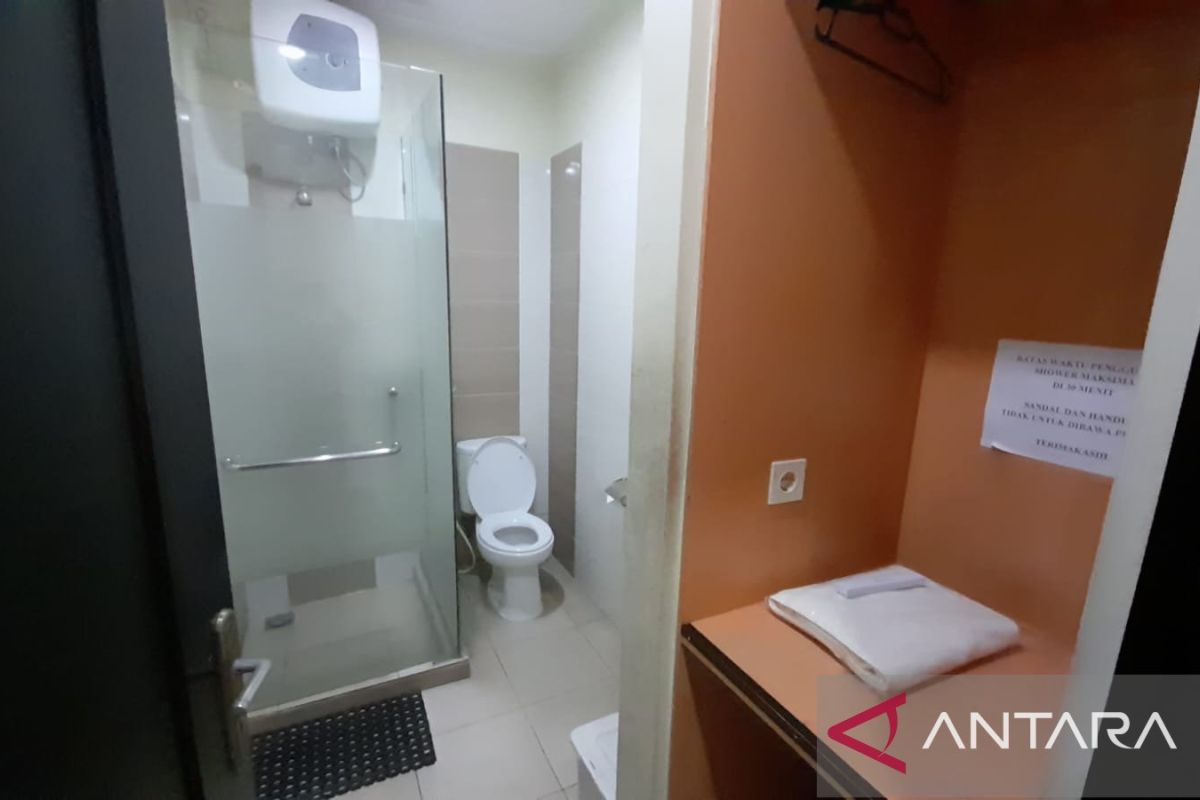
Fasilitas shower dan locker merupakan salah satu fasilitas yang sangat dibutuhkan oleh para penumpang kereta api, terutama bagi mereka yang melakukan perjalanan jauh dan membutuhkan tempat untuk bersih-bersih dan meletakkan barang bawaan mereka. Stasiun Gambir, salah satu stasiun kereta api terbesar di Jakarta, menyediakan fasilitas shower dan locker untuk memenuhi kebutuhan para penumpangnya.
Fasilitas shower yang disediakan di Stasiun Gambir ini sangatlah praktis dan nyaman. Para penumpang cukup membayar mulai dari Rp50 ribu untuk mendapatkan akses ke ruang shower yang dilengkapi dengan air panas dan dingin, serta perlengkapan mandi seperti sabun, sampo, dan handuk. Dengan fasilitas ini, para penumpang dapat membersihkan diri mereka sebelum atau setelah melakukan perjalanan kereta api, sehingga mereka tetap merasa segar dan nyaman selama perjalanan.
Selain itu, Stasiun Gambir juga menyediakan fasilitas locker untuk para penumpang yang membutuhkan tempat untuk menyimpan barang bawaan mereka sementara waktu. Para penumpang dapat menyewa locker dengan harga mulai dari Rp50 ribu untuk beberapa jam atau bahkan seharian penuh. Dengan adanya fasilitas locker ini, para penumpang tidak perlu khawatir akan keamanan barang bawaan mereka selama berada di stasiun atau melakukan perjalanan kereta api.
Dengan adanya fasilitas shower dan locker di Stasiun Gambir, para penumpang kereta api kini dapat lebih nyaman dan aman selama melakukan perjalanan mereka. Dengan harga yang terjangkau, fasilitas ini menjadi pilihan yang tepat bagi para penumpang yang membutuhkan tempat untuk bersih-bersih dan meletakkan barang bawaan mereka. Jadi, bagi Anda yang akan melakukan perjalanan kereta api dari Stasiun Gambir, jangan ragu untuk menggunakan fasilitas shower dan locker yang tersedia di sana.

Makanan sehat sangat penting untuk pertumbuhan dan perkembangan anak-anak. Nutrisi yang cukup dan seimbang akan membantu menjaga kesehatan mereka serta meningkatkan daya tahan tubuh. Berikut adalah lima tips penting untuk memberikan makanan sehat bagi anak-anak:
1. Pilihlah makanan yang kaya akan nutrisi
Pastikan anak-anak mendapatkan makanan yang kaya akan nutrisi seperti sayuran, buah-buahan, biji-bijian, protein, dan produk susu. Hindari makanan yang tinggi gula, garam, dan lemak jenuh yang dapat membahayakan kesehatan mereka.
2. Sediakan makanan yang beragam
Variasi makanan sangat penting untuk memastikan anak-anak mendapatkan nutrisi yang cukup. Sediakan makanan yang beragam dan warna-warni agar mereka mendapatkan berbagai macam vitamin dan mineral yang diperlukan untuk pertumbuhan mereka.
3. Batasi konsumsi makanan olahan
Makanan olahan mengandung banyak bahan tambahan seperti pengawet, pemanis, dan pewarna yang dapat berdampak buruk pada kesehatan anak-anak. Sebisa mungkin, berikan makanan segar dan alami untuk memastikan mereka mendapatkan nutrisi yang terbaik.
4. Libatkan anak dalam proses memasak
Mengajak anak-anak untuk ikut memasak dapat membantu mereka lebih memahami pentingnya makanan sehat. Mereka juga akan lebih tertarik untuk mencoba makanan yang mereka buat sendiri. Berikan mereka kesempatan untuk memilih bahan makanan yang mereka suka dan ikut serta dalam proses memasak.
5. Berikan contoh yang baik
Sebagai orang tua, Anda menjadi contoh yang penting bagi anak-anak dalam hal pola makan sehat. Pastikan Anda juga memperhatikan pola makan dan memberikan contoh yang baik bagi mereka. Hindari makanan cepat saji atau makanan yang tidak sehat di depan mereka agar mereka tidak terpengaruh.
Dengan memberikan makanan sehat dan bergizi bagi anak-anak, Anda dapat membantu mereka tumbuh menjadi anak yang sehat dan kuat. Selalu ingat untuk memberikan contoh yang baik dan mengajak mereka untuk terlibat dalam proses memasak agar mereka lebih memahami pentingnya makanan sehat. Semoga lima tips penting ini dapat membantu Anda memberikan nutrisi yang terbaik bagi anak-anak.

Bali Made’s Warung Jakarta adalah salah satu restoran yang menyajikan hidangan autentik Bali di tengah hiruk pikuk ibu kota Jakarta. Dengan konsep yang memadukan nuansa tradisional Bali dan kenyamanan perkotaan, tempat ini menjadi destinasi favorit bagi pecinta kuliner yang ingin menikmati hidangan khas Bali tanpa perlu berpergian jauh.
Salah satu hal yang membuat Bali Made’s Warung Jakarta semakin menarik adalah promo yang ditawarkan, khususnya bagi pemegang kartu BRI. Dengan promo ini, pengunjung dapat menikmati hidangan lezat dengan harga yang lebih terjangkau. Dengan begitu, tidak perlu khawatir akan merogoh kocek terlalu dalam untuk menikmati sajian autentik Bali yang lezat.
Menu-menu yang ditawarkan di Bali Made’s Warung Jakarta juga tidak kalah menggugah selera. Mulai dari nasi campur Bali, ayam betutu, bebek goreng, hingga sate lilit, semua hidangan disajikan dengan cita rasa yang autentik dan khas Bali. Ditambah lagi dengan suasana restoran yang nyaman dan dekorasi yang menghadirkan nuansa Bali yang sejati, pengalaman makan di sini semakin lengkap dan memuaskan.
Selain itu, Bali Made’s Warung Jakarta juga sering mengadakan acara-acara spesial seperti live music dan event-event khusus untuk menambah keseruan saat menikmati hidangan di sini. Dengan begitu, pengunjung tidak hanya bisa menikmati hidangan lezat, tetapi juga bisa menikmati hiburan yang mengasyikkan.
Jadi, bagi Anda yang ingin menikmati hidangan autentik Bali tanpa harus pergi jauh ke pulau dewata, jangan lewatkan kesempatan untuk menikmati promo menarik dari Bali Made’s Warung Jakarta dengan kartu BRI. Rasakan sensasi kuliner Bali yang otentik di tengah keramaian ibu kota Jakarta dan buat pengalaman kuliner Anda semakin berkesan.

Pedagang dekat Stasiun Pasar Senen raih pendapatan dobel saat Lebaran
Lebaran merupakan momen yang sangat dinanti-nanti oleh masyarakat Indonesia. Selain sebagai hari raya umat Muslim yang penuh makna, Lebaran juga menjadi waktu yang tepat bagi para pedagang untuk meningkatkan pendapatan mereka. Hal ini juga terjadi di sekitar Stasiun Pasar Senen, di mana para pedagang berhasil meraih pendapatan dobel saat Lebaran tiba.
Para pedagang di sekitar Stasiun Pasar Senen memang dikenal sebagai pedagang yang cerdas dan aktif memanfaatkan momen-momen tertentu untuk meningkatkan penjualan mereka. Hal ini terbukti dengan adanya peningkatan signifikan dalam penjualan mereka selama bulan Ramadhan dan Lebaran.
Salah satu pedagang di sekitar Stasiun Pasar Senen, Ibu Siti, mengatakan bahwa penjualan barang dagangannya meningkat hingga dua kali lipat selama bulan Ramadhan dan Lebaran. Ia juga mengungkapkan bahwa selama bulan puasa, banyak orang yang sibuk dengan persiapan Lebaran sehingga mereka lebih sering membeli barang kebutuhan di sekitar stasiun.
Selain itu, suasana ramai dan penuh keceriaan di sekitar Stasiun Pasar Senen juga memberikan dampak positif bagi para pedagang. Banyak orang yang berbelanja sambil menikmati keramaian dan kehangatan suasana Lebaran di sekitar stasiun. Hal ini membuat para pedagang semakin semangat untuk menawarkan berbagai produk dagangan mereka.
Tak hanya itu, keberadaan Stasiun Pasar Senen yang strategis juga menjadi faktor pendukung peningkatan pendapatan para pedagang. Banyak orang yang melewati stasiun ini setiap harinya, baik untuk bepergian maupun sekadar berbelanja. Hal ini tentu menjadi peluang bagus bagi para pedagang di sekitar stasiun untuk meningkatkan penjualan mereka.
Dengan demikian, dapat disimpulkan bahwa para pedagang di sekitar Stasiun Pasar Senen berhasil meraih pendapatan dobel saat Lebaran tiba. Mereka cerdas memanfaatkan momen-momen tertentu dan memiliki strategi yang tepat untuk meningkatkan penjualan mereka. Semoga keberhasilan ini dapat terus berlanjut dan memberikan dampak positif bagi para pedagang di sekitar Stasiun Pasar Senen.

ASI atau Air Susu Ibu adalah sumber gizi terbaik bagi bayi yang baru lahir. Namun, banyak faktor yang dapat memengaruhi produksi ASI pada ibu menyusui. Beberapa kebiasaan sehari-hari juga dapat berdampak pada persediaan ASI yang dihasilkan oleh ibu.
Salah satu kebiasaan yang dapat memengaruhi persediaan ASI adalah pola makan ibu. Konsumsi makanan yang sehat dan bergizi sangat penting untuk meningkatkan produksi ASI. Ibu menyusui disarankan untuk mengonsumsi makanan yang mengandung protein, vitamin, dan mineral yang cukup. Hindari makanan yang mengandung kafein, alkohol, dan makanan olahan yang berlemak tinggi, karena dapat mengganggu produksi ASI.
Selain itu, kebiasaan minum air yang cukup juga penting untuk menjaga persediaan ASI. Kekurangan cairan dapat menyebabkan penurunan produksi ASI, sehingga ibu disarankan untuk minum air setidaknya 8 gelas sehari. Selain air, konsumsi jus buah dan sayuran juga dapat membantu meningkatkan produksi ASI.
Kebiasaan merokok juga dapat berdampak negatif pada persediaan ASI. Zat-zat berbahaya dalam rokok dapat masuk ke dalam ASI dan berpotensi merusak kesehatan bayi. Oleh karena itu, sangat disarankan bagi ibu menyusui untuk menghindari merokok agar produksi ASI tetap optimal.
Selain kebiasaan di atas, kebiasaan stres dan kurang istirahat juga dapat memengaruhi persediaan ASI. Stress dapat mengganggu hormon prolaktin yang berperan dalam produksi ASI, sehingga penting bagi ibu menyusui untuk menjaga keseimbangan emosi dan menghindari situasi yang dapat menimbulkan stres. Selain itu, istirahat yang cukup juga penting untuk memulihkan tubuh dan meningkatkan produksi ASI.
Dengan menjaga kebiasaan sehari-hari yang sehat dan menghindari kebiasaan yang dapat memengaruhi produksi ASI, ibu menyusui dapat memastikan bahwa persediaan ASI yang dihasilkan cukup untuk memenuhi kebutuhan nutrisi bayi. Jadi, jaga kebiasaan yang baik dan ciptakan lingkungan yang kondusif untuk meningkatkan produksi ASI.

Pantai Ancol telah lama menjadi tempat rekreasi populer di Jakarta, terutama bagi keluarga yang ingin menikmati liburan bersama. Terletak di Utara Jakarta, Pantai Ancol menawarkan berbagai fasilitas dan aktivitas yang dapat dinikmati oleh seluruh anggota keluarga.
Salah satu daya tarik utama Pantai Ancol adalah keberadaan Ancol Dreamland, sebuah kompleks wisata yang menawarkan berbagai wahana dan atraksi menarik. Mulai dari Taman Impian Jaya Ancol, Atlantis Water Adventure, hingga Seaworld, semua dapat dinikmati oleh pengunjung dari segala usia.
Selain itu, Pantai Ancol juga memiliki pantai yang indah dan bersih, di mana pengunjung dapat bermain pasir, berjemur, atau berenang. Terdapat juga berbagai restoran dan warung makan yang menyajikan berbagai jenis kuliner lezat, mulai dari makanan laut segar hingga makanan khas Indonesia.
Bagi keluarga yang ingin menginap, Pantai Ancol juga menyediakan berbagai pilihan akomodasi, mulai dari hotel bintang lima hingga penginapan yang lebih ekonomis. Dengan pemandangan laut yang indah dan suasana yang menyenangkan, menginap di Pantai Ancol akan membuat liburan keluarga semakin berkesan.
Selain itu, Pantai Ancol juga mudah diakses dari berbagai tempat di Jakarta, baik dengan kendaraan pribadi maupun transportasi umum. Sehingga tidak heran jika Pantai Ancol menjadi pilihan utama bagi keluarga yang ingin menghabiskan waktu bersama di tengah kesibukan ibu kota.
Dengan segala fasilitas dan aktivitas menarik yang ditawarkan, Pantai Ancol memang menjadi destinasi wisata yang sempurna bagi keluarga di Jakarta. Jadi, jangan ragu untuk mengunjungi Pantai Ancol bersama keluarga Anda dan buatlah momen liburan yang tak terlupakan di sana.

Setelah libur panjang akibat pandemi Covid-19, anak-anak akhirnya akan kembali ke sekolah dalam waktu dekat. Untuk itu, orangtua perlu mempersiapkan ketahanan fisik anak agar mereka siap kembali ke lingkungan sekolah.
Pandemi Covid-19 telah memberikan dampak yang cukup besar terhadap kehidupan sehari-hari, termasuk pada pola belajar anak-anak. Mulai dari belajar dari rumah hingga kurangnya aktivitas fisik yang cukup dapat mempengaruhi kondisi kesehatan anak-anak. Oleh karena itu, penting bagi orangtua untuk memastikan anak-anak memiliki ketahanan fisik yang cukup kuat sebelum kembali ke sekolah.
Salah satu cara untuk mempersiapkan ketahanan fisik anak adalah dengan memberikan pola makan yang sehat dan bergizi. Pastikan anak-anak mendapatkan asupan nutrisi yang cukup, seperti protein, karbohidrat, lemak, vitamin, dan mineral. Jenis makanan yang sebaiknya dikonsumsi adalah buah-buahan, sayuran, daging, telur, dan produk susu.
Selain itu, penting juga untuk mengajak anak-anak berolahraga secara teratur. Meskipun masih ada pembatasan untuk melakukan aktivitas di luar rumah, namun masih banyak pilihan olahraga yang bisa dilakukan di dalam rumah, seperti senam, yoga, atau bersepeda statis. Berolahraga secara teratur dapat meningkatkan daya tahan tubuh anak dan menjaga kesehatan fisik mereka.
Selain pola makan dan olahraga, tidur yang cukup juga sangat penting bagi kesehatan fisik anak. Pastikan anak-anak mendapatkan waktu tidur yang cukup setiap harinya, minimal 8 jam untuk anak usia sekolah. Tidur yang cukup dapat membantu tubuh anak pulih dan memperkuat sistem kekebalan tubuh.
Dengan mempersiapkan ketahanan fisik anak sejak dini, diharapkan mereka dapat kembali ke lingkungan sekolah dengan kondisi fisik yang prima. Selain itu, orangtua juga perlu mengingatkan anak-anak untuk tetap menjaga kebersihan dan kesehatan, seperti mencuci tangan dengan sabun secara teratur, menggunakan masker, dan menjaga jarak fisik dengan orang lain. Semoga anak-anak dapat kembali ke sekolah dengan selamat dan tetap sehat!

Lebaran sudah semakin dekat, dan tentu saja hal yang tidak boleh terlewatkan adalah membawa oleh-oleh untuk keluarga dan teman-teman di kampung halaman. Oleh-oleh Lebaran merupakan salah satu tradisi yang sudah menjadi bagian dari budaya Indonesia, sebagai bentuk kebahagiaan dan rasa sayang kita kepada orang-orang terdekat.
Namun, seringkali kita bingung dalam memilih oleh-oleh yang tepat untuk dibawa pulang. Agar tidak salah pilih dan dapat memberikan kebahagiaan bagi penerima oleh-oleh, berikut adalah beberapa kiat membawa pulang oleh-oleh Lebaran yang bisa menjadi panduan Anda:
1. Pertimbangkan selera penerima
Sebelum membeli oleh-oleh, pertimbangkan selera dan kebutuhan penerima. Apakah mereka lebih suka kue-kue kering, cokelat, atau mungkin souvenir khas daerah tertentu. Dengan mempertimbangkan selera penerima, Anda dapat memilih oleh-oleh yang benar-benar disukai dan bermanfaat bagi mereka.
2. Pilih oleh-oleh yang mudah dibawa
Saat memilih oleh-oleh, pastikan untuk memilih produk yang mudah dibawa dan tidak mudah rusak. Hindari produk-produk yang mudah meleleh atau pecah, karena hal ini dapat menyebabkan kerugian dan ketidaknyamanan bagi penerima oleh-oleh.
3. Pilih oleh-oleh yang berkualitas
Kualitas produk juga merupakan hal yang penting dalam memilih oleh-oleh. Pastikan untuk memilih produk yang berkualitas baik dan tidak mengandung bahan berbahaya. Dengan memilih oleh-oleh yang berkualitas, Anda akan memberikan kesan yang baik dan menyenangkan bagi penerima oleh-oleh.
4. Beli oleh-oleh sesuai dengan budget
Sebelum berbelanja oleh-oleh, tentukan budget yang akan Anda gunakan. Hindari membeli oleh-oleh dengan harga yang terlalu mahal dan melebihi budget yang telah ditentukan. Pilihlah oleh-oleh yang sesuai dengan budget Anda, namun tetap berkualitas dan bermanfaat bagi penerima.
Dengan mengikuti kiat di atas, Anda dapat membawa pulang oleh-oleh Lebaran yang tepat dan menyenangkan bagi keluarga dan teman-teman di kampung halaman. Semoga artikel ini dapat membantu Anda dalam memilih oleh-oleh yang sesuai dan memberikan kebahagiaan bagi orang-orang terdekat. Selamat berbelanja dan selamat Hari Raya Idul Fitri!

Manfaat “tidur singkat” bagi kesehatan selama ikuti arus mudik
Mudik merupakan tradisi yang telah menjadi bagian dari budaya Indonesia. Setiap tahun, jutaan orang melakukan perjalanan mudik untuk berkumpul dengan keluarga di kampung halaman. Namun, perjalanan mudik yang panjang dan melelahkan seringkali membuat kita kekurangan waktu untuk istirahat yang cukup.
Di tengah kesibukan mudik, seringkali kita hanya memiliki waktu tidur yang singkat. Namun, tahukah Anda bahwa tidur singkat sebenarnya juga memiliki manfaat bagi kesehatan? Meskipun tidak seideal tidur yang cukup selama 7-9 jam, tidur singkat dapat membantu mengurangi rasa lelah dan meningkatkan kewaspadaan saat melakukan perjalanan mudik yang jauh.
Salah satu manfaat tidur singkat adalah meningkatkan daya tahan tubuh. Saat kita tidur, tubuh akan melakukan proses regenerasi sel-sel yang rusak selama aktivitas seharian. Meskipun tidur singkat tidak memberikan waktu yang cukup bagi tubuh untuk pulih sepenuhnya, tetapi istirahat sebentar dapat membantu tubuh untuk tetap berfungsi dengan baik dan mencegah terjadinya kelelahan yang berlebihan.
Selain itu, tidur singkat juga dapat meningkatkan konsentrasi dan fokus saat mengemudi atau melakukan perjalanan mudik. Kondisi tidur yang cukup dapat membuat kita lebih waspada dan responsif terhadap kondisi jalan yang berbeda-beda selama perjalanan. Dengan begitu, risiko kecelakaan dapat diminimalkan dan perjalanan mudik pun menjadi lebih aman.
Namun, meskipun tidur singkat memiliki manfaat bagi kesehatan, tetaplah penting untuk memperhatikan kualitas tidur yang kita dapatkan. Hindari tidur di tempat yang tidak nyaman dan usahakan untuk tetap menjaga pola tidur yang teratur. Jika memungkinkan, sebaiknya tambahkan waktu tidur Anda setelah sampai di tujuan agar tubuh dapat pulih sepenuhnya.
Dengan memperhatikan manfaat tidur singkat bagi kesehatan, kita dapat menjalani perjalanan mudik dengan lebih nyaman dan aman. Jaga kesehatan Anda selama mudik dan selamat sampai di kampung halaman!

Wisata di saluran irigasi mulai ramai dikunjungi saat libur Lebaran tiba. Salah satu destinasi wisata yang menjadi favorit adalah Saluran Irigasi Sungai Citarum di Jawa Barat.
Saluran irigasi yang biasanya digunakan untuk pengairan pertanian ini kini menjadi tempat rekreasi yang menarik bagi para wisatawan. Dengan pemandangan alam yang hijau dan segar, serta air yang mengalir jernih, membuat saluran irigasi ini menjadi tempat yang cocok untuk melepas penat dan menikmati keindahan alam.
Banyak aktivitas yang bisa dilakukan di saluran irigasi ini, seperti berenang, memancing, atau sekadar menikmati pemandangan sambil berjalan-jalan di sepanjang saluran. Para pengunjung juga bisa menikmati kuliner khas daerah sekitar saluran irigasi, seperti ikan bakar dan sayur asem.
Selain Sungai Citarum, terdapat juga beberapa saluran irigasi lainnya yang menjadi destinasi wisata menarik, seperti Saluran Irigasi Sungai Brantas di Jawa Timur dan Saluran Irigasi Sungai Musi di Sumatera Selatan. Keindahan alam dan kebersihan saluran irigasi ini menjadi daya tarik tersendiri bagi para wisatawan.
Namun, perlu diingat bahwa keselamatan dan kebersihan tetap menjadi prioritas utama saat berkunjung ke saluran irigasi. Para pengunjung diharapkan untuk tidak merusak lingkungan sekitar dan menjaga kebersihan saluran irigasi agar tetap terjaga keindahannya.
Jadi, bagi Anda yang ingin menikmati liburan Lebaran dengan suasana alam yang segar dan menenangkan, cobalah untuk mengunjungi saluran irigasi sebagai destinasi wisata alternatif. Selamat menikmati liburan dan jangan lupa untuk menjaga kelestarian alam!

Anak obesitas merupakan masalah kesehatan yang semakin meningkat di Indonesia. Selain berisiko mengalami berbagai penyakit kronis seperti diabetes dan penyakit jantung, anak obesitas juga memiliki risiko tinggi mengalami defisiensi zat besi.
Zat besi merupakan mineral penting yang berperan dalam pembentukan sel darah merah dan transportasi oksigen ke seluruh tubuh. Kekurangan zat besi dapat menyebabkan anemia, gangguan pertumbuhan, dan menurunkan sistem kekebalan tubuh. Anak-anak yang mengalami obesitas cenderung mengonsumsi makanan yang tinggi kalori namun rendah nutrisi, sehingga kebutuhan zat besi mereka seringkali tidak terpenuhi.
Selain itu, anak obesitas juga rentan mengalami gangguan penyerapan zat besi dalam tubuh akibat peradangan kronis yang seringkali terjadi pada kondisi obesitas. Hal ini dapat menyebabkan penurunan kadar zat besi dalam darah dan berpotensi menyebabkan masalah kesehatan lainnya.
Untuk mencegah defisiensi zat besi pada anak obesitas, penting bagi orang tua dan tenaga kesehatan untuk memberikan asupan makanan yang seimbang dan mengandung zat besi yang cukup. Jenis makanan yang kaya akan zat besi antara lain daging merah, ayam, ikan, telur, sayuran berdaun hijau, kacang-kacangan, dan biji-bijian.
Selain itu, penting juga bagi anak obesitas untuk menjalani gaya hidup sehat yang meliputi olahraga teratur dan pengelolaan berat badan yang seimbang. Dengan menjaga pola makan yang sehat dan aktif bergerak, anak obesitas dapat mengurangi risiko defisiensi zat besi dan meningkatkan kesehatan secara keseluruhan.
Diharapkan dengan kesadaran akan pentingnya asupan zat besi pada anak obesitas, kita dapat mencegah masalah kesehatan yang lebih serius di masa depan. Mari jaga pola makan dan gaya hidup sehat untuk anak-anak kita agar tumbuh kembangnya optimal dan terhindar dari berbagai masalah kesehatan.

Samarinda, ibu kota Provinsi Kalimantan Timur, merupakan salah satu destinasi liburan yang menarik di Indonesia. Selama liburan Lebaran, kota ini menawarkan berbagai ragam wahana dan rekreasi yang dapat dinikmati oleh wisatawan dan warga lokal.
Salah satu tempat rekreasi yang populer di Samarinda adalah Taman Budaya Sentosa. Taman ini menawarkan berbagai wahana permainan yang cocok untuk anak-anak dan keluarga. Mulai dari wahana permainan air hingga wahana permainan klasik seperti bianglala dan kereta mini, Taman Budaya Sentosa adalah tempat yang sempurna untuk menghabiskan waktu bersama keluarga selama liburan Lebaran.
Selain itu, wisatawan juga dapat mengunjungi Taman Hutan Raya, sebuah kawasan hutan yang menawarkan trekking dan hiking yang menarik. Dengan udara segar dan pemandangan alam yang menakjubkan, Taman Hutan Raya merupakan tempat yang ideal untuk melepas penat dan menikmati keindahan alam Samarinda.
Bagi yang menyukai belanja, Samarinda juga memiliki berbagai pusat perbelanjaan yang menawarkan berbagai macam produk lokal dan internasional. Mulai dari pusat perbelanjaan modern hingga pasar tradisional, wisatawan dapat menemukan berbagai souvenir dan oleh-oleh khas Samarinda untuk dibawa pulang.
Tak hanya itu, Samarinda juga memiliki kuliner yang lezat dan unik. Wisatawan dapat mencoba berbagai hidangan khas Samarinda seperti nasi kuning, soto banjar, dan papeda. Selain itu, jajanan tradisional seperti kue lapis dan kue cucur juga dapat ditemukan di berbagai warung dan kedai di kota ini.
Dengan berbagai ragam wahana dan rekreasi yang ditawarkan, Samarinda merupakan destinasi liburan yang menarik untuk dikunjungi selama liburan Lebaran. Dengan keindahan alam, budaya, dan kuliner yang unik, Samarinda menawarkan pengalaman liburan yang tak terlupakan bagi wisatawan dan warga lokal. Jadi, jadikan Samarinda sebagai destinasi liburan Anda selama liburan Lebaran tahun ini!

Menurut sebuah studi yang dilakukan oleh para ahli kesehatan, konsumsi ikan sarden dan teri dapat membantu mencegah 750 ribu kematian pada tahun 2050. Ikan sarden dan teri merupakan sumber protein yang sangat baik dan mengandung asam lemak omega-3 yang sangat penting bagi kesehatan jantung.
Studi tersebut menemukan bahwa konsumsi ikan sarden dan teri secara teratur dapat mengurangi risiko penyakit jantung, stroke, dan tekanan darah tinggi. Selain itu, asam lemak omega-3 dalam ikan sarden dan teri juga dapat membantu mengurangi peradangan dalam tubuh dan meningkatkan fungsi otak.
Menurut para ahli, konsumsi ikan sarden dan teri sebaiknya dilakukan minimal dua hingga tiga kali seminggu. Selain itu, disarankan juga untuk memilih ikan sarden dan teri yang segar dan berkualitas tinggi.
Selain bermanfaat bagi kesehatan, konsumsi ikan sarden dan teri juga dapat membantu menjaga keberlanjutan sumber daya laut. Dengan memilih ikan sarden dan teri sebagai pilihan konsumsi, kita juga ikut berkontribusi dalam menjaga kelestarian lingkungan laut.
Dengan demikian, penting bagi kita untuk memperhatikan pola makan kita dan memasukkan ikan sarden dan teri ke dalam menu sehari-hari. Dengan begitu, kita tidak hanya dapat menjaga kesehatan tubuh kita, namun juga ikut berperan dalam menjaga kelestarian lingkungan laut. Semoga informasi ini bermanfaat dan dapat menjadi motivasi bagi kita semua untuk lebih memperhatikan pola makan sehat dan berkelanjutan.

Ancol siap menghadapi lonjakan kunjungan di kawasan pantai dengan menyiapkan delapan pos pantau dan tujuh ambulans. Hal ini dilakukan untuk memastikan keselamatan dan kenyamanan pengunjung yang datang ke Ancol, terutama saat libur panjang atau musim liburan.
Pos pantau akan ditempatkan di berbagai titik strategis di sepanjang pantai Ancol, mulai dari Pantai Karnaval hingga Pantai Festival. Petugas di pos pantau akan memantau situasi di sekitar pantai, termasuk arus lalu lintas, keamanan, dan ketersediaan fasilitas umum. Mereka juga akan siap memberikan bantuan dan informasi kepada pengunjung yang membutuhkan.
Sementara itu, tujuh ambulans juga akan standby di sekitar kawasan pantai untuk memberikan pertolongan cepat dalam hal terjadi kecelakaan atau keadaan darurat lainnya. Dengan adanya ambulans yang siap sedia, diharapkan penanganan korban kecelakaan atau keadaan darurat lainnya dapat dilakukan dengan cepat dan efektif.
Ancol sendiri merupakan salah satu destinasi wisata favorit di Jakarta, terutama bagi warga ibu kota yang ingin menikmati liburan di pantai tanpa harus bepergian jauh. Dengan persiapan yang matang seperti ini, diharapkan pengunjung dapat merasa aman dan nyaman saat berkunjung ke Ancol, sehingga liburan mereka menjadi lebih menyenangkan.
Sebagai pengunjung, kita juga perlu ikut berperan dalam menjaga keamanan dan ketertiban di kawasan pantai Ancol. Mari patuhi aturan yang berlaku, jangan membuang sampah sembarangan, dan selalu menjaga kebersihan lingkungan sekitar. Dengan demikian, kita semua dapat menikmati liburan yang menyenangkan dan aman di Ancol.

Trans Sumatera adalah sebuah jaringan jalan tol yang menghubungkan berbagai provinsi di pulau Sumatera. Selain sebagai jalur transportasi yang memudahkan perjalanan antar provinsi, jalur Trans Sumatera juga menawarkan berbagai destinasi wisata menarik yang patut dikunjungi.
Salah satu destinasi wisata yang sangat populer di jalur Trans Sumatera adalah Danau Toba. Danau Toba adalah danau vulkanik terbesar di dunia yang terletak di Provinsi Sumatera Utara. Danau ini memiliki panorama alam yang memukau dengan air yang jernih dan pemandangan gunung berapi yang mengelilingi danau. Selain itu, Wisatawan juga dapat menikmati berbagai kegiatan seperti berenang, memancing, atau menjelajahi pulau-pulau kecil di sekitar Danau Toba.
Selain Danau Toba, jalur Trans Sumatera juga melewati destinasi wisata lainnya seperti Taman Nasional Gunung Leuser di Provinsi Aceh. Taman Nasional Gunung Leuser merupakan salah satu taman nasional terbesar di Indonesia dan menjadi habitat bagi berbagai jenis flora dan fauna langka seperti orangutan, harimau sumatera, dan gajah sumatera. Wisatawan dapat melakukan trekking atau menjelajahi hutan hujan tropis yang masih alami di Taman Nasional Gunung Leuser.
Selain itu, jalur Trans Sumatera juga melewati destinasi wisata pantai yang indah seperti Pantai Padang di Provinsi Sumatera Barat. Pantai Padang merupakan salah satu pantai terindah di Sumatera yang menawarkan pemandangan sunset yang spektakuler serta ombak yang cocok untuk surfing. Wisatawan juga dapat menikmati berbagai kuliner khas Padang di sekitar pantai.
Dengan berbagai destinasi wisata menarik yang dapat ditemui di jalur Trans Sumatera, tidak ada salahnya untuk menjadikan perjalanan di jalur ini sebagai pengalaman liburan yang tak terlupakan. Jadi, jangan ragu untuk menjelajahi keindahan alam Sumatera melalui jalur Trans Sumatera dan nikmati berbagai destinasi wisata yang ditawarkan.

Lebaran merupakan momen yang sangat dinanti-nanti oleh masyarakat Indonesia. Setelah sebulan penuh berpuasa, saatnya bagi kita untuk merayakan kemenangan dengan berkumpul bersama keluarga dan kerabat. Namun, ada satu hal yang perlu diwaspadai saat merayakan lebaran, yaitu penyakit kronis yang kambuh.
Penyakit kronis seperti diabetes, hipertensi, asma, arthritis, dan penyakit jantung seringkali menjadi masalah bagi banyak orang. Saat lebaran, kondisi ini dapat menjadi lebih parah karena pola makan yang tidak terkontrol, stres akibat persiapan yang padat, serta kurangnya istirahat yang cukup.
Minggu pertama lebaran biasanya menjadi momen di mana masyarakat seringkali kelelahan karena harus menyelesaikan banyak hal dalam waktu singkat. Mulai dari persiapan makanan hingga menyambut tamu-tamu yang datang berkunjung. Hal ini bisa berdampak negatif terhadap kondisi kesehatan, terutama bagi mereka yang memiliki penyakit kronis.
Untuk itu, penting bagi kita untuk waspada terhadap kemungkinan penyakit kronis kambuh saat merayakan lebaran. Berikut beberapa tips yang dapat membantu kita menjaga kesehatan selama minggu pertama lebaran:
1. Tetap menjaga pola makan yang sehat dan seimbang. Hindari makanan yang terlalu berlemak dan berkalori tinggi. Konsumsi lebih banyak sayuran dan buah-buahan untuk menjaga kadar gula darah dan tekanan darah tetap stabil.
2. Jangan lupa untuk tetap minum air putih yang cukup. Dehidrasi dapat memperburuk kondisi kesehatan kita, terutama bagi mereka yang memiliki penyakit kronis seperti diabetes dan hipertensi.
3. Istirahat yang cukup. Meskipun banyak hal yang harus disiapkan, jangan sampai kita mengorbankan waktu istirahat. Tubuh butuh waktu untuk pulih dan mengisi energi yang terpakai selama aktivitas seharian.
4. Tetap rutin mengonsumsi obat sesuai resep dokter. Jangan abaikan pengobatan rutin hanya karena kesibukan merayakan lebaran. Kesehatan adalah hal yang paling berharga, jadi jangan sampai kita mengorbankan kesehatan demi kesenangan sesaat.
Dengan menjaga kesehatan selama minggu pertama lebaran, kita dapat merayakan kemenangan dengan lebih bersemangat dan lebih sehat. Jangan biarkan penyakit kronis mengganggu momen bahagia kita. Selamat merayakan lebaran, selamat menjaga kesehatan!

Makan siang sambil memberi makan jerapah bisa menjadi opsi liburan yang menyenangkan untuk Lebaran. Dengan suasana yang berbeda dari biasanya, menghabiskan waktu bersama keluarga sambil menikmati hidangan lezat di dekat jerapah dapat menjadi pengalaman yang tak terlupakan.
Jerapah merupakan hewan yang memiliki tinggi tubuh yang sangat tinggi dan memiliki leher yang panjang. Menyaksikan jerapah makan dengan lahap dan elegan pasti akan menjadi pemandangan yang menarik dan menghibur bagi semua anggota keluarga. Selain itu, memberi makan jerapah juga dapat menjadi pengalaman pendidikan yang menyenangkan, terutama bagi anak-anak.
Beberapa tempat wisata di Indonesia menawarkan paket liburan yang menggabungkan kegiatan memberi makan jerapah dengan makan siang bersama keluarga. Dengan suasana alam yang hijau dan udara segar, liburan ini pasti akan memberikan kesan yang berbeda dari liburan biasa.
Selain itu, kegiatan ini juga dapat menjadi kesempatan untuk mendekatkan hubungan antar keluarga. Dengan berbagi pengalaman yang menyenangkan dan berbeda, akan tercipta kenangan yang tak terlupakan bagi semua anggota keluarga.
Jadi, untuk liburan Lebaran kali ini, jangan ragu untuk mencoba makan siang sambil memberi makan jerapah. Pengalaman yang unik dan menyenangkan ini pasti akan membuat liburan Lebaran Anda menjadi lebih berkesan. Selamat menikmati liburan Lebaran!

Musim panas 2024 semakin mendekat, dan sudah saatnya untuk memikirkan tren warna apa yang akan mendominasi dunia fashion. Warna-warna cerah dan segar akan menjadi pilihan utama untuk musim panas tahun depan, mengingat cuaca yang panas dan cerah di Indonesia.
Salah satu warna yang diprediksi akan menjadi tren untuk musim panas 2024 adalah “Living Coral”. Warna ini adalah kombinasi antara oranye dan merah muda yang memberikan kesan hangat dan menyegarkan. Living Coral cocok untuk dipadukan dengan warna-warna netral seperti putih, hitam, atau abu-abu untuk tampilan yang elegan namun tetap ceria.
Selain itu, warna pastel seperti lavender dan baby blue juga diprediksi akan menjadi tren untuk musim panas mendatang. Warna-warna lembut ini memberikan kesan yang feminin dan romantis, cocok untuk busana kasual maupun formal.
Tidak ketinggalan, warna-warna cerah seperti neon green dan fuchsia juga diprediksi akan populer untuk musim panas 2024. Warna-warna ini akan memberikan sentuhan energik dan funky pada busana Anda, sehingga cocok untuk mereka yang ingin tampil beda dan berani.
Untuk tampilan yang lebih earthy dan natural, warna seperti terracotta dan olive green juga akan menjadi pilihan yang tepat untuk musim panas mendatang. Warna-warna ini memberikan kesan yang hangat dan menyatu dengan alam, cocok untuk tampilan yang santai namun tetap stylish.
Dengan berbagai pilihan warna yang akan menjadi tren untuk musim panas 2024, Anda bisa bereksperimen dengan berbagai kombinasi warna dan menciptakan gaya yang unik dan menarik. Jadi, jangan ragu untuk mencoba warna-warna baru dan berani untuk tampil beda di musim panas mendatang!

Musim pancaroba merupakan masa perubahan musim yang seringkali membuat kondisi tubuh manusia menjadi rentan terhadap penyakit. Dalam hal ini, Ikatan Dokter Indonesia (IDI) mengingatkan masyarakat untuk tetap menjaga kesehatan selama musim pancaroba agar terhindar dari penyakit.
IDI menekankan pentingnya menjaga pola hidup sehat, mulai dari mengonsumsi makanan bergizi, menjaga kebersihan diri, hingga rutin berolahraga. Selain itu, IDI juga menyarankan agar masyarakat melakukan pemeriksaan kesehatan secara rutin untuk memastikan kondisi tubuh tetap sehat.
Selama musim pancaroba, cuaca yang tidak menentu seringkali memicu munculnya berbagai penyakit seperti flu, batuk, dan demam. Oleh karena itu, IDI juga mengingatkan masyarakat untuk tetap waspada terhadap gejala penyakit dan segera berkonsultasi dengan dokter jika merasa tidak sehat.
Selain menjaga kesehatan secara fisik, IDI juga menekankan pentingnya menjaga kesehatan mental selama musim pancaroba. Perubahan cuaca dan kondisi lingkungan yang tidak stabil dapat berdampak pada kesehatan mental seseorang. Oleh karena itu, IDI menyarankan agar masyarakat menjaga kesehatan mental dengan cara beristirahat yang cukup, mengelola stres dengan baik, dan tetap menjalin komunikasi yang baik dengan orang sekitar.
Dengan menjaga kesehatan secara menyeluruh selama musim pancaroba, diharapkan masyarakat dapat tetap sehat dan bugar serta terhindar dari berbagai penyakit. IDI juga mengimbau masyarakat untuk selalu mengikuti anjuran dan anjuran yang diberikan oleh tenaga medis demi menjaga kesehatan diri sendiri dan orang-orang di sekitar kita. Semoga musim pancaroba ini dapat dilewati dengan baik dan tetap sehat selalu.

Mudik, tradisi pulang kampung saat libur Lebaran, telah menjadi bagian penting dari budaya Indonesia. Namun, seringkali mudik juga diwarnai oleh berbagai masalah seperti kemacetan, kecelakaan, dan bahkan tindak kriminal. Untuk itu, penting bagi kita untuk memastikan bahwa mudik tahun 2024 berjalan aman dan tenang.
Salah satu cara untuk memastikan keselamatan saat mudik adalah dengan menggunakan layanan transportasi yang terpercaya. Sabrina, seorang ibu rumah tangga yang sering melakukan mudik, merekomendasikan untuk menggunakan layanan transportasi yang sudah terbukti kualitasnya. Dengan memilih transportasi yang aman dan nyaman, kita dapat lebih tenang saat melakukan perjalanan mudik.
Selain itu, Sabrina juga menyarankan untuk menggunakan layanan perbankan yang memudahkan transaksi selama mudik. Salah satu layanan perbankan yang bisa dimanfaatkan adalah BRImo, layanan perbankan digital dari Bank BRI. Dengan BRImo, kita dapat melakukan transaksi seperti transfer uang, pembayaran tagihan, dan pembelian tiket transportasi dengan mudah melalui smartphone.
Dengan memanfaatkan layanan transportasi dan perbankan yang aman dan nyaman seperti yang disarankan oleh Sabrina, mudik tahun 2024 diharapkan dapat berjalan lancar dan tanpa masalah. Mari bersama-sama menjaga keselamatan dan kenyamanan saat mudik agar libur Lebaran kita dapat lebih meriah dan berkesan. Selamat mudik dan selamat berkumpul bersama keluarga tercinta!

Rasa amarah adalah salah satu emosi yang seringkali sulit untuk dikendalikan. Ketika marah, kita seringkali kehilangan kendali dan menjadi sulit untuk berpikir dengan jernih. Namun, ada cara yang sederhana namun efektif untuk meredakan rasa amarah, yaitu dengan menulis catatan dan membuangnya.
Menulis catatan tentang apa yang membuat kita marah dapat membantu kita untuk menyampaikan perasaan tersebut dengan jelas dan terstruktur. Dengan menuliskan semua hal yang membuat kita marah, kita bisa melihat masalah tersebut dari berbagai sudut pandang dan mencari solusi yang tepat.
Setelah menulis catatan, langkah selanjutnya adalah membuangnya. Dengan membuang catatan tersebut, kita secara simbolis juga melepas rasa amarah yang ada dalam diri kita. Proses membuang catatan tersebut juga bisa menjadi tindakan konkrit untuk menunjukkan bahwa kita siap untuk melepaskan rasa amarah dan melanjutkan hidup dengan lebih tenang.
Selain itu, menulis catatan dan membuangnya juga bisa menjadi cara untuk menghindari konflik dan pertengkaran yang tidak perlu. Dengan menulis semua hal yang membuat kita marah, kita bisa lebih bijak dalam menyampaikan perasaan tersebut kepada orang lain dan menghindari terjadinya konflik yang lebih besar.
Jadi, jika kamu sedang merasa marah dan sulit untuk mengendalikan emosi tersebut, cobalah untuk menulis catatan dan membuangnya. Dengan cara ini, kamu bisa meredakan rasa amarahmu dan melanjutkan hidup dengan lebih tenang dan damai. Semoga artikel ini bermanfaat untuk kamu yang sedang mengalami rasa amarah. Terima kasih.

Berwisata selama libur Lebaran merupakan tradisi yang telah lama dilakukan oleh masyarakat Indonesia. Namun, terkadang liburan tersebut dapat menjadi momen yang kurang nyaman dan aman jika tidak direncanakan dengan baik. Oleh karena itu, penting bagi kita untuk mempersiapkan segala sesuatu dengan matang agar liburan Lebaran kita dapat berjalan dengan lancar dan nyaman.
Pertama-tama, pastikan Anda telah merencanakan destinasi wisata yang akan dikunjungi. Pilihlah tempat yang sesuai dengan budget dan minat Anda. Jika Anda ingin mengunjungi tempat wisata yang ramai, pastikan Anda telah melakukan pemesanan tiket dan akomodasi jauh-jauh hari sebelumnya. Hal ini akan membantu Anda menghindari kekecewaan karena tiket atau kamar hotel yang sudah penuh.
Selain itu, pastikan Anda juga telah menyiapkan perlengkapan yang diperlukan selama liburan. Pastikan Anda membawa pakaian yang sesuai dengan cuaca dan aktivitas yang akan dilakukan. Jangan lupa juga untuk membawa obat-obatan pribadi dan perlengkapan mandi yang diperlukan.
Selama liburan, pastikan Anda juga selalu waspada terhadap lingkungan sekitar. Jangan tinggalkan barang berharga di tempat umum dan selalu simpan uang dan dokumen penting di tempat yang aman. Jika Anda bepergian dengan keluarga, pastikan Anda selalu menjaga keamanan mereka.
Terakhir, jangan lupa untuk selalu menjaga kesehatan selama liburan. Minum air yang cukup, makan makanan yang sehat, dan istirahat yang cukup agar tubuh Anda tetap fit selama liburan. Jangan lupa juga untuk selalu mengikuti protokol kesehatan yang berlaku, seperti menggunakan masker dan menjaga jarak fisik.
Dengan mempersiapkan segala sesuatu dengan baik, liburan Lebaran Anda pasti akan berjalan dengan nyaman dan aman. Selamat berlibur dan selamat menikmati momen bersama keluarga dan orang-orang terkasih!

Makan camilan kaya serat merupakan salah satu cara yang efektif untuk melancarkan buang air besar. Serat adalah zat yang tidak dapat dicerna oleh tubuh dan dapat membantu memperlancar proses pencernaan. Kekurangan serat dalam makanan dapat menyebabkan masalah seperti sembelit dan gangguan pencernaan lainnya.
Ada banyak camilan yang kaya serat dan dapat membantu melancarkan buang air besar. Beberapa contohnya adalah buah-buahan seperti apel, pir, dan jeruk. Buah-buahan ini mengandung serat larut yang dapat membantu membersihkan saluran pencernaan dan meningkatkan gerakan usus.
Selain buah-buahan, kacang-kacangan juga merupakan camilan yang kaya serat. Kacang-kacangan seperti kacang merah, kacang hijau, dan kacang almond mengandung serat yang tinggi dan dapat membantu memperlancar buang air besar.
Selain itu, sayuran seperti brokoli, kubis, dan wortel juga merupakan camilan yang kaya serat. Sayuran ini mengandung serat kasar yang dapat membantu membersihkan saluran pencernaan dan memperlancar proses pencernaan.
Dengan mengonsumsi camilan yang kaya serat secara rutin, Anda dapat membantu memperlancar buang air besar dan mencegah masalah pencernaan. Jadi, jangan ragu untuk memasukkan camilan kaya serat ke dalam pola makan sehari-hari Anda untuk menjaga kesehatan pencernaan Anda.

Aloha Pasir Putih PIK 2, magnet wisata baru untuk libur Lebaran
Bagi para pencinta liburan, tentu saja Lebaran menjadi momen yang dinanti-nantikan setiap tahunnya. Namun, dengan kondisi pandemi yang belum sepenuhnya berakhir, banyak orang yang mungkin merasa kebingungan untuk merencanakan liburan yang aman namun tetap menyenangkan. Salah satu destinasi wisata yang bisa menjadi pilihan menarik adalah Aloha Pasir Putih PIK 2.
Aloha Pasir Putih PIK 2 merupakan salah satu destinasi wisata baru yang terletak di kawasan Pantai Indah Kapuk, Jakarta Utara. Tempat ini menawarkan pengalaman liburan yang unik dengan konsep hiburan yang menggabungkan keindahan alam dan aktivitas seru. Dengan suasana pantai yang tenang dan pasir putih yang lembut, pengunjung bisa menikmati keindahan alam sambil bersantai dan menikmati kebersamaan dengan keluarga atau teman-teman.
Selain itu, Aloha Pasir Putih PIK 2 juga menawarkan berbagai wahana dan aktivitas menarik yang bisa dinikmati oleh pengunjung, mulai dari flying fox, ATV, hingga berbagai permainan air seperti banana boat dan jet ski. Bagi yang ingin bersantai, tersedia juga area kolam renang yang nyaman dan instagramable untuk berfoto-foto. Tak hanya itu, tempat ini juga dilengkapi dengan berbagai fasilitas lainnya seperti restoran dan kafe yang menyajikan berbagai hidangan lezat dan minuman segar.
Dengan konsep yang menyatu dengan alam dan fasilitas yang lengkap, Aloha Pasir Putih PIK 2 bisa menjadi pilihan destinasi liburan yang cocok untuk menghabiskan waktu bersama keluarga atau teman-teman selama libur Lebaran. Selain itu, tempat ini juga telah menerapkan protokol kesehatan yang ketat untuk memastikan keamanan dan kenyamanan pengunjung selama berkunjung.
Jadi, jangan ragu untuk merencanakan liburan seru di Aloha Pasir Putih PIK 2 saat libur Lebaran nanti. Nikmati keindahan alam, serunya berbagai wahana dan aktivitas, serta hidangan lezat di tempat ini. Dapatkan pengalaman liburan yang tak terlupakan dan pastikan untuk tetap menjaga kesehatan dan keamanan selama berlibur. Selamat berlibur!

Lebaran merupakan momen yang paling dinantikan oleh umat Muslim di seluruh dunia. Setelah sebulan penuh menjalani ibadah puasa, saatnya untuk merayakan kemenangan dengan berkumpul bersama keluarga dan sanak saudara. Namun, perayaan Lebaran seringkali diiringi dengan makanan lezat dan berat sehingga seringkali membuat tubuh menjadi tidak sehat.
Untuk itu, penting bagi kita untuk tetap menjaga tubuh agar tetap sehat selama perayaan Lebaran. Berikut adalah beberapa tips yang dapat membantu kita dalam menjaga kesehatan tubuh selama Lebaran:
1. Konsumsi makanan sehat
Hindari makanan yang terlalu berlemak dan berkalori tinggi. Lebih baik pilih makanan yang mengandung serat tinggi, protein, dan nutrisi yang dibutuhkan tubuh. Jangan lupa untuk tetap minum air putih minimal 8 gelas sehari.
2. Tetap aktif
Meskipun sedang libur, tetaplah aktif dengan berolahraga ringan seperti jalan kaki atau bersepeda. Hal ini akan membantu tubuh tetap bugar dan sehat selama Lebaran.
3. Istirahat yang cukup
Jangan lupakan pentingnya istirahat yang cukup untuk tubuh. Pastikan untuk tidur minimal 7-8 jam setiap malam agar tubuh dapat pulih dan memperkuat sistem kekebalan tubuh.
4. Hindari stres
Perayaan Lebaran seringkali diiringi dengan banyak persiapan dan kegiatan yang melelahkan. Hindari stres dengan mengatur jadwal dengan baik dan tetap tenang dalam menghadapi segala situasi.
5. Jaga kebersihan
Selama Lebaran, pastikan untuk menjaga kebersihan tubuh dan lingkungan sekitar. Cuci tangan secara teratur, terutama sebelum dan setelah makan untuk mencegah penyakit menular.
Dengan menjaga tubuh tetap sehat selama Lebaran, kita dapat menikmati momen bersama keluarga dengan lebih baik. Jangan lupakan juga untuk tetap menjalankan ibadah dan bersyukur atas segala berkah yang diberikan oleh Allah SWT. Selamat merayakan Lebaran, semoga kita semua selalu diberkahi dan sehat selalu.

Kota Tua Jakarta, atau yang dikenal juga dengan sebutan Kota Tua, merupakan salah satu tempat wisata sejarah yang populer di Indonesia. Setiap tahunnya, ribuan pengunjung dari berbagai daerah datang ke Kota Tua untuk menikmati keindahan arsitektur kuno dan menelusuri jejak sejarah yang ada di sana.
Namun, tahun ini suasana Kota Tua terasa berbeda karena pandemi Covid-19 yang masih melanda. Meskipun demikian, para pengunjung tetap berharap agar Kota Tua tetap menjadi tujuan favorit untuk merayakan hari raya Idul Fitri.
Dengan protokol kesehatan yang ketat, para pengunjung berharap agar mereka tetap bisa menikmati keindahan Kota Tua tanpa harus khawatir akan penyebaran virus. Mereka berharap agar pemerintah setempat dapat memberikan fasilitas dan petunjuk yang jelas mengenai protokol kesehatan yang harus diikuti selama berkunjung ke Kota Tua.
Selain itu, para pengunjung juga berharap agar adanya kegiatan yang dapat menambah keseruan saat merayakan Idul Fitri di Kota Tua, seperti pertunjukan seni budaya atau kuliner khas yang dapat dinikmati bersama keluarga. Mereka juga berharap agar ada peningkatan dalam pelayanan dan fasilitas umum di Kota Tua, sehingga pengunjung dapat merasa lebih nyaman dan aman saat berkunjung.
Dengan harapan ini, para pengunjung berharap agar Kota Tua tetap menjadi destinasi wisata yang menarik dan berkesan bagi mereka, terutama saat merayakan hari raya Idul Fitri. Mereka berharap agar Kota Tua tetap menjadi bagian dari tradisi dan budaya yang harus dilestarikan dan dirawat dengan baik. Semoga harapan para pengunjung dapat terwujud dan Kota Tua tetap menjadi destinasi wisata yang dapat dinikmati oleh semua orang. Selamat hari raya Idul Fitri bagi semua umat Muslim, semoga kita semua selalu diberkahi dan dilindungi oleh Allah SWT. Amin.
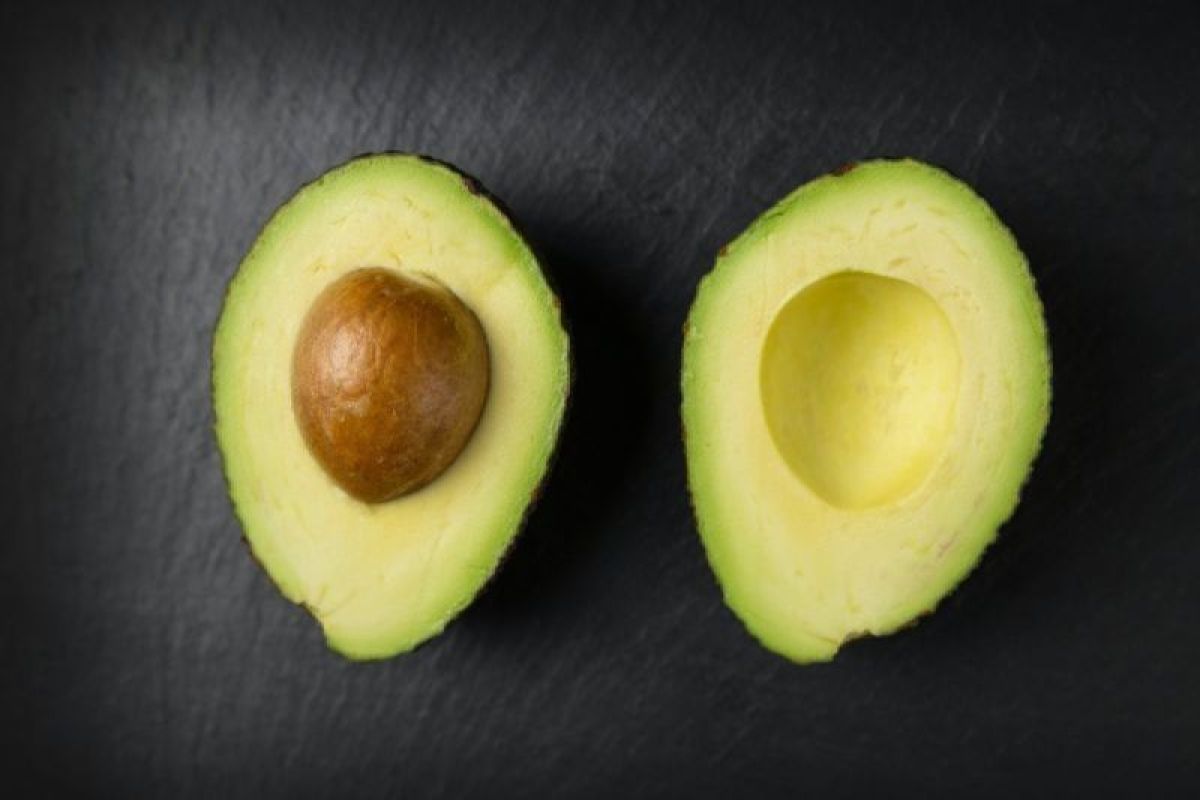
Alpukat merupakan buah yang kaya akan manfaat bagi kesehatan. Buah yang sering disebut sebagai superfood ini mengandung banyak nutrisi penting seperti lemak sehat, serat, vitamin E, K, dan B6, serta kalium. Tidak heran jika mengonsumsi alpukat setiap hari dapat meningkatkan kualitas makanan kita.
Alpukat memiliki kandungan lemak sehat yang tinggi, terutama asam lemak tak jenuh tunggal (oleat). Lemak sehat ini penting untuk menjaga kesehatan jantung dan mengurangi risiko penyakit jantung. Selain itu, alpukat juga mengandung serat yang membantu pencernaan dan menjaga kesehatan usus.
Vitamin E yang terdapat dalam alpukat merupakan antioksidan yang penting untuk melindungi sel-sel tubuh dari kerusakan akibat radikal bebas. Sementara itu, vitamin K berperan dalam pembekuan darah dan menjaga kesehatan tulang. Sedangkan vitamin B6 diperlukan untuk metabolisme tubuh dan sistem kekebalan.
Selain itu, alpukat juga mengandung kalium yang berperan penting dalam menjaga tekanan darah, keseimbangan elektrolit, dan fungsi otot dan saraf. Dengan mengonsumsi alpukat setiap hari, kita dapat menjaga kesehatan jantung, pencernaan, kulit, dan juga menjaga berat badan yang seimbang.
Untuk menikmati manfaat alpukat, kita bisa mengonsumsinya dalam berbagai bentuk seperti smoothie, salad, guacamole, atau bahkan dimakan langsung. Namun, perlu diingat untuk tidak mengonsumsi alpukat secara berlebihan karena mengandung kalori tinggi. Sebaiknya konsumsi alpukat dalam porsi yang seimbang dan tetap menjaga pola makan yang sehat.
Dengan mengonsumsi alpukat setiap hari, kita dapat meningkatkan kualitas makanan kita dan menjaga kesehatan tubuh secara keseluruhan. Jadi, jangan ragu untuk menambahkan alpukat ke dalam menu makanan sehari-hari kita. Selamat mencoba!

Rambut berminyak seringkali menjadi masalah bagi banyak orang. Rambut yang terlalu berminyak dapat membuat penampilan terlihat kusam dan tidak segar. Namun, Anda tidak perlu khawatir karena ada berbagai gaya rambut terbaik yang dapat membantu menyiasati rambut berminyak Anda.
Salah satu gaya rambut terbaik untuk menyiasati rambut berminyak adalah dengan memilih gaya rambut pendek. Gaya rambut pendek akan membuat rambut terlihat lebih ringan dan mudah diatur. Selain itu, rambut pendek juga lebih mudah untuk dirawat dan menjaga kebersihan rambut.
Selain itu, gaya rambut bob atau potongan rambut layer juga dapat menjadi pilihan yang tepat untuk menyiasati rambut berminyak. Potongan rambut bob akan membuat rambut terlihat lebih bervolume dan tidak terlalu lepek. Sedangkan potongan rambut layer akan membuat rambut terlihat lebih bergerak dan tidak terlalu berat.
Untuk memaksimalkan gaya rambut terbaik untuk rambut berminyak, Anda juga dapat menggunakan produk perawatan rambut khusus untuk rambut berminyak. Pilihlah shampoo dan conditioner yang mengandung bahan-bahan alami seperti tea tree oil atau lemon yang dapat membantu mengontrol produksi minyak di kulit kepala.
Selain itu, hindari penggunaan produk styling yang berat seperti wax atau gel yang dapat membuat rambut terlihat lebih lepek. Sebaiknya gunakan produk styling yang ringan seperti mousse atau hairspray yang dapat membantu menjaga gaya rambut tetap tahan lama tanpa membuat rambut terlihat berminyak.
Dengan memilih gaya rambut terbaik dan menggunakan produk perawatan rambut yang tepat, Anda dapat menyiasati rambut berminyak dengan mudah dan tetap tampil stylish setiap hari. Jadi, jangan biarkan rambut berminyak mengganggu penampilan Anda dan mulailah mencoba gaya rambut terbaik untuk rambut berminyak Anda sekarang juga!

Kalori dalam hidangan Lebaran khas daerah
Lebaran adalah salah satu momen yang paling ditunggu-tunggu oleh masyarakat Indonesia. Selain sebagai momen untuk bersilaturahmi dengan keluarga dan kerabat, Lebaran juga identik dengan hidangan lezat yang disajikan dalam berbagai acara selama periode ini. Namun, seringkali kita lupa bahwa hidangan Lebaran juga mengandung banyak kalori yang tinggi.
Salah satu contoh hidangan Lebaran khas daerah yang tinggi kalori adalah ketupat. Ketupat adalah makanan tradisional Indonesia yang terbuat dari nasi yang dibungkus dengan daun kelapa atau janur. Meskipun terlihat sederhana, ketupat mengandung banyak karbohidrat yang dapat meningkatkan kadar gula darah dan berpotensi menaikkan berat badan jika dikonsumsi secara berlebihan.
Selain itu, hidangan Lebaran khas daerah lainnya seperti opor ayam dan rendang juga mengandung kalori yang tinggi. Opor ayam adalah hidangan daging ayam yang dimasak dengan santan dan berbagai rempah-rempah yang kaya lemak jenuh. Sedangkan rendang adalah hidangan daging yang dimasak dengan santan dan bumbu rempah yang kaya akan kalori.
Untuk menyiasati konsumsi kalori yang tinggi selama Lebaran, kita bisa mengganti hidangan Lebaran khas daerah dengan hidangan yang lebih sehat. Misalnya, mengganti ketupat dengan nasi merah atau nasi putih yang rendah lemak, serta memilih ayam tanpa kulit sebagai pengganti opor ayam. Selain itu, kita juga bisa membatasi porsi makanan yang kita konsumsi agar tidak terlalu banyak mengonsumsi kalori.
Dengan memperhatikan konsumsi kalori selama Lebaran, kita dapat tetap menikmati hidangan Lebaran khas daerah tanpa perlu khawatir akan kesehatan kita. Semoga Lebaran kali ini menjadi momen yang menyenangkan dan sehat bagi kita semua. Selamat Lebaran!

OYO, salah satu platform booking hotel terbesar di Indonesia, kembali menawarkan diskon menginap hingga 80 persen untuk menyambut Hari Raya Idul Fitri atau Lebaran. Diskon ini ditawarkan sebagai bagian dari promo spesial untuk para pelanggan setia OYO yang ingin merayakan Lebaran dengan hemat namun tetap nyaman.
Dengan adanya diskon ini, para pelanggan OYO bisa menikmati pengalaman menginap yang terjangkau namun tetap berkualitas selama liburan Lebaran. Berbagai pilihan akomodasi mulai dari hotel, guest house, hingga apartemen bisa dinikmati dengan harga yang lebih terjangkau daripada biasanya.
Tidak hanya itu, OYO juga menawarkan berbagai fasilitas tambahan yang bisa membuat pengalaman menginap para pelanggan semakin nyaman. Mulai dari sarapan gratis, Wi-Fi gratis, hingga layanan antar-jemput bandara, semua bisa dinikmati dengan harga yang lebih terjangkau berkat promo diskon Lebaran ini.
Para pelanggan yang ingin menikmati diskon menginap hingga 80 persen ini bisa langsung melakukan pemesanan melalui aplikasi OYO atau melalui situs resmi OYO. Dengan melakukan pemesanan lebih awal, para pelanggan juga bisa mendapatkan harga yang lebih murah lagi dan memastikan ketersediaan kamar saat liburan Lebaran nanti.
Jadi, jangan lewatkan kesempatan untuk merayakan Lebaran dengan hemat namun tetap nyaman bersama OYO. Manfaatkan promo diskon menginap hingga 80 persen ini dan nikmati liburan Lebaran yang tak terlupakan bersama keluarga atau teman-teman Anda. Selamat merayakan Lebaran dan selamat menikmati promo diskon dari OYO!

Menjadi seorang ibu hamil adalah anugerah yang luar biasa, namun juga merupakan tanggung jawab besar bagi seorang wanita. Kehamilan adalah periode yang sangat penting dalam kehidupan seorang wanita, terutama bagi ibu hamil yang sudah berusia 35 tahun. Pada usia ini, risiko komplikasi kehamilan dapat meningkat, sehingga perawatan khusus sangat diperlukan.
Salah satu risiko yang paling umum terjadi pada ibu hamil berusia 35 tahun adalah meningkatnya risiko kelahiran prematur. Hal ini disebabkan oleh berkurangnya elastisitas dan kekuatan otot rahim pada usia tersebut. Selain itu, risiko preeklampsia, diabetes gestasional, serta masalah kesehatan lainnya juga dapat meningkat.
Untuk mengurangi risiko tersebut, penting bagi ibu hamil usia 35 tahun untuk mendapatkan perawatan prenatal yang baik. Kunjungan rutin ke dokter kandungan sangat penting untuk memantau perkembangan kehamilan dan memastikan kesehatan ibu dan bayi. Selain itu, menjaga pola makan yang sehat, berolahraga secara teratur, serta menghindari kebiasaan merokok dan minum alkohol juga sangat dianjurkan.
Selain perawatan prenatal, ibu hamil usia 35 tahun juga perlu lebih waspada terhadap gejala komplikasi kehamilan. Jika mengalami gejala seperti nyeri perut yang hebat, pendarahan, atau peningkatan tekanan darah, segera konsultasikan dengan dokter untuk mendapatkan penanganan yang tepat.
Dengan pemahaman yang baik tentang risiko dan perawatan yang diperlukan, ibu hamil usia 35 tahun dapat menjalani kehamilan dengan aman dan sehat. Ingatlah bahwa kehamilan adalah anugerah yang berharga, sehingga perlu dikonsumsi dengan penuh tanggung jawab dan kesadaran akan kesehatan ibu dan bayi. Semoga artikel ini bermanfaat bagi semua ibu hamil yang berusia 35 tahun.

Pulau Bali memang dikenal sebagai destinasi wisata yang menakjubkan di Indonesia. Selain pantai-pantai yang memukau, Bali juga memiliki berbagai tempat wisata unik yang patut untuk dikunjungi. Salah satunya adalah Keranjang Sultan, tempat yang membuat aktor Hollywood, Will Smith, penasaran.
Keranjang Sultan merupakan salah satu tempat wisata yang berlokasi di desa Banyuatis, Kecamatan Banjar, Kabupaten Buleleng, Bali. Tempat ini menawarkan pengalaman unik bagi para pengunjung yang ingin mencoba sensasi berada di atas keranjang bambu yang besar dan tinggi.
Keranjang Sultan sendiri merupakan tempat wisata yang dikelola oleh warga setempat. Mereka menciptakan keranjang bambu raksasa dengan tinggi mencapai 13 meter dan dapat menampung hingga 10 orang di dalamnya. Pengunjung dapat menaiki keranjang tersebut dan menikmati pemandangan indah sekitar desa Banyuatis dari ketinggian.
Tidak heran jika Keranjang Sultan menarik perhatian Will Smith. Aktor terkenal tersebut bahkan sempat mengunggah foto dirinya berpose di atas keranjang bambu tersebut di akun Instagram pribadinya. Aksi Will Smith ini pun menjadi viral dan menarik minat wisatawan untuk berkunjung ke Keranjang Sultan.
Selain menikmati sensasi berada di atas keranjang bambu, pengunjung juga dapat menikmati keindahan alam sekitar desa Banyuatis, seperti sawah terasering dan hamparan perkebunan kopi. Selain itu, pengunjung juga dapat berinteraksi dengan warga setempat yang ramah dan hangat.
Bagi Anda yang ingin merasakan pengalaman unik di Keranjang Sultan, Anda dapat mengunjungi desa Banyuatis, Kecamatan Banjar, Kabupaten Buleleng, Bali. Tiket masuk ke Keranjang Sultan cukup terjangkau, sehingga Anda dapat menikmati sensasi berada di atas keranjang bambu dengan harga yang terjangkau.
Jadi, jangan lewatkan kesempatan untuk mengunjungi Keranjang Sultan dan merasakan sensasi unik yang ditawarkan tempat wisata ini. Siapa tahu, Anda pun bisa merasakan kegembiraan seperti yang dirasakan oleh Will Smith ketika mengunjungi tempat ini. Selamat berlibur!

Rumah adat di Taman Mini Indonesia Indah (TMII) merupakan salah satu destinasi wisata yang paling diminati oleh para wisatawan saat Liburan Lebaran. Rumah adat di TMII menampilkan berbagai rumah tradisional dari berbagai daerah di Indonesia, sehingga pengunjung dapat merasakan keberagaman budaya dan tradisi dari seluruh Nusantara.
Setiap rumah adat di TMII dirancang dengan detail dan autentik, sehingga pengunjung dapat merasakan atmosfer yang sesungguhnya dari tiap-tiap rumah tradisional. Pengunjung dapat melihat langsung arsitektur, dekorasi, hingga perabotan rumah yang menjadi ciri khas dari masing-masing suku dan daerah di Indonesia.
Selain itu, di setiap rumah adat juga sering diadakan pertunjukan seni dan budaya tradisional, seperti tarian, musik, dan seni pertunjukan lainnya. Hal ini tentunya membuat pengalaman berkunjung ke rumah adat di TMII menjadi semakin berkesan dan menarik.
Selain itu, di sekitar area rumah adat, terdapat berbagai fasilitas pendukung seperti restoran, toko oleh-oleh, dan tempat bermain anak-anak. Sehingga pengunjung dapat menghabiskan waktu dengan menyaksikan keindahan rumah adat, sambil menikmati kuliner khas daerah, serta berbelanja oleh-oleh untuk keluarga di rumah.
Tidak heran jika rumah adat di TMII menjadi salah satu destinasi wisata yang paling diminati oleh para wisatawan saat Liburan Lebaran. Pengunjung dapat merasakan kehangatan dan keceriaan Lebaran dengan berbagai kegiatan seru dan menarik di sekitar rumah adat.
Jadi, bagi Anda yang ingin merasakan keberagaman budaya dan tradisi Indonesia, jangan lupa untuk mengunjungi rumah adat di TMII saat Liburan Lebaran. Nikmati pengalaman berwisata yang tak terlupakan dan dapatkan kenangan indah bersama keluarga dan teman-teman Anda. Selamat berlibur!
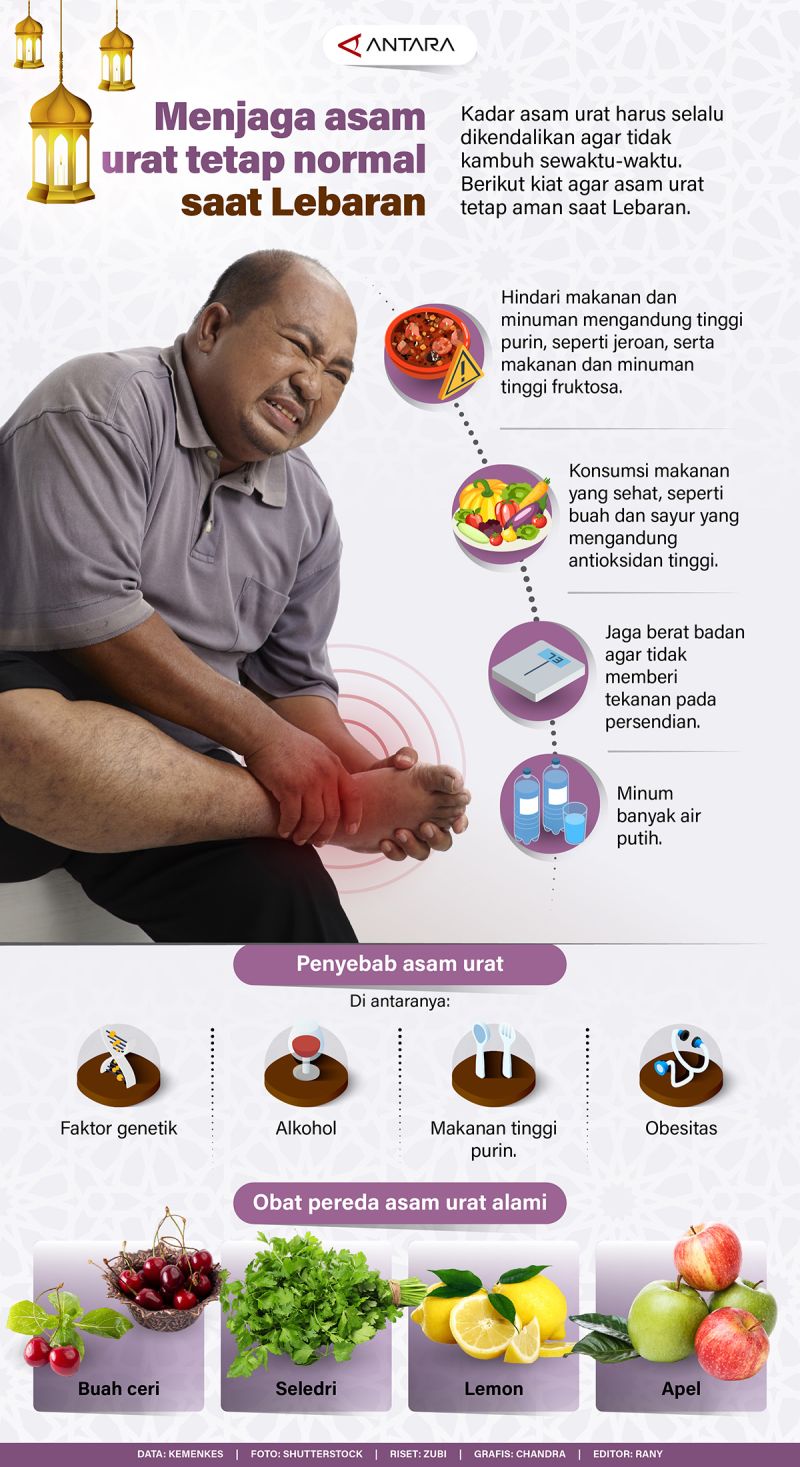
Lebaran adalah waktu yang paling dinanti-nanti oleh banyak orang di Indonesia. Saat Lebaran tiba, berbagai hidangan lezat dan kue-kue manis pasti akan menghiasi meja makan. Namun, bagi sebagian orang, Lebaran juga dapat menjadi momen yang menegangkan karena harus memperhatikan asam urat yang harus tetap normal.
Asam urat adalah zat yang terbentuk dari pemecahan purin dalam tubuh. Jika kadar asam urat dalam tubuh terlalu tinggi, maka dapat menyebabkan berbagai masalah kesehatan seperti nyeri sendi, pembengkakan, dan bahkan batu ginjal. Oleh karena itu, menjaga kadar asam urat tetap normal sangat penting, terutama saat menjalani puasa dan merayakan Lebaran.
Berikut adalah beberapa tips sederhana yang dapat membantu menjaga kadar asam urat tetap normal saat Lebaran:
1. Konsumsi makanan rendah purin: Hindari makanan yang tinggi purin seperti daging merah, jeroan, seafood, dan makanan olahan. Sebaliknya, pilihlah makanan yang rendah purin seperti buah-buahan, sayuran, kacang-kacangan, dan biji-bijian.
2. Minum banyak air: Minum air putih cukup membantu dalam mengeluarkan zat-zat berbahaya dari tubuh, termasuk asam urat. Pastikan untuk minum setidaknya 8 gelas air putih setiap hari.
3. Batasi konsumsi alkohol: Alkohol dapat meningkatkan produksi asam urat dalam tubuh. Oleh karena itu, batasi konsumsi minuman beralkohol saat merayakan Lebaran.
4. Hindari makanan yang mengandung gula tinggi: Makanan yang tinggi gula juga dapat meningkatkan kadar asam urat dalam tubuh. Hindari makanan manis berlebihan dan pilihlah makanan yang rendah gula.
5. Perbanyak konsumsi serat: Serat dapat membantu mengikat asam urat dalam tubuh dan memperlancar proses pembuangan zat-zat berbahaya. Konsumsi makanan yang tinggi serat seperti sayuran hijau, buah-buahan, dan biji-bijian.
Dengan menjaga pola makan dan gaya hidup sehat, kita dapat menjaga kadar asam urat tetap normal saat merayakan Lebaran. Jadi, jangan biarkan asam urat mengganggu momen bahagia Lebaran kita. Selamat merayakan Lebaran dengan sehat dan bahagia!

Taman Mini Indonesia Indah (TMII) merupakan salah satu destinasi wisata yang populer di Jakarta. Tempat ini tidak hanya menawarkan berbagai macam atraksi budaya dan edukasi, tetapi juga menyediakan fasilitas kesehatan untuk pengunjungnya.
Pos kesehatan di TMII didirikan dengan tujuan untuk memberikan perlindungan dan pengawasan terhadap kesehatan para pengunjung. Fasilitas ini dilengkapi dengan tenaga medis yang siap memberikan pertolongan pertama pada saat dibutuhkan. Selain itu, pos kesehatan juga dilengkapi dengan peralatan medis dan obat-obatan yang diperlukan untuk menangani berbagai macam keadaan darurat.
Dengan adanya pos kesehatan ini, pengunjung tidak perlu khawatir jika terjadi sesuatu yang tidak diinginkan saat berada di TMII. Mereka dapat segera mendapatkan pertolongan medis yang cepat dan tepat sehingga dapat mencegah terjadinya hal-hal yang lebih serius.
Selain itu, pos kesehatan juga bertujuan untuk memberikan edukasi kesehatan kepada pengunjung. Para tenaga medis di sana akan memberikan informasi mengenai pentingnya menjaga kesehatan, cara mencegah penyakit, dan tindakan yang harus dilakukan saat mengalami masalah kesehatan.
Dengan adanya pos kesehatan di TMII, diharapkan para pengunjung dapat menikmati liburan mereka dengan lebih aman dan nyaman. Selalu ingat untuk menjaga kesehatan dan selalu waspada terhadap kondisi tubuh kita. Semoga dengan adanya fasilitas kesehatan ini, TMII dapat menjadi destinasi wisata yang ramah dan aman bagi semua pengunjungnya.
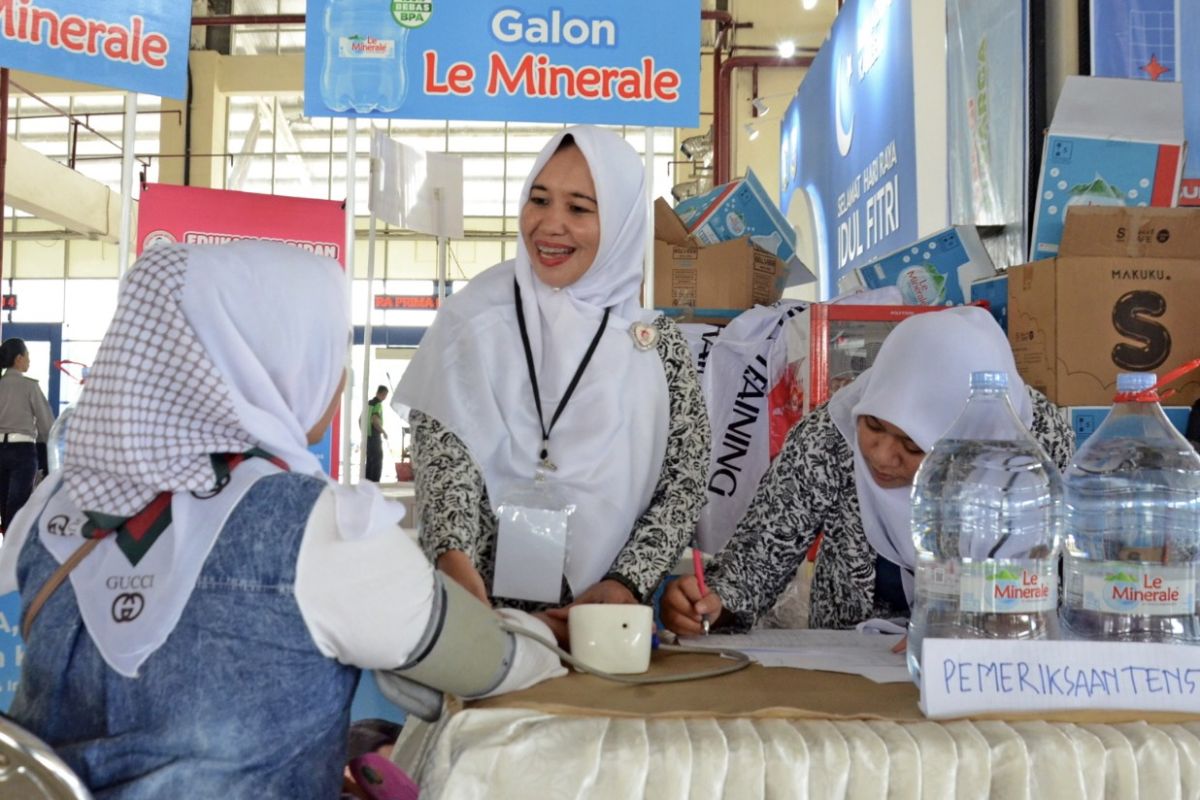
Ikatan Bidan Indonesia (IBI) telah membuka posko kesehatan di sepanjang jalur mudik untuk mendekatkan layanan kebidanan kepada para pemudik. Langkah ini diambil untuk memberikan pelayanan kesehatan yang mudah diakses bagi para pemudik yang sedang dalam perjalanan menuju kampung halaman.
Posko kesehatan yang dibuka oleh IBI ini dilengkapi dengan tenaga bidan yang siap memberikan pelayanan kesehatan kepada para pemudik. Mereka memberikan informasi dan konsultasi terkait kesehatan ibu dan anak, serta memberikan pertolongan pertama dalam kasus-kasus darurat.
Selain itu, posko kesehatan ini juga dilengkapi dengan berbagai fasilitas kesehatan seperti alat cek kesehatan, obat-obatan, serta tempat istirahat bagi para pemudik yang membutuhkan. Dengan adanya posko kesehatan ini, diharapkan para pemudik dapat lebih aware terhadap kesehatan mereka dan keluarganya selama dalam perjalanan mudik.
IBI sendiri berkomitmen untuk terus mendekatkan layanan kebidanan kepada masyarakat, termasuk para pemudik yang sedang dalam perjalanan mudik. Mereka juga mengajak para bidan di seluruh Indonesia untuk turut serta dalam memberikan pelayanan kesehatan kepada masyarakat, terutama pada saat-saat penting seperti mudik Lebaran.
Dengan adanya posko kesehatan yang dibuka oleh IBI, diharapkan para pemudik dapat lebih memperhatikan kesehatan mereka dan keluarganya selama dalam perjalanan mudik. Selain itu, diharapkan pula para bidan dapat terus memberikan pelayanan yang terbaik bagi masyarakat, sehingga kesehatan ibu dan anak di Indonesia dapat terjaga dengan baik.

Brebes merupakan salah satu daerah di Jawa Tengah yang terkenal dengan kuliner-kuliner khasnya. Salah satu kuliner yang patut dicoba adalah Sate Blengong. Sate Blengong merupakan sate yang terbuat dari daging burung Blengong yang dipanggang dengan bumbu khas. Burung Blengong sendiri merupakan burung air yang hidup di daerah rawa atau sawah.
Sate Blengong memiliki cita rasa yang unik dan berbeda dari sate-sate lainnya. Daging burung Blengong yang dipanggang dengan bumbu yang meresap membuat sate ini memiliki rasa yang gurih dan lezat. Selain itu, tekstur daging burung Blengong yang kenyal juga menambah kenikmatan saat menyantap sate ini.
Proses pembuatan sate Blengong juga tidaklah mudah. Daging burung Blengong harus dipersiapkan dengan baik sebelum dipanggang. Bumbu yang digunakan juga harus pas agar cita rasanya terasa sempurna. Biasanya sate Blengong disajikan dengan nasi putih, lalapan, dan sambal khas Brebes.
Bagi Anda yang ingin mencicipi kuliner khas Brebes yang unik dan lezat, Sate Blengong adalah pilihan yang tepat. Anda bisa menemukan Sate Blengong di berbagai warung makan atau pedagang kaki lima di Brebes. Jangan lewatkan kesempatan untuk mencicipi kelezatan Sate Blengong saat berkunjung ke Brebes. Selamat menikmati!

Idul Fitri, atau Lebaran, adalah hari raya yang penuh makna bagi umat Islam di seluruh dunia. Bagi pemudik yang pulang kampung, hari raya Idul Fitri memiliki makna yang sangat istimewa. Mereka rela menempuh perjalanan jauh dari kota tempat tinggalnya untuk berkumpul dengan keluarga tercinta di kampung halaman.
Salah satu tempat yang menjadi titik kumpul para pemudik adalah Stasiun Gambir, Jakarta. Stasiun Gambir menjadi salah satu stasiun kereta api yang paling ramai saat musim mudik Lebaran. Para pemudik dari berbagai daerah di Indonesia berbondong-bondong datang ke Stasiun Gambir untuk pulang kampung.
Bagi para pemudik, pulang kampung untuk merayakan Idul Fitri memiliki makna yang sangat mendalam. Mereka rela mengorbankan waktu dan tenaga untuk bisa berkumpul dengan keluarga di hari yang fitri ini. Bersama keluarga, mereka akan merayakan Idul Fitri dengan penuh kebahagiaan dan rasa syukur atas kesempatan berkumpul kembali setelah sekian lama terpisah.
Di Stasiun Gambir, para pemudik akan bertemu dengan keramaian dan kegembiraan yang tidak bisa diungkapkan dengan kata-kata. Mereka saling berpelukan, saling berbagi cerita, dan saling mengucapkan selamat Idul Fitri satu sama lain. Suasana kebersamaan dan kebahagiaan begitu terasa di Stasiun Gambir saat musim mudik Lebaran.
Namun, di balik kegembiraan tersebut, para pemudik juga merasakan kesedihan karena harus meninggalkan kembali keluarga di kampung halaman setelah Lebaran berakhir. Mereka akan kembali ke kota tempat tinggalnya dengan hati yang berat, namun tetap penuh dengan kenangan indah selama bersama keluarga di hari raya Idul Fitri.
Makna hari raya Idul Fitri bagi pemudik di Stasiun Gambir sangatlah mendalam. Mereka rela menempuh perjalanan jauh hanya untuk bisa berkumpul dengan keluarga di hari yang fitri ini. Semoga kebersamaan dan kebahagiaan selalu menyertai para pemudik dalam perjalanan pulang kampung mereka dan semoga Idul Fitri tahun ini menjadi momen yang penuh berkah dan kebahagiaan bagi semua umat Islam di seluruh dunia. Selamat Idul Fitri!
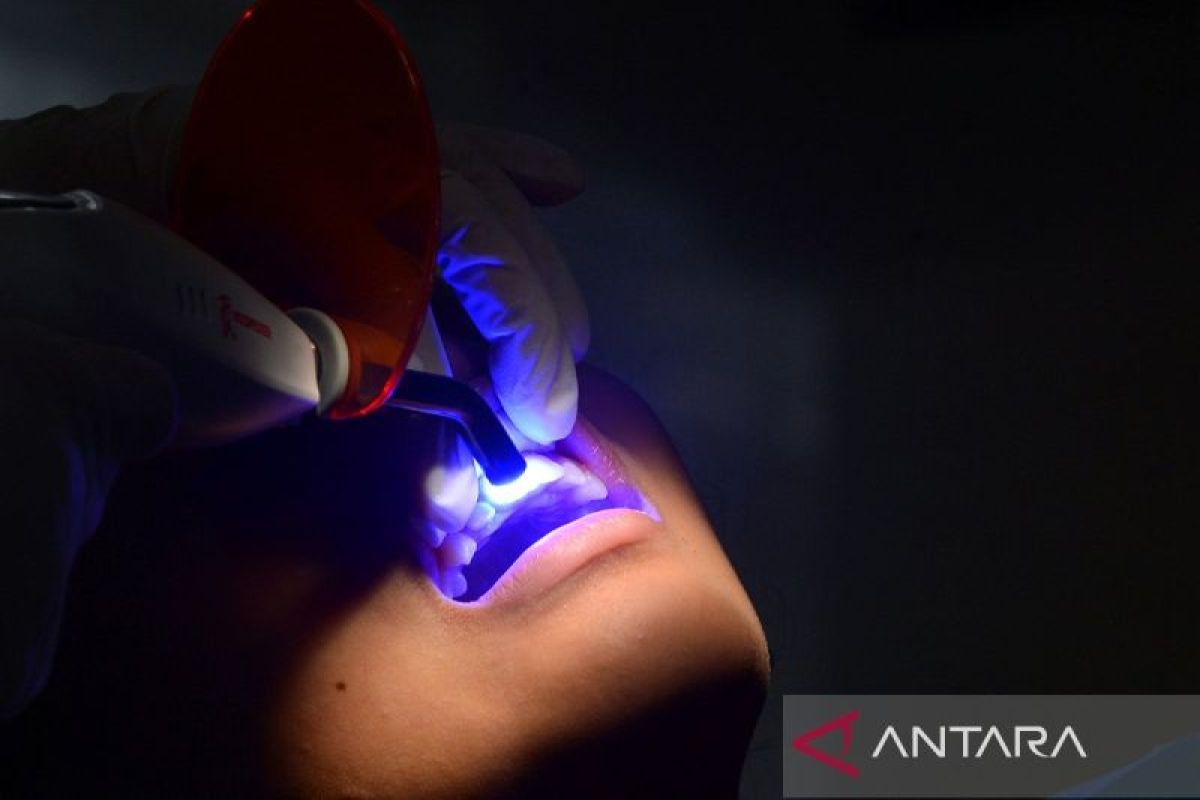
Peradangan gusi merupakan kondisi yang umum terjadi dan bisa menimbulkan rasa nyeri, pembengkakan, dan bahkan pendarahan pada gusi. Peradangan gusi dapat disebabkan oleh berbagai faktor, seperti kurangnya kebersihan mulut, infeksi bakteri, atau masalah kesehatan lainnya.
Jika Anda mengalami peradangan gusi, ada beberapa pengobatan yang bisa dilakukan di rumah untuk membantu mengurangi gejala dan mempercepat proses penyembuhan. Berikut adalah beberapa cara pengobatan untuk peradangan gusi yang bisa dilakukan di rumah:
1. Menjaga kebersihan mulut
Kebersihan mulut sangat penting untuk mencegah dan mengobati peradangan gusi. Pastikan Anda menyikat gigi setidaknya dua kali sehari dan membersihkan sela-sela gigi dengan benang gigi secara teratur. Gunakan juga obat kumur yang mengandung antiseptik untuk membunuh bakteri penyebab peradangan.
2. Menggunakan obat kumur
Obat kumur yang mengandung bahan aktif seperti chlorhexidine atau povidone-iodine dapat membantu mengurangi peradangan dan mencegah infeksi pada gusi. Gunakan obat kumur tersebut sesuai petunjuk yang tertera pada kemasan.
3. Kompress dingin
Kompress dingin dapat membantu mengurangi pembengkakan dan nyeri pada gusi yang meradang. Tempelkan kompres dingin pada area yang terkena peradangan selama 10-15 menit beberapa kali sehari.
4. Menggunakan garam atau baking soda
Berkumur dengan larutan air garam atau baking soda dapat membantu mengurangi peradangan dan membersihkan bakteri pada gusi. Campurkan satu sendok teh garam atau baking soda ke dalam segelas air hangat, lalu berkumur selama beberapa menit sebelum meludahkannya.
5. Konsumsi makanan sehat
Makanan yang kaya akan vitamin C dan antioksidan dapat membantu mempercepat proses penyembuhan peradangan gusi. Konsumsilah buah-buahan segar, sayuran hijau, dan makanan yang tinggi serat untuk membantu memperkuat sistem kekebalan tubuh.
Jika peradangan gusi Anda tidak kunjung membaik setelah melakukan pengobatan di rumah, segeralah berkonsultasi dengan dokter gigi atau dokter spesialis gusi untuk mendapatkan perawatan dan pengobatan yang lebih lanjut. Jangan biarkan peradangan gusi berlarut-larut, karena dapat berdampak buruk pada kesehatan gigi dan mulut Anda. Semoga informasi ini bermanfaat dan membantu Anda mengatasi peradangan gusi dengan lebih baik.

Pemudik sepeda motor disanjung lagi karena disiplin tunggu 15-60 menit
Musim mudik Lebaran tahun ini menjadi sorotan banyak orang karena adanya kebijakan larangan mudik yang diberlakukan oleh pemerintah. Namun, bagi pemudik yang tetap nekat untuk pulang kampung dengan sepeda motor, kedisiplinan mereka dalam menjalani protokol kesehatan selama perjalanan menjadi sorotan positif.
Salah satu hal yang patut diapresiasi dari para pemudik sepeda motor adalah kesabaran mereka dalam menunggu di pos penyekatan selama 15 hingga 60 menit. Meskipun harus menunggu dalam antrian yang panjang, namun mereka tetap patuh dan tidak melanggar aturan yang telah ditetapkan.
Kedisiplinan para pemudik sepeda motor ini juga tercermin dari kepatuhan mereka dalam menggunakan masker, menjaga jarak fisik, dan mencuci tangan sebelum masuk ke pos penyekatan. Mereka memahami pentingnya menjaga kesehatan dan keselamatan diri sendiri serta orang lain, terutama dalam situasi pandemi seperti saat ini.
Selain itu, para pemudik sepeda motor juga menunjukkan rasa solidaritas dan kepedulian terhadap sesama dengan saling mengingatkan untuk tetap disiplin menjalani protokol kesehatan. Mereka saling mengingatkan untuk tidak mengeluh atau marah saat harus menunggu lama di pos penyekatan, namun tetap tenang dan sabar dalam menghadapi situasi tersebut.
Kebersamaan dan kepatuhan para pemudik sepeda motor ini patut diapresiasi dan menjadi contoh bagi masyarakat lain dalam menjalani protokol kesehatan selama pandemi. Mereka menunjukkan bahwa dengan kesadaran dan kepatuhan, kita semua dapat melawan pandemi ini bersama-sama.
Dengan demikian, pemudik sepeda motor layak diapresiasi dan disanjung karena kedisiplinan mereka dalam menjalani protokol kesehatan selama perjalanan mudik. Mereka telah menunjukkan bahwa dengan kesabaran, solidaritas, dan kepatuhan, kita semua dapat melalui masa sulit ini dengan baik. Semoga keberanian dan kesadaran mereka menjadi inspirasi bagi kita semua dalam menghadapi pandemi ini.

Sebuah studi terbaru menunjukkan bahwa melakukan olahraga hanya selama 15 menit setiap hari dapat meningkatkan kekebalan tubuh seseorang. Penelitian yang dilakukan oleh para ahli kesehatan menunjukkan bahwa aktivitas fisik yang teratur dapat meningkatkan sistem kekebalan tubuh dan melindungi tubuh dari penyakit.
Dalam penelitian ini, para ahli kesehatan merekrut sekelompok sukarelawan yang melakukan olahraga selama 15 menit setiap hari selama satu bulan. Hasil dari penelitian ini menunjukkan bahwa para sukarelawan yang rutin melakukan olahraga mengalami peningkatan sistem kekebalan tubuh dibandingkan dengan mereka yang tidak melakukan olahraga sama sekali.
Selain itu, para ahli kesehatan juga menemukan bahwa olahraga yang dilakukan secara teratur dapat meningkatkan produksi sel darah putih yang berperan dalam melawan infeksi dan penyakit. Dengan demikian, melakukan olahraga secara teratur dapat membantu tubuh dalam melawan berbagai penyakit dan infeksi.
Oleh karena itu, penting bagi kita untuk memperhatikan kesehatan tubuh dengan melakukan olahraga secara teratur. Meskipun hanya selama 15 menit sehari, olahraga dapat memberikan manfaat yang besar bagi kesehatan tubuh kita. Jadi, jangan malas untuk bergerak dan tetap aktif agar tubuh kita tetap sehat dan kekebalan tubuh tetap terjaga.

Truntung Teduh adalah salah satu tempat yang sangat cocok untuk menikmati makan malam di tengah alam. Terletak di pinggiran kota, tempat ini menawarkan suasana yang tenang dan damai, jauh dari hiruk pikuk kehidupan perkotaan. Salah satu hal yang membuat pengalaman makan di Truntung Teduh begitu istimewa adalah gemericik air yang mengalir di sekitar tempat tersebut.
Makan malam di Truntung Teduh adalah pengalaman yang tidak hanya memuaskan perut, tetapi juga jiwa. Ditemani gemericik air yang tenang, para pengunjung dapat menikmati hidangan lezat sambil merasa rileks dan santai. Suara air yang mengalir memberikan suasana yang menenangkan dan membuat makan malam semakin nikmat.
Menu yang disajikan di Truntung Teduh juga tidak kalah menarik. Dari hidangan tradisional hingga hidangan internasional, restoran ini menawarkan berbagai pilihan untuk memuaskan selera makan pengunjung. Dengan bahan-bahan berkualitas dan penyajian yang apik, makan malam di Truntung Teduh benar-benar menjadi sebuah pengalaman kuliner yang istimewa.
Selain itu, pemandangan alam yang indah di sekitar Truntung Teduh juga turut menambah kesan romantis dan menyenangkan saat makan malam. Dengan gemericik air sebagai latar belakang, para pengunjung dapat menikmati keindahan alam sambil menikmati hidangan lezat.
Sebagai tempat yang cocok untuk berkumpul dengan keluarga atau teman-teman, Truntung Teduh juga menawarkan suasana yang intim dan hangat. Dengan layanan yang ramah dan penuh perhatian, pengalaman makan malam di tempat ini akan terasa semakin istimewa.
Jadi, jika Anda ingin menikmati makan malam yang istimewa di tengah alam dengan gemericik air yang menenangkan, Truntung Teduh adalah pilihan yang tepat. Nikmati hidangan lezat sambil merasakan kedamaian dan ketenangan yang hanya bisa Anda temukan di tempat ini. Selamat menikmati!

Menkes: Tiga Masalah Kesehatan yang Sering Dialami Pemudik
Pemudik adalah orang-orang yang melakukan perjalanan jauh untuk pulang kampung atau berlibur selama musim mudik. Dalam perjalanan pulang kampung tersebut, seringkali pemudik mengalami berbagai masalah kesehatan yang tidak diinginkan. Menteri Kesehatan (Menkes) telah mengidentifikasi tiga masalah kesehatan yang sering dialami oleh pemudik.
Pertama adalah masalah kesehatan yang disebabkan oleh kelelahan. Perjalanan jauh dan berjam-jam dalam kondisi yang tidak nyaman bisa membuat pemudik merasa lelah dan lesu. Kelelahan ini bisa menyebabkan gangguan kesehatan seperti sakit kepala, mual, dan bahkan pingsan. Oleh karena itu, Menkes menyarankan agar pemudik istirahat yang cukup selama perjalanan, minum air putih secukupnya, dan menghindari konsumsi makanan yang berat.
Masalah kesehatan kedua yang sering dialami oleh pemudik adalah masalah pencernaan. Perjalanan jauh dan mengonsumsi makanan di tempat yang tidak terjamin kebersihannya bisa menyebabkan gangguan pencernaan seperti diare, muntah, dan perut kembung. Menkes menekankan pentingnya menjaga kebersihan makanan dan minuman yang dikonsumsi selama perjalanan, serta membawa obat-obatan untuk mengatasi masalah pencernaan yang mungkin timbul.
Masalah kesehatan ketiga yang sering dialami oleh pemudik adalah masalah pernapasan. Perjalanan jauh dalam kondisi udara yang tidak bersih dan berdebu bisa menyebabkan gangguan pernapasan seperti batuk, pilek, dan sesak napas. Menkes menyarankan agar pemudik menghindari berada di tempat berdebu dan berpolusi tinggi, serta membawa masker untuk melindungi diri dari udara yang tidak sehat.
Dengan mengidentifikasi tiga masalah kesehatan yang sering dialami oleh pemudik, Menkes berharap dapat memberikan informasi dan saran yang berguna bagi pemudik agar tetap sehat selama perjalanan pulang kampung. Dengan menjaga kesehatan selama musim mudik, pemudik dapat menikmati liburan bersama keluarga tanpa harus terganggu oleh masalah kesehatan yang tidak diinginkan. Semoga musim mudik tahun ini berjalan lancar dan selamat bagi semua pemudik!

Gaya “Boho Chic” kembali menjadi tren di dunia fashion saat ini. Gaya ini menggabungkan unsur-unsur bohemian, etnik, vintage, dan hippie yang menciptakan kesan yang unik dan menarik. Boho Chic memberikan kebebasan untuk bereksperimen dengan berbagai motif, warna, tekstur, dan aksesori yang beragam.
Tren fashion Boho Chic kembali muncul dan gairahkan banyak desainer, selebriti, dan penggemar fashion di seluruh dunia. Dengan gaya yang santai namun tetap modis, Boho Chic cocok untuk berbagai kesempatan, baik untuk acara formal maupun santai.
Salah satu ciri khas dari gaya Boho Chic adalah penggunaan aksesori yang khas seperti kalung panjang, gelang, anting-anting, topi, dan tas berbahan anyaman. Selain itu, motif floral, tribal, dan batik sering digunakan dalam busana Boho Chic, memberikan sentuhan etnik dan vintage yang menarik.
Para selebriti seperti Sienna Miller, Vanessa Hudgens, dan Kate Moss sering terlihat mengenakan busana dengan gaya Boho Chic. Mereka menginspirasi banyak orang untuk mencoba gaya yang santai namun tetap stylish ini.
Bagi para pecinta fashion, Boho Chic memberikan kesempatan untuk mengekspresikan diri dengan lebih bebas dan kreatif. Dengan kombinasi busana yang beragam dan aksesori yang unik, siapa pun dapat menciptakan gaya Boho Chic sendiri sesuai dengan selera dan kepribadian masing-masing.
Tidak heran jika Boho Chic kembali menjadi tren di dunia fashion. Gaya yang unik, kreatif, dan menyenangkan ini memberikan kesempatan bagi siapa pun untuk tampil beda dan menarik. Jadi, jangan ragu untuk mencoba gaya Boho Chic dan berani bereksperimen dengan berbagai busana dan aksesori yang khas!

Anemia aplastik adalah kondisi dimana sumsum tulang tidak dapat memproduksi cukup sel darah merah, sel darah putih, dan platelet. Hal ini dapat menyebabkan gejala seperti kelelahan, pusing, sesak napas, dan mudah memar. Penyebab dari anemia aplastik sendiri dapat bermacam-macam, namun yang paling umum adalah karena kerusakan pada sumsum tulang.
Beberapa faktor yang dapat menyebabkan seseorang terkena anemia aplastik antara lain adalah infeksi virus seperti hepatitis, HIV, atau Epstein-Barr virus. Selain itu, paparan bahan kimia beracun seperti pestisida, obat-obatan tertentu seperti antibiotik, anti-inflamasi nonsteroid, dan kemoterapi juga dapat menjadi penyebab anemia aplastik.
Selain faktor penyebab yang telah disebutkan di atas, ada juga faktor genetik yang dapat meningkatkan risiko seseorang terkena anemia aplastik. Beberapa penyakit genetik seperti sindrom Fanconi, sindrom Shwachman-Diamond, dan sindrom Diamond-Blackfan juga dapat menyebabkan anemia aplastik.
Untuk mendiagnosis anemia aplastik, dokter biasanya akan melakukan pemeriksaan darah lengkap, biopsi sumsum tulang, dan tes genetik. Pengobatan untuk anemia aplastik biasanya melibatkan transfusi darah, terapi imunosupresif, dan transplantasi sumsum tulang.
Pencegahan anemia aplastik sebaiknya dilakukan dengan menghindari paparan bahan kimia beracun, menjaga kebersihan diri, dan menghindari kontak dengan orang yang sedang sakit. Selain itu, penting juga untuk mengonsumsi makanan yang kaya zat besi dan vitamin untuk menjaga kesehatan sumsum tulang.
Dengan mengetahui penyebab dan faktor risiko anemia aplastik, diharapkan kita dapat lebih waspada dan mencegah terjadinya kondisi ini. Konsultasikan dengan dokter jika Anda mengalami gejala anemia aplastik agar dapat segera mendapatkan pengobatan yang tepat. Semoga artikel ini bermanfaat untuk Anda.

Selama bulan puasa, kulit wajah seringkali mengalami berbagai masalah akibat perubahan pola makan dan kurangnya asupan cairan. Hal ini dapat membuat kulit wajah terlihat kusam, kering, dan tidak sehat. Namun, dengan beberapa perubahan kecil dalam rutinitas kecantikan Anda, Anda dapat menjaga kulit wajah tetap sehat dan cerah selama berpuasa.
Pertama-tama, pastikan untuk tetap menjaga kebersihan wajah dengan membersihkannya secara teratur. Gunakan pembersih wajah yang lembut dan sesuai dengan jenis kulit Anda. Hindari menggunakan produk yang mengandung alkohol atau bahan kimia keras yang dapat membuat kulit menjadi kering dan iritasi.
Selain itu, jangan lupa untuk tetap memakai tabir surya setiap kali Anda keluar rumah. Paparan sinar matahari dapat menyebabkan kulit wajah menjadi kusam dan mengakibatkan penuaan dini. Pilihlah tabir surya dengan SPF yang sesuai dengan kebutuhan kulit Anda.
Selama berpuasa, pastikan untuk tetap menjaga asupan cairan dengan minum air putih minimal delapan gelas sehari. Air putih sangat penting untuk menjaga kelembaban kulit dan mengeluarkan racun dari dalam tubuh. Anda juga dapat menambahkan konsumsi buah-buahan dan sayuran yang mengandung banyak air, seperti semangka, melon, dan timun.
Selain itu, perhatikan juga pola makan Anda selama berpuasa. Hindari makanan yang mengandung banyak gula dan lemak jenuh, karena dapat menyebabkan jerawat dan masalah kulit lainnya. Sebaliknya, konsumsilah makanan yang kaya akan antioksidan, seperti buah-buahan dan sayuran, untuk menjaga kulit tetap sehat dan cerah.
Terakhir, jangan lupa untuk tetap melakukan perawatan kulit secara rutin, seperti menggunakan pelembap dan masker wajah. Pilihlah produk yang mengandung bahan alami dan sesuai dengan kebutuhan kulit Anda. Dengan melakukan perawatan ini secara konsisten, Anda dapat menjaga kulit wajah tetap sehat dan cerah selama berpuasa.
Dengan sedikit perhatian dan perawatan ekstra, Anda dapat tetap memiliki kulit wajah yang sehat dan cerah selama berpuasa. Selamat menjalani ibadah puasa dan jaga kesehatan kulit wajah Anda dengan baik!

Lebaran adalah salah satu momen yang paling dinantikan oleh umat Muslim di seluruh dunia. Momen ini biasanya dirayakan dengan berkumpul bersama keluarga dan sanak saudara, bermaaf-maafan, serta menikmati hidangan lezat. Berbagai negara memiliki tradisi makanan khas Lebaran yang menjadi menu wajib di hari raya tersebut.
Pertama, kita akan membahas hidangan Lebaran dari Indonesia. Di Indonesia, hidangan khas Lebaran antara lain adalah ketupat, opor ayam, rendang, sayur lodeh, dan sambal goreng ati. Ketupat adalah makanan yang terbuat dari nasi yang dibungkus dengan daun kelapa, lalu direbus hingga matang. Opor ayam adalah ayam yang dimasak dengan bumbu santan yang kaya rempah. Rendang adalah masakan daging yang dimasak dalam santan dan bumbu rempah hingga empuk dan berwarna coklat kehitaman. Sayur lodeh adalah sayuran yang dimasak dengan santan dan bumbu rempah. Sambal goreng ati adalah masakan yang terbuat dari hati ayam yang dimasak dengan bumbu pedas.
Selain Indonesia, negara-negara lain juga memiliki hidangan khas Lebaran yang tidak kalah lezat. Misalnya, di Malaysia terdapat hidangan nasi briyani, rendang daging, kurma ayam, dan kuih tart. Nasi briyani adalah nasi yang dimasak dengan bumbu rempah dan daging, biasanya disajikan dengan acar timun dan sambal. Rendang daging adalah masakan daging yang dimasak dengan bumbu rempah kaya rasa. Kurma ayam adalah ayam yang dimasak dengan bumbu kurma yang manis dan pedas. Kuih tart adalah kue tart yang terbuat dari bahan-bahan tradisional seperti tepung, gula, dan telur.
Di Arab Saudi, hidangan Lebaran yang populer antara lain adalah kabsa, harees, and ma’amoul. Kabsa adalah nasi yang dimasak dengan daging kambing atau ayam dan bumbu rempah seperti cengkeh, kayu manis, dan kurma. Harees adalah bubur gandum yang dimasak dengan daging dan bumbu rempah. Ma’amoul adalah kue kering yang terbuat dari tepung, kacang, dan gula, biasanya disajikan bersama kopi atau teh.
Dari berbagai negara tersebut, terlihat bahwa hidangan Lebaran memiliki keunikan dan kelezatan masing-masing. Meskipun berasal dari budaya yang berbeda, hidangan-hidangan ini menunjukkan bahwa momen Lebaran adalah momen untuk berkumpul dan menikmati hidangan bersama keluarga dan orang terkasih. Semoga kita semua dapat merayakan Lebaran dengan penuh sukacita dan kebahagiaan. Selamat Idul Fitri!

Libur panjang Lebaran sudah semakin dekat, dan banyak orang yang bersiap-siap untuk pulang kampung atau melakukan mudik. Salah satu kendala yang sering dihadapi oleh para pemudik adalah ketersediaan tiket kereta api. Hal ini menjadi alasan utama mengapa banyak pemudik memutuskan untuk berangkat H-1 Lebaran.
Ketersediaan tiket kereta api memang menjadi perhatian serius bagi para pemudik, terutama bagi mereka yang tidak memiliki kendaraan pribadi atau tidak ingin repot dengan kemacetan di jalan raya. Dengan naik kereta api, para pemudik dapat lebih nyaman dan aman dalam perjalanan mereka.
Namun, sayangnya ketersediaan tiket kereta api seringkali menjadi masalah, terutama saat musim mudik Lebaran. Banyak pemudik yang sudah merencanakan perjalanan mereka jauh-jauh hari sebelumnya, namun tetap saja kesulitan mendapatkan tiket kereta api yang sesuai dengan jadwal dan tujuan perjalanan mereka.
Hal ini membuat banyak pemudik akhirnya memutuskan untuk berangkat H-1 Lebaran, meskipun itu berarti harus berhadapan dengan kemungkinan tiket kereta api yang habis atau harus menempuh perjalanan dengan kereta yang lebih lambat atau tidak sesuai dengan jadwal yang diinginkan.
Meskipun demikian, banyak pemudik yang tetap memilih untuk berangkat H-1 Lebaran karena alasan tertentu. Beberapa di antaranya adalah karena tidak ingin melewatkan momen Lebaran bersama keluarga, ingin menghindari kemacetan di jalan raya, atau karena alasan lainnya.
Untuk menghindari masalah ketersediaan tiket kereta api, para pemudik disarankan untuk melakukan pemesanan tiket jauh-jauh hari sebelumnya, mengikuti informasi terkini mengenai jadwal dan ketersediaan tiket kereta api, serta mempertimbangkan alternatif transportasi lain jika tiket kereta api tidak tersedia.
Mudik merupakan tradisi yang sudah menjadi bagian dari budaya Indonesia, dan ketersediaan tiket kereta api seharusnya tidak menjadi penghalang bagi para pemudik untuk pulang kampung. Dengan perencanaan yang matang dan kesabaran, para pemudik tetap dapat menikmati momen Lebaran bersama keluarga tanpa harus terkendala oleh masalah tiket kereta api.

IKEA, salah satu perusahaan furnitur terkemuka di dunia, memberikan diskon besar-besaran untuk menyambut Idul Fitri tahun ini. Diskon yang diberikan mencapai 74 persen untuk berbagai produk yang ditawarkan oleh IKEA.
Idul Fitri merupakan momen yang sangat spesial bagi umat Muslim di seluruh dunia, termasuk di Indonesia. Selama bulan Ramadan, umat Muslim berpuasa dan melakukan ibadah dengan penuh keikhlasan. Setelah sebulan penuh beribadah, umat Muslim merayakan Idul Fitri sebagai tanda syukur atas nikmat yang diberikan oleh Allah SWT.
IKEA sebagai perusahaan yang peduli dengan kebutuhan konsumen, memberikan diskon besar-besaran untuk menyambut Idul Fitri tahun ini. Diskon hingga 74 persen diberikan untuk berbagai produk seperti furnitur, perabot rumah tangga, dan dekorasi. Dengan diskon ini, konsumen dapat membeli produk IKEA dengan harga yang lebih terjangkau.
Selain diskon besar-besaran, IKEA juga memberikan promo menarik lainnya seperti potongan harga tambahan untuk pembelian dalam jumlah tertentu dan hadiah langsung untuk setiap pembelian produk IKEA. Promo ini bertujuan untuk memanjakan konsumen dan memberikan pengalaman berbelanja yang menyenangkan saat menyambut Idul Fitri.
Tak hanya itu, IKEA juga memberikan layanan pengiriman gratis untuk pembelian produk dalam jumlah tertentu. Layanan ini memudahkan konsumen dalam membeli dan mengirimkan produk IKEA ke rumah mereka tanpa perlu repot-repot.
Dengan diskon besar-besaran dan promo menarik yang ditawarkan oleh IKEA, para konsumen di Indonesia dapat merayakan Idul Fitri dengan lebih berkesan. Mereka dapat memperindah rumah mereka dengan produk-produk berkualitas dari IKEA tanpa perlu khawatir akan harga yang mahal.
Jadi, jangan lewatkan kesempatan untuk mendapatkan diskon hingga 74 persen dari IKEA saat menyambut Idul Fitri tahun ini. Segera kunjungi toko IKEA terdekat atau belanja melalui situs resmi IKEA untuk menikmati promo-promo menarik yang ditawarkan. Selamat berbelanja dan selamat menyambut Idul Fitri!

Lebaran merupakan waktu yang ditunggu-tunggu oleh banyak orang, terutama di Indonesia. Namun, bagi penderita diabetes, momen Lebaran bisa menjadi tantangan tersendiri karena harus tetap menjaga pola makan yang sehat dan teratur.
Pola makan sangat penting bagi penderita diabetes karena makanan yang dikonsumsi dapat mempengaruhi kadar gula darah. Untuk itu, berikut ini adalah beberapa tips pola makan bagi penderita diabetes saat Lebaran:
1. Hindari makanan yang tinggi gula dan karbohidrat: Saat Lebaran, banyak makanan yang tinggi gula dan karbohidrat seperti kue-kue dan makanan manis lainnya. Penderita diabetes sebaiknya menghindari makanan-makanan tersebut dan memilih makanan yang rendah gula dan karbohidrat.
2. Pilih makanan yang rendah lemak: Selain gula dan karbohidrat, penderita diabetes juga sebaiknya menghindari makanan yang tinggi lemak. Pilihlah makanan yang rendah lemak seperti sayuran, buah-buahan, dan daging tanpa lemak.
3. Batasi porsi makan: Penting bagi penderita diabetes untuk membatasi porsi makan agar kadar gula darah tetap terkontrol. Hindari makan berlebihan dan pastikan untuk makan dalam porsi yang sesuai dengan kebutuhan tubuh.
4. Perbanyak konsumsi serat: Serat dapat membantu mengontrol kadar gula darah dan menjaga kesehatan pencernaan. Penderita diabetes sebaiknya memperbanyak konsumsi makanan yang mengandung serat seperti sayuran, buah-buahan, dan biji-bijian.
5. Jaga pola makan yang teratur: Selain memperhatikan jenis makanan yang dikonsumsi, penderita diabetes juga perlu menjaga pola makan yang teratur. Hindari makan larut malam dan pastikan untuk makan dalam waktu yang sama setiap hari.
Dengan menjaga pola makan yang sehat dan teratur, penderita diabetes dapat tetap menikmati momen Lebaran tanpa harus khawatir akan kesehatan mereka. Selamat Lebaran bagi semua umat Muslim, semoga kita semua diberikan kesehatan dan kebahagiaan selalu.

Tampil cantik tanpa ‘war salon’ sambut Lebaran
Lebaran sudah semakin dekat, dan tentu saja kita semua ingin tampil cantik dan menarik saat merayakan momen spesial ini. Namun, dengan situasi pandemi yang masih belum berakhir, banyak dari kita mungkin masih merasa ragu untuk pergi ke salon atau ke tempat perawatan kecantikan lainnya.
Namun, jangan khawatir! Meskipun tidak bisa pergi ke salon, kita masih bisa tampil cantik dan menarik dengan cara yang sederhana dan alami. Berikut adalah beberapa tips untuk tampil cantik tanpa perlu ke ‘war salon’ sambut Lebaran.
Pertama-tama, pastikan untuk merawat kulit secara teratur. Membersihkan wajah dengan sabun pembersih yang lembut setiap pagi dan malam, serta menggunakan pelembab yang sesuai dengan jenis kulit, akan membantu menjaga kulit tetap sehat dan segar. Jangan lupa juga untuk menggunakan tabir surya setiap kali keluar rumah, untuk melindungi kulit dari paparan sinar matahari.
Selain merawat kulit, perhatikan juga pola makan dan minum yang sehat. Konsumsi makanan yang kaya akan serat, buah-buahan, sayuran, dan protein, serta minum air putih yang cukup setiap hari, akan membantu menjaga kesehatan kulit dan tubuh secara keseluruhan. Hindari makanan yang mengandung banyak gula dan lemak jenuh, karena dapat menyebabkan jerawat dan masalah kulit lainnya.
Selain perawatan dari dalam, jangan lupa juga untuk merawat rambut dan kuku. Gunakan masker rambut atau minyak rambut alami secara teratur, serta potong kuku secara rutin dan bersihkan kuku dengan baik, untuk menjaga kebersihan dan kesehatan rambut dan kuku.
Terakhir, jangan lupa untuk tetap berpakaian dengan nyaman dan sesuai dengan selera Anda sendiri. Pilihlah busana yang cocok dengan acara Lebaran, namun tetap nyaman dan sesuai dengan gaya Anda. Tidak perlu bermewah-mewah dengan busana mahal atau perhiasan berlian, yang terpenting adalah Anda merasa percaya diri dan nyaman dengan penampilan Anda.
Dengan merawat diri secara teratur dan memperhatikan pola makan dan minum yang sehat, kita semua bisa tampil cantik dan menarik tanpa perlu ke salon atau tempat perawatan kecantikan lainnya. Selamat merayakan Lebaran dengan tampil cantik dan percaya diri, tanpa ‘war salon’!

Berharap rupiah berlipat dari kulit ketupat
Di tengah perayaan Idul Fitri yang penuh keceriaan, ada tradisi unik yang dilakukan oleh masyarakat Indonesia yaitu membuat ketupat. Ketupat merupakan makanan khas yang terbuat dari nasi yang dibungkus dengan daun kelapa, lalu direbus hingga matang. Bentuknya yang segi empat melambangkan kesucian dan kesempurnaan.
Namun, selain sebagai makanan, ketupat juga sering dianggap sebagai simbol keberuntungan dan kekayaan. Sebagian orang percaya bahwa ketika melihat kulit ketupat yang berwarna coklat keemasan, maka akan membawa berkah dan rezeki yang melimpah.
Tak heran jika banyak orang yang berharap rupiah mereka akan berlipat ganda dari kulit ketupat yang mereka lihat. Mereka percaya bahwa dengan doa dan keyakinan yang kuat, rezeki mereka akan datang dengan mudah dan berlimpah seperti ketupat yang melimpah saat Idul Fitri.
Meskipun hanya sekedar kepercayaan, namun banyak orang yang merasa senang dan bersemangat saat melihat kulit ketupat yang berkilauan. Mereka percaya bahwa ketupat tidak hanya sebagai makanan lezat, namun juga sebagai lambang keberuntungan dan kekayaan.
Maka, di momen Idul Fitri ini, mari kita semua berharap dan berdoa agar rupiah kita akan berlipat ganda seperti kulit ketupat yang berkilauan. Semoga rezeki kita akan datang dengan mudah dan melimpah, serta keberkahan selalu menyertai kita di setiap langkah kehidupan. Selamat Idul Fitri, selamat merayakan kebahagiaan dan keberkahan bersama keluarga tercinta.

PT EMLI merupakan perusahaan yang bergerak di bidang jasa perbaikan dan pemeliharaan mesin industri. Sebagai perusahaan yang peduli terhadap kesejahteraan karyawan, PT EMLI baru-baru ini memberangkatkan sejumlah mekaniknya ke kampung halaman mereka dengan menggunakan bus premium.
Keberangkatan mekanik ke kampung halaman merupakan salah satu bentuk apresiasi dari manajemen PT EMLI terhadap dedikasi dan kerja keras yang telah ditunjukkan oleh para mekanik selama bekerja. Dengan memberangkatkan para mekanik ke kampung halaman, diharapkan para mekanik dapat menghabiskan waktu bersama keluarga dan merasakan kebahagiaan yang selama ini mungkin terabaikan karena kesibukan bekerja.
Bus premium yang digunakan untuk mengantar para mekanik ke kampung halaman juga dipilih dengan teliti oleh PT EMLI. Bus tersebut dilengkapi dengan fasilitas yang nyaman dan mewah sehingga para mekanik dapat melakukan perjalanan dengan nyaman dan aman. Selain itu, para mekanik juga disediakan dengan makanan dan minuman selama perjalanan sehingga mereka tidak perlu khawatir kekurangan energi.
Keberangkatan mekanik ke kampung halaman ini juga menjadi momentum bagi PT EMLI untuk mempererat hubungan antara manajemen dan karyawan. Dengan memberikan apresiasi kepada karyawan, diharapkan semangat kerja para mekanik akan semakin meningkat dan kinerja perusahaan dapat terus berkembang.
Dengan adanya kegiatan seperti ini, diharapkan perusahaan lain juga dapat mengikuti jejak PT EMLI dalam memberikan apresiasi kepada karyawan. Karena, karyawan yang merasa dihargai akan lebih termotivasi untuk bekerja dengan baik dan loyal terhadap perusahaan tempat mereka bekerja. Semoga keberangkatan mekanik PT EMLI ke kampung halaman dapat menjadi contoh yang baik bagi perusahaan lain dalam memberikan apresiasi kepada karyawan.

Lebaran sudah semakin dekat, dan tentu saja ada banyak persiapan yang harus dilakukan untuk menyambut hari yang penuh berkah ini. Salah satu tradisi yang sudah menjadi kebiasaan adalah membuat amplop Lebaran untuk keluarga, tetangga, dan teman-teman.
Membuat amplop Lebaran bisa menjadi kegiatan yang menyenangkan untuk dilakukan sambil menunggu bedug Maghrib berkumandang. Tira Anisya, seorang ibu rumah tangga yang hobi membuat kerajinan tangan, memberikan tips untuk membuat amplop Lebaran dengan sentuhan personal.
Langkah pertama yang harus dilakukan adalah menyiapkan bahan-bahan yang diperlukan. Tira Anisya biasanya menggunakan kertas warna-warni, gunting, lem, dan hiasan seperti stiker atau pita untuk menghias amplop Lebaran. Setelah semua bahan sudah siap, mulailah dengan mengukur dan memotong kertas sesuai dengan ukuran amplop yang diinginkan.
Setelah kertas dipotong dan dilipat sesuai dengan bentuk amplop, lem bagian-bagian yang perlu ditempel untuk membentuk amplop. Kemudian, hiaslah amplop dengan stiker atau pita sesuai dengan selera masing-masing. Tira Anisya seringkali menambahkan sentuhan personal dengan menuliskan ucapan selamat Lebaran atau nama penerima amplop di bagian depan amplop.
Sambil menunggu bedug berkumandang, Tira Anisya menghabiskan waktu dengan membuat amplop Lebaran secara santai dan penuh kasih sayang. Menurutnya, membuat amplop Lebaran bukan hanya sekadar kewajiban, tetapi juga bisa menjadi sarana untuk mengekspresikan rasa syukur dan kebahagiaan di hari yang penuh berkah ini.
Setelah amplop Lebaran selesai dibuat, jangan lupa untuk mengisi amplop dengan uang atau hadiah lainnya sebagai tanda kasih sayang dan berbagi kebahagiaan dengan orang-orang terdekat. Semoga dengan tradisi membuat amplop Lebaran ini, hubungan antar sesama semakin erat dan kebersamaan semakin terjalin dengan baik. Selamat Idul Fitri, semoga kita semua diberkahi dan dilimpahi kebahagiaan selalu.

Gerhana matahari adalah peristiwa langka yang terjadi ketika bulan berada di antara bumi dan matahari sehingga menutupi sebagian atau seluruh cahaya matahari. Gerhana matahari dapat terjadi secara parsial atau total, tergantung dari posisi bulan dan bumi.
Meskipun gerhana matahari merupakan fenomena alam yang menakjubkan, namun perlu diingat bahwa melihat langsung gerhana matahari tanpa perlindungan yang cukup dapat berdampak buruk bagi kesehatan mata. Radiasi matahari yang kuat selama gerhana matahari dapat menyebabkan kerusakan permanen pada retina mata, yang dapat menyebabkan kebutaan.
Oleh karena itu, penting bagi kita untuk melindungi mata kita saat melihat gerhana matahari. Berikut adalah beberapa cara yang dapat dilakukan untuk melindungi mata dari kerusakan permanen akibat gerhana matahari:
1. Gunakan kacamata khusus: Saat melihat gerhana matahari, pastikan untuk menggunakan kacamata khusus yang dirancang untuk melindungi mata dari radiasi matahari. Kacamata khusus ini dilengkapi dengan filter khusus yang dapat mengurangi intensitas cahaya matahari sehingga tidak merusak retina mata.
2. Gunakan filter matahari: Selain kacamata khusus, Anda juga dapat menggunakan filter matahari yang dapat dipasang pada lensa kamera atau teleskop untuk melindungi mata dari radiasi matahari yang berbahaya.
3. Jangan melihat gerhana matahari langsung: Jika Anda tidak memiliki perlindungan yang cukup, sebaiknya jangan melihat gerhana matahari langsung. Anda dapat menggunakan metode lain seperti proyektor pinhole atau melihat melalui layar perangkat elektronik untuk mengamati gerhana matahari tanpa merusak mata.
Dengan melakukan langkah-langkah perlindungan yang cukup, Anda dapat menikmati keindahan gerhana matahari tanpa khawatir akan merusak kesehatan mata Anda. Jadi, jangan lupa untuk selalu melindungi mata Anda saat melihat gerhana matahari agar terhindar dari kerusakan permanen yang dapat mengancam kesehatan mata Anda.

Erha Ultimate, perusahaan kecantikan dan kesehatan terkemuka di Indonesia, telah menggerakkan relawan untuk mengajar anak-anak pemulung di sekitar kawasan Jakarta. Inisiatif ini dilakukan sebagai bagian dari program tanggung jawab sosial perusahaan untuk memberikan pendidikan dan pengetahuan kepada anak-anak yang kurang beruntung.
Anak-anak pemulung seringkali tidak mendapatkan akses ke pendidikan yang layak karena kondisi ekonomi keluarga yang kurang mampu. Mereka biasanya harus membantu orang tua mereka mencari barang-barang bekas untuk dijual demi mencukupi kebutuhan sehari-hari. Oleh karena itu, Erha Ultimate melihat pentingnya memberikan kesempatan kepada anak-anak ini untuk mendapatkan pendidikan yang layak agar mereka dapat memiliki masa depan yang lebih cerah.
Para relawan dari Erha Ultimate memberikan waktu dan tenaga mereka untuk mengajar anak-anak pemulung secara gratis. Mereka mengadakan sesi belajar yang menyenangkan dan interaktif agar anak-anak lebih mudah memahami materi yang diajarkan. Selain itu, para relawan juga memberikan motivasi dan dorongan kepada anak-anak agar mereka tetap semangat dalam mengejar cita-cita mereka.
Program ini mendapat sambutan baik dari masyarakat sekitar dan juga dari pihak berwenang. Mereka mengapresiasi upaya Erha Ultimate dalam memberikan pendidikan kepada anak-anak pemulung yang merupakan generasi penerus bangsa. Diharapkan dengan adanya program ini, anak-anak pemulung dapat memiliki kesempatan yang sama untuk mendapatkan pendidikan dan meraih impian mereka.
Erha Ultimate sebagai perusahaan yang peduli terhadap lingkungan dan masyarakat sekitar terus berkomitmen untuk memberikan kontribusi positif kepada masyarakat. Mereka percaya bahwa melalui pendidikan, anak-anak dapat memiliki masa depan yang lebih baik dan dapat menjadi agen perubahan dalam masyarakat. Semoga program ini dapat memberikan dampak positif dan inspirasi bagi perusahaan lain untuk turut berpartisipasi dalam memberikan pendidikan kepada anak-anak yang membutuhkan.

McDonald’s Indonesia telah menggelar berbagai program sosial kemanusiaan selama bulan Ramadhan. Salah satu program yang dilakukan adalah pembagian takjil kepada masyarakat yang berbuka puasa di sekitar restoran-restoran McDonald’s.
Program ini dilakukan sebagai bentuk kepedulian McDonald’s Indonesia terhadap masyarakat yang sedang menjalani ibadah puasa di bulan suci Ramadhan. Dengan pembagian takjil ini, diharapkan dapat membantu masyarakat dalam menyambut buka puasa dengan lebih nyaman.
Selain pembagian takjil, McDonald’s Indonesia juga melakukan program sosial lainnya seperti pembagian makanan dan minuman kepada masyarakat kurang mampu serta bekerja sama dengan lembaga amal untuk memberikan bantuan kepada mereka yang membutuhkan.
Program-program sosial kemanusiaan yang dilakukan oleh McDonald’s Indonesia ini merupakan wujud dari komitmen perusahaan untuk memberikan dampak positif bagi masyarakat sekitar. Dengan melibatkan karyawan dan mitra kerja, McDonald’s Indonesia berharap dapat memberikan kontribusi yang berarti bagi masyarakat Indonesia.
Diharapkan, program-program sosial kemanusiaan yang dilakukan oleh McDonald’s Indonesia selama bulan Ramadhan ini dapat memberikan manfaat yang besar bagi masyarakat dan semakin mempererat hubungan antara perusahaan dan masyarakat sekitar. Semoga kegiatan ini dapat menjadi inspirasi bagi perusahaan lain untuk turut berkontribusi dalam membangun masyarakat yang lebih baik.

Kecelakaan atau tabrakan mobil merupakan kejadian yang tidak diinginkan dan bisa berakibat fatal bagi pengemudi dan penumpang. Salah satu risiko yang sering terjadi setelah kecelakaan adalah mobil dapat terbakar. Mobil yang terbakar dapat menyebabkan kerugian besar baik dari segi materi maupun kehilangan nyawa.
Ada beberapa penyebab mobil dapat terbakar setelah kecelakaan. Salah satunya adalah kebocoran bahan bakar akibat benturan yang keras. Saat tabrakan terjadi, tangki bahan bakar bisa pecah dan menyebabkan bahan bakar tumpah ke permukaan panas mesin atau knalpot yang bisa menyulut api. Kebocoran oli dan cairan lainnya juga bisa menjadi pemicu mobil terbakar setelah kecelakaan.
Selain itu, korsleting listrik juga bisa menyebabkan mobil terbakar setelah kecelakaan. Saat terjadi benturan keras, kabel-kabel listrik mobil bisa putus atau bergesekan dengan permukaan yang tajam sehingga menyebabkan korsleting listrik. Korsleting listrik ini bisa menyebabkan percikan api yang kemudian bisa mengakibatkan mobil terbakar.
Selain penyebab-penyebab di atas, faktor lain seperti kebocoran gas dari tabung gas mobil atau komponen elektronik yang rusak juga bisa menyebabkan mobil terbakar setelah kecelakaan. Oleh karena itu, penting bagi para pengemudi untuk selalu memeriksa kondisi mobil mereka secara berkala dan melakukan perawatan yang tepat agar mengurangi risiko terbakarnya mobil setelah kecelakaan.
Dalam situasi darurat ketika mobil terbakar setelah kecelakaan, ada beberapa hal yang perlu dilakukan. Pertama, segera keluarkan diri dan penumpang dari mobil dan menjauhkan diri dari mobil yang terbakar. Kedua, segera hubungi pihak berwenang seperti pemadam kebakaran dan polisi untuk membantu menangani keadaan tersebut. Jangan mencoba memadamkan api sendiri jika tidak memiliki pengetahuan dan peralatan yang cukup.
Keselamatan adalah yang utama dalam situasi darurat seperti mobil terbakar setelah kecelakaan. Oleh karena itu, selalu berhati-hati dan waspada saat berkendara serta selalu melakukan perawatan mobil secara berkala untuk mengurangi risiko terjadinya kecelakaan dan mobil terbakar. Semoga kita semua selalu dalam perlindungan Tuhan saat berkendara. Amin.

Industri fesyen dan kerajinan adalah dua bidang yang seringkali dipandang sebagai dua hal yang berbeda. Namun, sebenarnya kedua bidang ini dapat saling mendukung dan memberikan nilai tambah satu sama lain. Hal ini juga yang menjadi fokus dari Asosiasi Pengusaha Mode Muslim Indonesia (APPMI) yang berusaha untuk mengintegrasikan industri fesyen dengan produk kerajinan.
Salah satu manfaat dari integrasi antara industri fesyen dan kerajinan adalah meningkatnya nilai tambah dari produk-produk kerajinan. Dengan memasukkan unsur-unsur fesyen ke dalam produk kerajinan, maka produk tersebut akan lebih menarik dan memiliki daya tarik yang lebih besar bagi konsumen. Hal ini dapat meningkatkan daya jual produk dan juga memberikan nilai tambah bagi para pengrajin kerajinan.
Selain itu, integrasi antara industri fesyen dan kerajinan juga dapat membantu memperluas pasar bagi para pengrajin kerajinan. Dengan memasarkan produk kerajinan melalui industri fesyen, para pengrajin dapat menjangkau pasar yang lebih luas dan meningkatkan potensi penjualan produk mereka. Hal ini juga dapat membantu meningkatkan pendapatan para pengrajin dan mendukung pertumbuhan ekonomi lokal.
APPMI sendiri telah aktif dalam mempromosikan integrasi antara industri fesyen dan kerajinan di Indonesia. Melalui berbagai kegiatan seperti pameran, workshop, dan kolaborasi dengan desainer fesyen, APPMI berusaha untuk meningkatkan pemahaman dan kesadaran akan potensi kerja sama antara kedua bidang ini. Dengan demikian, diharapkan industri fesyen dan kerajinan di Indonesia dapat saling mendukung dan berkembang bersama.
Dengan adanya integrasi antara industri fesyen dan kerajinan, diharapkan dapat menciptakan nilai tambah bagi produk kerajinan dan membantu mendukung pertumbuhan ekonomi lokal. APPMI sebagai organisasi yang peduli terhadap perkembangan industri fesyen dan kerajinan di Indonesia terus berupaya untuk mempromosikan kerja sama antara kedua bidang ini. Dengan kerja sama yang baik, industri fesyen dan kerajinan di Indonesia dapat menjadi lebih berkembang dan memberikan manfaat yang lebih besar bagi masyarakat.

Pemudik disarankan istirahat 15-20 menit untuk cegah statis tubuh
Pemudik merupakan tradisi yang sudah menjadi kebiasaan bagi masyarakat Indonesia, terutama menjelang hari raya Idul Fitri. Banyak orang yang pulang kampung untuk merayakan hari raya bersama keluarga. Namun, perjalanan jauh yang ditempuh untuk pulang kampung bisa membuat tubuh menjadi kaku dan lelah akibat duduk dalam waktu yang lama.
Untuk itu, para pemudik disarankan untuk melakukan istirahat selama 15-20 menit setiap beberapa jam sekali selama perjalanan. Istirahat ini bertujuan untuk mencegah terjadinya statis tubuh akibat duduk dalam waktu yang lama. Selain itu, istirahat juga dapat membantu mengurangi rasa lelah dan kaku pada tubuh.
Selama istirahat, pemudik disarankan untuk melakukan peregangan ringan dan berjalan-jalan sejenak untuk menggerakkan otot-otot yang kaku. Selain itu, duduk dalam posisi yang nyaman juga dapat membantu mengurangi tekanan pada tubuh dan mencegah terjadinya pegal-pegal.
Selain itu, penting juga bagi pemudik untuk memperhatikan pola makan dan minum yang sehat selama perjalanan. Hindari makanan yang berat dan minuman yang mengandung kafein, karena dapat menyebabkan rasa tidak nyaman pada perut dan membuat tubuh menjadi lebih lelah.
Dengan melakukan istirahat yang cukup dan menjaga pola makan dan minum yang sehat, diharapkan perjalanan pulang kampung para pemudik dapat berjalan dengan lancar dan nyaman. Sehingga, mereka dapat tiba di kampung halaman dengan tubuh yang segar dan bugar untuk merayakan hari raya bersama keluarga tercinta.
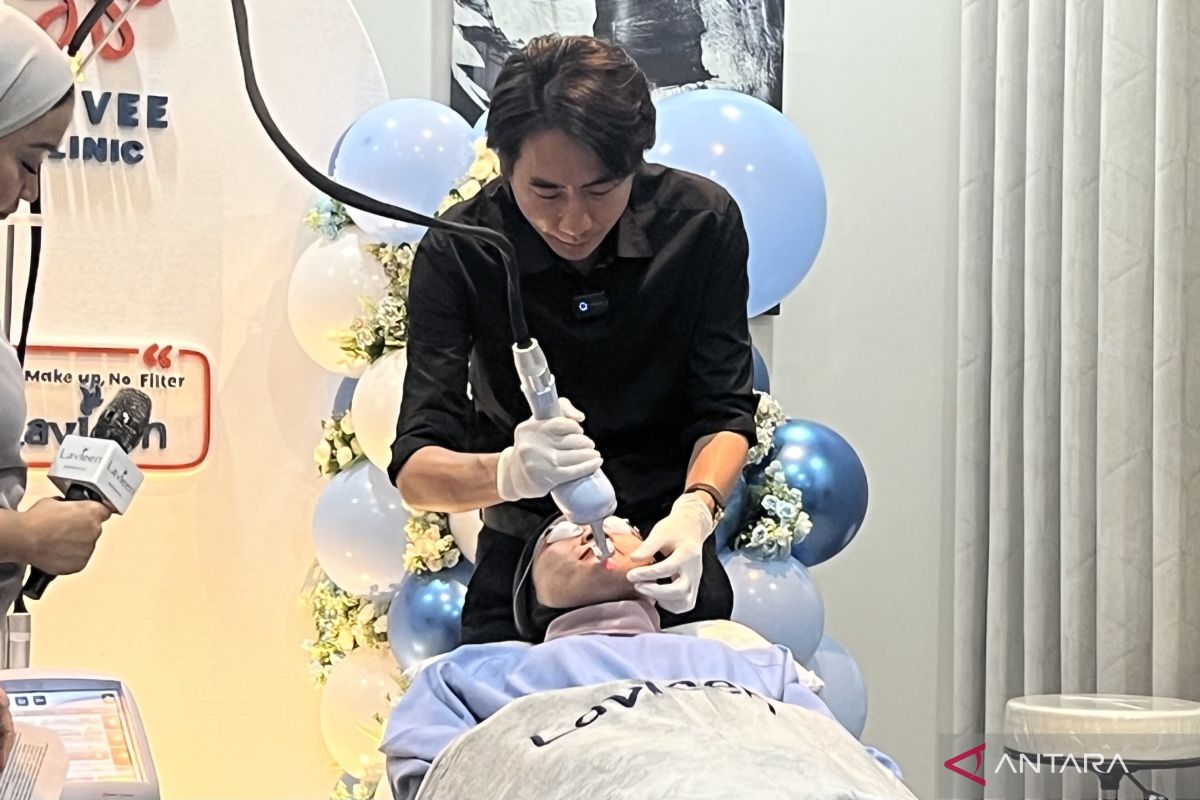
Privee Clinic, sebuah klinik kecantikan terkemuka di Indonesia, telah memperkenalkan perawatan terbaru mereka yang bernama Lavieen Laser. Perawatan ini dirancang khusus untuk mengatasi berbagai masalah kulit yang sering dialami oleh banyak orang.
Lavieen Laser menggunakan teknologi canggih yang dapat merangsang produksi kolagen dan meningkatkan elastisitas kulit. Dengan demikian, perawatan ini dapat membantu mengurangi kerutan, garis halus, dan tanda penuaan lainnya. Selain itu, Lavieen Laser juga efektif dalam menghilangkan noda hitam, bekas jerawat, dan masalah kulit lainnya.
Salah satu keunggulan dari perawatan ini adalah bahwa tidak ada efek samping yang serius dan pemulihannya relatif cepat. Pasien tidak perlu khawatir tentang rasa sakit atau ketidaknyamanan selama prosedur, karena Lavieen Laser menggunakan teknologi yang nyaman dan aman untuk kulit.
Tidak hanya itu, Privee Clinic juga menawarkan konsultasi gratis kepada para pasien yang ingin mencoba perawatan Lavieen Laser. Para ahli kesehatan kulit yang berpengalaman akan memberikan saran terbaik sesuai dengan kondisi kulit masing-masing individu.
Dengan hadirnya Lavieen Laser di Privee Clinic, kini para wanita dan pria di Indonesia dapat menikmati kulit yang sehat dan bercahaya tanpa harus khawatir tentang masalah kulit yang mengganggu. Jadi, jangan ragu untuk mencoba perawatan ini dan dapatkan kulit yang sempurna di Privee Clinic!

Pedagang musiman kulit ketupat ramai di area sekitar Pasar Palmerah
Setiap tahun menjelang Hari Raya Idul Fitri, para pedagang musiman kulit ketupat mulai memadati area sekitar Pasar Palmerah. Mereka menawarkan berbagai macam jenis ketupat kulit yang siap untuk dibeli oleh masyarakat yang membutuhkannya untuk merayakan Hari Raya.
Ketupat kulit merupakan salah satu makanan khas yang selalu ada di meja makan saat Hari Raya Idul Fitri tiba. Masyarakat Indonesia, khususnya masyarakat Betawi, sangat menyukai ketupat kulit sebagai salah satu hidangan wajib saat merayakan Idul Fitri.
Para pedagang musiman ini biasanya datang dari berbagai daerah di sekitar Jakarta dan sekitarnya. Mereka membawa dagangan ketupat kulit yang telah siap untuk dijual kepada para pembeli. Mulai dari ketupat ketan, ketupat nasi, hingga ketupat pulut, semuanya tersedia di area sekitar Pasar Palmerah.
Para pedagang ini menawarkan harga yang cukup bersaing dan terjangkau bagi masyarakat. Mereka juga memberikan pelayanan yang ramah dan baik kepada setiap pembeli yang datang ke tempat mereka. Hal ini membuat para pembeli merasa nyaman dan senang berbelanja di area sekitar Pasar Palmerah.
Dengan adanya pedagang musiman kulit ketupat di sekitar Pasar Palmerah, masyarakat Jakarta dan sekitarnya dapat dengan mudah membeli ketupat kulit untuk merayakan Hari Raya Idul Fitri. Selain itu, keberadaan para pedagang ini juga memberikan warna dan nuansa tersendiri di area sekitar Pasar Palmerah menjelang Hari Raya Idul Fitri. Semoga tradisi ini tetap terjaga dan dapat terus berkembang di masa yang akan datang.

Kartu kredit BRI kembali memberikan kemudahan dan keuntungan bagi para pemegang kartu dengan memberikan cashback sebesar 5% untuk transaksi di SPBU. Hal ini tentu memberikan kegembiraan tersendiri bagi para pemegang kartu yang akan melakukan perjalanan mudik saat libur Lebaran nanti.
Dengan adanya cashback 5% ini, para pemegang kartu kredit BRI dapat lebih hemat dalam mengisi bahan bakar kendaraan mereka selama perjalanan mudik. Selain itu, cashback ini juga dapat digunakan untuk keperluan lain selama perjalanan, seperti belanja kebutuhan di minimarket atau rest area.
Tidak hanya itu, dengan menggunakan kartu kredit BRI, para pemegang kartu juga dapat menikmati berbagai keuntungan lainnya, seperti cicilan 0% untuk berbagai transaksi, diskon di merchant-merchant tertentu, dan berbagai promo menarik lainnya.
Dengan adanya kemudahan dan keuntungan yang ditawarkan oleh kartu kredit BRI ini, diharapkan para pemegang kartu dapat merasa lebih nyaman dan gembira dalam melakukan perjalanan mudik mereka. Sehingga, liburan Lebaran tahun ini dapat menjadi pengalaman yang menyenangkan dan tak terlupakan bagi semua orang.
Jadi, bagi anda yang akan melakukan perjalanan mudik saat libur Lebaran nanti, jangan lupa manfaatkan cashback 5% dari kartu kredit BRI untuk membuat perjalanan anda menjadi lebih hemat dan menyenangkan. Selamat mudik dan selamat berlibur!

Sektor fashion memiliki peran yang sangat penting dalam pertumbuhan ekonomi di DKI Jakarta. Menurut data terbaru, sektor fashion telah mampu menyumbang pertumbuhan ekonomi sebesar 5,25 persen di ibu kota Indonesia.
Pertumbuhan ini tidak terlepas dari kontribusi para pelaku industri fashion yang tidak henti-hentinya berinovasi dan berkarya. Dengan semakin berkembangnya industri fashion di DKI Jakarta, tidak hanya memberikan dampak positif bagi perekonomian daerah, tetapi juga memberikan peluang kerja bagi masyarakat sekitar.
Selain itu, sektor fashion juga mampu meningkatkan daya tarik pariwisata di DKI Jakarta. Dengan adanya berbagai acara fashion show, pameran, dan festival fashion yang diselenggarakan di ibu kota, wisatawan lokal maupun mancanegara semakin tertarik untuk mengunjungi Jakarta. Hal ini tentu akan berdampak positif pada pertumbuhan sektor pariwisata di daerah tersebut.
Tidak hanya itu, sektor fashion juga menjadi salah satu sektor yang mampu memberikan kontribusi besar dalam peningkatan kualitas hidup masyarakat. Dengan adanya industri fashion yang semakin maju, masyarakat dapat memiliki akses yang lebih mudah untuk mendapatkan pakaian dan aksesoris yang berkualitas dan terjangkau.
Dengan pertumbuhan ekonomi sebesar 5,25 persen yang didorong oleh sektor fashion, DKI Jakarta semakin menunjukkan potensinya sebagai pusat mode dan fashion di Indonesia. Pemerintah daerah dan para pelaku industri fashion diharapkan terus bekerja sama untuk menjaga dan meningkatkan perkembangan sektor ini agar dapat memberikan manfaat yang lebih besar bagi perekonomian dan masyarakat Jakarta.

Organ hati merupakan organ yang sangat penting dalam tubuh manusia. Fungsi hati antara lain untuk membersihkan racun dari darah, menghasilkan empedu, serta menyimpan energi dalam bentuk glikogen. Oleh karena itu, sangat penting bagi kita untuk menjaga kesehatan hati dengan mengonsumsi makanan sehat yang mengandung manfaat bagi organ hati.
Berikut adalah beberapa makanan sehat yang dapat membantu menjaga kesehatan hati:
1. Alpukat
Alpukat mengandung lemak sehat yang baik untuk hati. Lemak sehat tersebut dapat membantu mengurangi peradangan dan meningkatkan fungsi hati. Selain itu, alpukat juga mengandung antioksidan yang dapat melindungi hati dari kerusakan.
2. Ikan berlemak
Ikan berlemak seperti salmon, sarden, dan makarel mengandung asam lemak omega-3 yang baik untuk kesehatan hati. Asam lemak omega-3 dapat membantu mengurangi peradangan dan meningkatkan fungsi hati.
3. Sayuran berdaun hijau
Sayuran berdaun hijau seperti bayam, kangkung, dan kale mengandung antioksidan dan serat yang baik untuk hati. Antioksidan dapat melindungi hati dari kerusakan akibat radikal bebas, sedangkan serat dapat membantu membersihkan racun dari tubuh.
4. Buah-buahan
Buah-buahan seperti apel, jeruk, dan anggur mengandung antioksidan yang baik untuk hati. Antioksidan tersebut dapat melindungi hati dari kerusakan dan membantu meningkatkan fungsi hati.
5. Biji-bijian
Biji-bijian seperti chia seed, flaxseed, dan hemp seed mengandung lemak sehat dan serat yang baik untuk hati. Lemak sehat dapat membantu mengurangi peradangan dan meningkatkan fungsi hati, sedangkan serat dapat membantu membersihkan racun dari tubuh.
Dengan mengonsumsi makanan sehat yang mengandung manfaat bagi organ hati, kita dapat menjaga kesehatan hati dan mencegah berbagai masalah kesehatan yang berkaitan dengan organ hati. Selain itu, kita juga perlu menghindari konsumsi makanan yang tinggi lemak jenuh, gula, dan garam yang dapat merusak kesehatan hati. Jadi, jangan lupa untuk selalu memperhatikan pola makan sehat dan seimbang demi kesehatan hati yang optimal.

Cuaca ekstrem seperti teriknya sinar matahari di siang hari memang bisa membuat kulit kita rentan terhadap kerusakan. Namun, dengan menggunakan sunscreen secara rutin, kita masih bisa melindungi kulit kita dari efek buruk sinar UV.
Sunscreen atau tabir surya merupakan produk yang mengandung bahan aktif yang dapat melindungi kulit dari sinar UV. Sinar UV sendiri terbagi menjadi dua jenis, yaitu UVA dan UVB. UVA dapat menyebabkan penuaan dini dan kanker kulit, sedangkan UVB dapat menyebabkan kulit terbakar dan kanker kulit.
Dokter kulit menyarankan penggunaan sunscreen dengan SPF minimal 30 dan mengandung bahan aktif seperti zinc oxide atau titanium dioxide untuk melindungi kulit dari kedua jenis sinar UV. Selain itu, penggunaan sunscreen juga disarankan untuk dilakukan setiap 2-3 jam sekali, terutama saat kita berada di luar ruangan dan terpapar sinar matahari langsung.
Meskipun cuaca ekstrem dan terik, penggunaan sunscreen tetap efektif dalam melindungi kulit dari kerusakan. Namun, selain menggunakan sunscreen, kita juga disarankan untuk menggunakan perlindungan tambahan seperti topi, kacamata hitam, dan pakaian yang menutupi tubuh secara menyeluruh.
Dengan menggunakan sunscreen secara rutin dan perlindungan tambahan, kita dapat menjaga kesehatan kulit kita dan mencegah berbagai masalah kulit yang disebabkan oleh sinar UV. Jadi, jangan lupa untuk selalu menggunakan sunscreen saat cuaca ekstrem dan terik, ya!

Kualitas daun menjadi alasan utama bagi para pembeli yang ramai mendatangi sentra ketupat di Palmerah. Ketupat adalah makanan tradisional Indonesia yang sangat populer, terutama saat Lebaran tiba. Untuk membuat ketupat yang enak dan lezat, kualitas daun yang digunakan sangatlah penting.
Para pembeli yang datang ke sentra ketupat di Palmerah memilih untuk membeli ketupat karena kualitas daun yang ditawarkan di sana sangat baik. Daun yang digunakan untuk membungkus ketupat haruslah segar, bersih, dan tidak berlubang. Daun yang berkualitas akan memberikan rasa yang lebih enak pada ketupat, serta membuat tampilan ketupat menjadi lebih menarik.
Di sentra ketupat Palmerah, para penjual sangat memperhatikan kualitas daun yang mereka gunakan. Mereka hanya menggunakan daun-daun yang terbaik dan sudah dipilih dengan teliti. Para pembeli yang datang pun merasa puas dengan kualitas daun yang mereka dapatkan di sana.
Selain kualitas daun, para pembeli juga memilih sentra ketupat di Palmerah karena harga yang ditawarkan relatif terjangkau. Meskipun kualitas daun yang digunakan sangat baik, harga yang ditawarkan oleh penjual di sana tidak terlalu mahal. Hal ini membuat para pembeli merasa puas dan senang berbelanja di sentra ketupat Palmerah.
Dengan kualitas daun yang baik dan harga yang terjangkau, tidak heran jika sentra ketupat di Palmerah menjadi ramai dikunjungi oleh para pembeli. Para penjual di sana terus berusaha untuk menjaga kualitas daun yang mereka gunakan, sehingga para pembeli selalu puas dengan produk yang mereka beli. Jika Anda ingin membeli ketupat yang enak dan lezat, datanglah ke sentra ketupat di Palmerah dan rasakan sendiri kualitas daun yang ditawarkan!

Setiap tahun, Astra Group kembali menyelenggarakan program Siaga Lebaran untuk memastikan kesiapan dan keselamatan para pemudik selama musim mudik Lebaran. Program ini telah menjadi tradisi bagi Astra Group untuk memberikan layanan dan bantuan kepada para pemudik yang akan pulang kampung saat Lebaran.
Tahun ini, Astra Group kembali menggelar program Siaga Lebaran 2024 dengan berbagai kegiatan yang bertujuan untuk memastikan para pemudik dapat pulang kampung dengan aman dan nyaman. Program ini melibatkan seluruh anak perusahaan Astra Group, mulai dari Astra Honda Motor, Astra Toyota, hingga Astra Otoparts.
Salah satu kegiatan utama dalam program Siaga Lebaran 2024 adalah penyediaan layanan servis gratis bagi kendaraan pemudik di bengkel resmi Astra Group. Para pemudik dapat memanfaatkan layanan servis gratis ini untuk memastikan kendaraan mereka dalam kondisi prima sebelum memulai perjalanan mudik.
Selain itu, Astra Group juga menyediakan layanan darurat 24 jam bagi para pemudik melalui Astra Road Assistance (ARA). Para pemudik dapat menghubungi ARA untuk mendapatkan bantuan jika terjadi kendala di jalan saat mudik.
Selain memberikan layanan servis dan bantuan darurat, Astra Group juga memberikan tips dan informasi penting bagi para pemudik melalui kampanye Siaga Lebaran. Kampanye ini bertujuan untuk meningkatkan kesadaran dan kewaspadaan para pemudik dalam menjalani perjalanan mudik.
Program Siaga Lebaran 2024 merupakan wujud dari komitmen Astra Group dalam mendukung keselamatan dan kenyamanan para pemudik selama musim mudik Lebaran. Dengan adanya program ini, diharapkan para pemudik dapat pulang kampung dengan aman dan merayakan Lebaran bersama keluarga tanpa harus khawatir akan kendala di perjalanan.

Industri Fashion Indonesia (IFI) kembali menggelar acara Indonesia Fashion Week (IFW) pada tahun 2024. Acara tahunan yang selalu dinantikan oleh para pelaku industri fashion di Tanah Air ini akan berlangsung selama beberapa hari dengan menghadirkan berbagai macam acara dan pertunjukan yang menarik.
IFW 2024 diharapkan dapat menjadi platform yang mempertemukan para desainer, produsen, pemilik merek, dan pelaku bisnis di industri fashion untuk berkolaborasi, berbagi pengetahuan, serta menjalin kerja sama yang saling menguntungkan. Tak hanya itu, IFW juga menjadi ajang yang tepat bagi para pelaku industri fashion Indonesia untuk memperkenalkan karya-karya terbaru mereka kepada pasar lokal maupun internasional.
Salah satu target yang ingin dicapai dalam IFW 2024 adalah meningkatkan volume transaksi bisnis dalam industri fashion Indonesia. IFI menargetkan total transaksi yang terjadi selama acara IFW 2024 mencapai Rp60 miliar. Hal ini menunjukkan optimisme dari IFI terhadap potensi pasar fashion di Indonesia yang semakin berkembang dan menarik minat para konsumen.
Dengan adanya IFW 2024, diharapkan dapat memberikan dampak positif bagi pertumbuhan industri fashion di Indonesia. Selain itu, acara ini juga diharapkan dapat memperkuat citra Indonesia sebagai salah satu destinasi fashion terkemuka di dunia.
Para pelaku industri fashion di Indonesia, baik desainer, produsen, maupun pemilik merek diharapkan dapat memanfaatkan kesempatan ini untuk memperluas jaringan, meningkatkan penjualan, dan memperkenalkan karya-karya kreatif mereka kepada pasar yang lebih luas. IFW 2024 diharapkan dapat menjadi ajang yang mempercepat pertumbuhan dan perkembangan industri fashion Indonesia menuju level yang lebih baik dan lebih kompetitif di pasar global.

Hari Kesehatan Dunia adalah salah satu hari yang penting untuk meningkatkan kesadaran masyarakat akan pentingnya kesehatan. Setiap tahunnya, Hari Kesehatan Dunia diperingati pada tanggal 7 April. Pada tahun 2024, tema Hari Kesehatan Dunia adalah “Meningkatkan Layanan Kesehatan untuk Semua”.
Pentingnya layanan kesehatan yang berkualitas dan terjangkau tidak bisa diabaikan. Hal ini karena kesehatan adalah salah satu faktor utama yang menentukan kualitas hidup seseorang. Untuk itu, pemerintah Indonesia terus berupaya meningkatkan layanan kesehatan melalui program Jaminan Kesehatan Nasional (JKN).
Pada tahun 2023, jumlah peserta JKN telah meningkat signifikan menjadi 606,7 juta orang. Hal ini menunjukkan bahwa masyarakat semakin menyadari pentingnya memiliki jaminan kesehatan untuk melindungi diri dan keluarga dari risiko kesehatan yang tidak terduga.
Dengan adanya JKN, masyarakat dapat mengakses layanan kesehatan yang berkualitas tanpa harus khawatir akan biaya yang mahal. Program ini juga memberikan perlindungan finansial bagi peserta JKN dalam menghadapi risiko kesehatan yang mungkin terjadi.
Selain itu, pemerintah juga terus melakukan berbagai upaya untuk meningkatkan kualitas layanan kesehatan di seluruh Indonesia. Hal ini termasuk peningkatan fasilitas kesehatan, peningkatan jumlah tenaga medis, serta peningkatan aksesibilitas layanan kesehatan bagi masyarakat yang tinggal di daerah terpencil.
Dengan adanya upaya-upaya ini, diharapkan bahwa layanan kesehatan di Indonesia dapat semakin berkualitas dan terjangkau bagi seluruh masyarakat. Hal ini tentu akan berdampak positif pada peningkatan kesehatan masyarakat secara keseluruhan.
Oleh karena itu, mari kita jaga kesehatan kita dan keluarga dengan mengakses layanan kesehatan yang tersedia, serta terus mendukung program-program pemerintah dalam meningkatkan layanan kesehatan untuk semua. Selamat Hari Kesehatan Dunia 2024! Semoga kita semua selalu sehat dan bahagia.
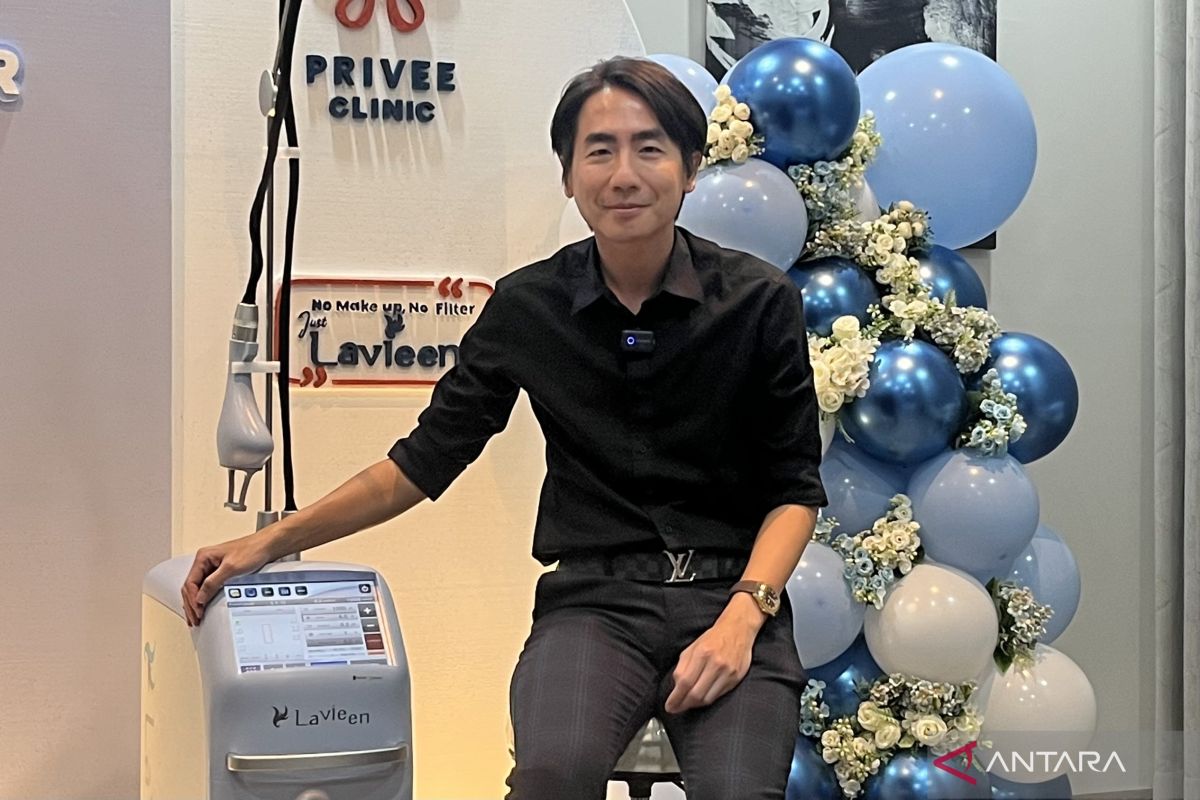
Selama bulan puasa, tubuh kita menjadi lebih rentan terhadap dehidrasi karena kurangnya asupan cairan selama berpuasa. Salah satu cara untuk menjaga kulit tetap sehat dan terhidrasi selama bulan puasa adalah dengan menggunakan pelembap.
Pelembap merupakan produk perawatan kulit yang berfungsi untuk menjaga kelembapan kulit agar tetap sehat dan terhidrasi. Selama bulan puasa, ketika kita tidak bisa minum air sepanjang hari, kulit kita dapat menjadi kering dan kusam. Oleh karena itu, penting bagi kita untuk menggunakan pelembap secara teratur.
Dokter kulit merekomendasikan untuk menggunakan pelembap setidaknya dua kali sehari, yaitu pagi dan malam sebelum tidur. Pilihlah pelembap yang sesuai dengan jenis kulit Anda, apakah itu kulit kering, normal, berminyak, atau kombinasi. Pelembap yang mengandung bahan-bahan alami seperti aloe vera, shea butter, dan hyaluronic acid dapat membantu menjaga kelembapan kulit dan menjadikannya tetap sehat selama bulan puasa.
Selain menggunakan pelembap, jangan lupa untuk tetap minum air putih yang cukup selama berbuka dan sahur untuk menjaga kelembapan kulit dari dalam. Hindari juga konsumsi makanan yang mengandung kafein dan garam berlebihan, karena dapat membuat kulit menjadi lebih kering.
Dengan menggunakan pelembap secara teratur selama bulan puasa, kita dapat menjaga kulit tetap sehat dan terhidrasi meskipun kita tidak bisa minum air sepanjang hari. Jadi, jangan lupa untuk selalu merawat kulit Anda dengan baik selama bulan puasa agar tetap sehat dan cantik. Semoga artikel ini bermanfaat untuk Anda.

Kedai pop-up Toko Kopi Tuku, yang terkenal dengan kopi berkualitas tinggi, telah hadir di Seoul hingga April 2024. Kedai kopi yang berasal dari Jakarta ini membawa cita rasa kopi Indonesia yang khas dan memikat para pecinta kopi di Korea Selatan.
Toko Kopi Tuku hadir dengan konsep pop-up store yang sementara, sehingga para penggemar kopi di Seoul dapat menikmati kopi berkualitas dari Indonesia tanpa perlu pergi jauh-jauh. Dengan desain yang minimalis dan atmosfer yang nyaman, kedai kopi ini menjadi tempat yang cocok untuk bersantai sambil menikmati secangkir kopi yang nikmat.
Selain menyajikan kopi dengan kualitas terbaik, Toko Kopi Tuku juga menawarkan berbagai pilihan menu kopi yang menggugah selera. Mulai dari kopi hitam yang strong hingga kopi susu yang creamy, semua dapat dinikmati di kedai ini. Selain itu, para pengunjung juga dapat membeli biji kopi yang berkualitas tinggi untuk dibawa pulang dan dinikmati di rumah.
Kehadiran Toko Kopi Tuku di Seoul merupakan langkah strategis untuk memperluas pasar dan mengenalkan kopi Indonesia ke kancah internasional. Dengan cita rasa yang autentik dan kualitas yang terjamin, kedai kopi ini berhasil menarik perhatian para pecinta kopi di Korea Selatan.
Bagi Anda yang sedang berada di Seoul atau berencana berkunjung ke sana, jangan lewatkan kesempatan untuk menikmati kopi berkualitas dari Indonesia di Toko Kopi Tuku. Nikmati pengalaman unik dan memuaskan dengan secangkir kopi yang hangat dan lezat. Jangan lupa untuk mengunjungi kedai ini sebelum ditutup pada bulan April 2024. Selamat menikmati!

WINGS Food, perusahaan makanan terkemuka di Indonesia, telah memberikan kontribusi positif bagi para pemudik yang sedang melakukan perjalanan pulang kampung pada saat Lebaran. Melalui program Pondok Rehat, WINGS Food menyediakan tempat istirahat yang nyaman dan aman bagi para pemudik di sejumlah titik strategis.
Dengan tujuan untuk memberikan kenyamanan dan kemudahan bagi para pemudik, WINGS Food telah menempatkan Pondok Rehat mereka di sejumlah titik perhentian yang ramai dilalui oleh pemudik, seperti rest area dan terminal bus. Pondok Rehat ini dilengkapi dengan fasilitas yang lengkap, seperti tempat duduk yang nyaman, kamar mandi, serta air minum dan makanan ringan gratis bagi para pengunjung.
Selain itu, WINGS Food juga menyediakan layanan medis darurat dan petugas keamanan yang siap membantu para pemudik jika terjadi keadaan darurat. Hal ini bertujuan untuk memberikan perlindungan dan keamanan bagi para pemudik selama perjalanan mereka pulang kampung.
Dengan adanya program Pondok Rehat ini, diharapkan para pemudik dapat merasa lebih nyaman dan aman selama perjalanan mereka pulang kampung. Selain itu, program ini juga menjadi bentuk kepedulian WINGS Food terhadap masyarakat Indonesia, khususnya para pemudik yang sedang melakukan perjalanan jauh untuk berkumpul bersama keluarga tercinta saat Lebaran.
Sebagai perusahaan yang telah lama berkecimpung dalam industri makanan dan minuman di Indonesia, WINGS Food terus berkomitmen untuk memberikan kontribusi positif bagi masyarakat Indonesia. Melalui program-program seperti Pondok Rehat ini, WINGS Food tidak hanya menjaga kualitas produknya, tetapi juga turut serta dalam membangun dan memperkuat hubungan baik dengan masyarakat. Semoga program Pondok Rehat dari WINGS Food dapat memberikan manfaat yang besar bagi para pemudik dan menjadi inspirasi bagi perusahaan lain untuk melakukan hal serupa.

UNIQLO baru-baru ini mengumumkan bahwa mereka akan meluncurkan penutup koleksi dari kolaborasi mereka dengan desainer mode terkenal asal Prancis, Ines de la Fressange. Kolaborasi ini sudah dinanti-nantikan oleh para penggemar mode di seluruh dunia, karena Ines de la Fressange dikenal dengan gaya khasnya yang elegan dan timeless.
Koleksi ini akan menampilkan berbagai pakaian yang menggabungkan gaya klasik Prancis dengan sentuhan modern dari UNIQLO. Para penggemar mode dapat menemukan berbagai pakaian seperti blus, rok, celana, dan jaket yang dirancang dengan teliti dan diproduksi dengan kualitas tinggi.
Ines de la Fressange sendiri sangat antusias dengan kolaborasi ini, ia mengatakan bahwa dia senang bisa bekerja sama dengan UNIQLO untuk menciptakan koleksi yang dapat dinikmati oleh banyak orang. Ia juga menambahkan bahwa koleksi ini akan menjadi pilihan yang sempurna bagi mereka yang mencari pakaian yang nyaman namun tetap terlihat stylish.
Para penggemar mode di Indonesia juga pasti tidak sabar untuk melihat koleksi ini. UNIQLO telah menjadi salah satu merek pakaian favorit di Indonesia karena desainnya yang trendi dan harganya yang terjangkau. Dengan hadirnya kolaborasi dengan Ines de la Fressange, diharapkan dapat memberikan pilihan yang lebih beragam bagi para penggemar mode di tanah air.
Jadi, jangan lewatkan kesempatan untuk memiliki salah satu pakaian dari koleksi kolaborasi UNIQLO dengan Ines de la Fressange ini. Siapkan dompet Anda dan segera kunjungi toko UNIQLO terdekat untuk mendapatkan pakaian yang akan membuat gaya Anda semakin stylish!

Sembelit merupakan kondisi yang sering dialami oleh wanita saat memasuki masa perimenopause. Perimenopause adalah masa transisi sebelum memasuki menopause yang ditandai dengan penurunan hormon reproduksi seperti estrogen dan progesteron.
Gejala sembelit pada perimenopause dapat disebabkan oleh berbagai faktor, seperti perubahan hormon, pola makan yang tidak sehat, kurangnya asupan serat, kurangnya aktivitas fisik, stres, atau penggunaan obat-obatan tertentu.
Sembelit dapat memberikan ketidaknyamanan dan gangguan pada kesehatan tubuh. Kondisi ini dapat menyebabkan perut kembung, nyeri perut, sulit buang air besar, atau bahkan wasir. Oleh karena itu, penting bagi wanita yang mengalami sembelit pada masa perimenopause untuk segera mengatasi masalah ini.
Beberapa cara yang dapat dilakukan untuk mengatasi sembelit pada masa perimenopause antara lain adalah dengan meningkatkan asupan serat dalam makanan, minum banyak air, dan melakukan olahraga secara teratur. Selain itu, menghindari makanan yang dapat memperparah sembelit seperti makanan berlemak dan berminyak juga sangat dianjurkan.
Jika gejala sembelit tidak kunjung membaik meskipun sudah melakukan berbagai cara, segera konsultasikan dengan dokter untuk mendapatkan penanganan yang tepat. Dokter dapat memberikan saran dan rekomendasi obat-obatan yang aman untuk mengatasi sembelit pada masa perimenopause.
Dengan mengatasi sembelit secara tepat, wanita pada masa perimenopause dapat mengurangi risiko gangguan kesehatan yang dapat muncul akibat kondisi ini. Selain itu, menjaga pola makan dan gaya hidup sehat juga dapat membantu menjaga kesehatan tubuh secara keseluruhan selama masa transisi menuju menopause.
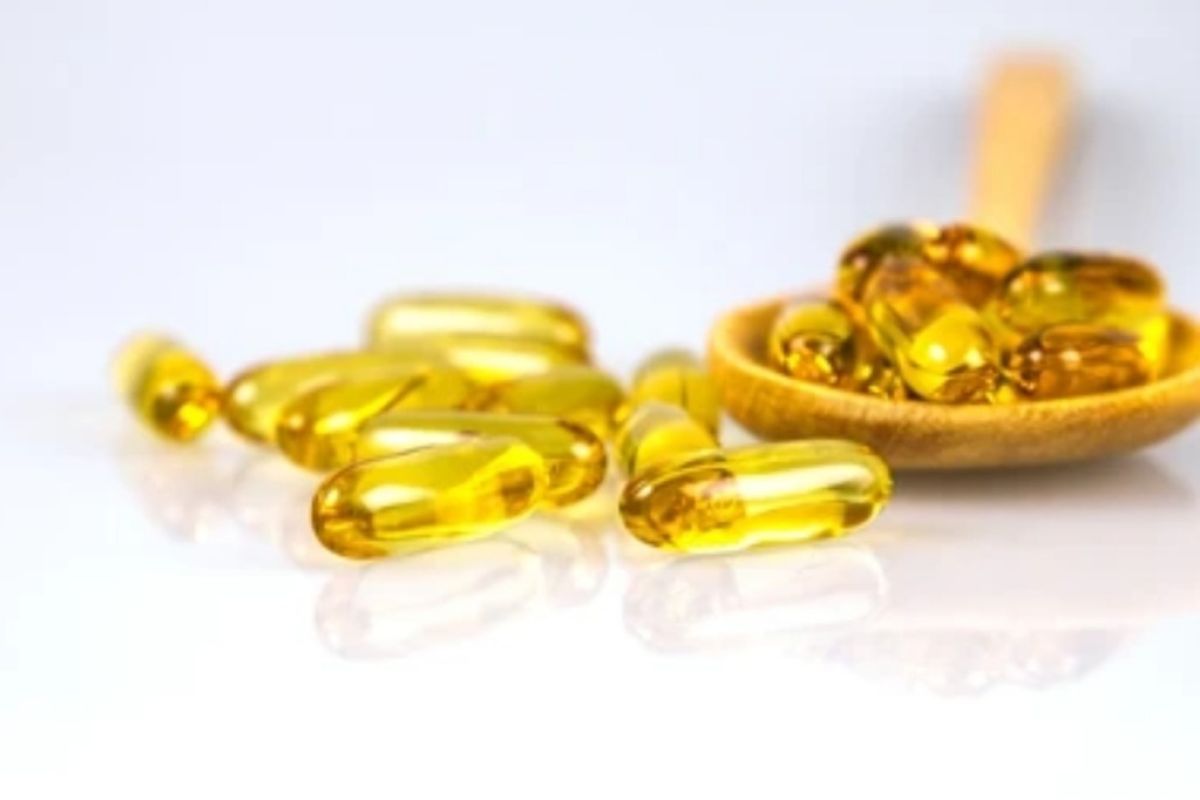
Vitamin E merupakan salah satu nutrisi penting yang sangat bermanfaat bagi kesehatan kulit. Vitamin E dikenal sebagai antioksidan yang dapat melindungi kulit dari kerusakan akibat radikal bebas. Selain itu, vitamin E juga dapat membantu menjaga kelembaban kulit dan mencegah penuaan dini.
Kulit yang sehat dan terawat dapat meningkatkan rasa percaya diri seseorang. Oleh karena itu, penting untuk memastikan asupan vitamin E yang cukup untuk menjaga kesehatan kulit. Vitamin E dapat ditemukan dalam berbagai jenis makanan, seperti kacang-kacangan, biji-bijian, sayuran hijau, dan buah-buahan.
Selain itu, vitamin E juga sering digunakan sebagai bahan utama dalam produk perawatan kulit, seperti krim, lotion, dan serum. Produk-produk ini dapat membantu menjaga kelembaban kulit, mengurangi kerutan, dan meningkatkan elastisitas kulit.
Namun, perlu diingat bahwa penggunaan vitamin E dalam bentuk topikal juga perlu diperhatikan. Sebaiknya konsultasikan dengan dokter atau ahli kecantikan sebelum menggunakan produk perawatan kulit yang mengandung vitamin E, terutama jika Anda memiliki kulit sensitif atau masalah kulit tertentu.
Dengan menjaga asupan vitamin E yang cukup dan menggunakan produk perawatan kulit yang mengandung vitamin E secara teratur, Anda dapat memiliki kulit yang sehat, terawat, dan bercahaya. Jadi, jangan lupa untuk memperhatikan asupan vitamin E Anda agar kulit tetap sehat dan cantik.

Ramadhan adalah bulan suci bagi umat Islam di seluruh dunia. Selama bulan ini, umat Islam berpuasa dari fajar hingga maghrib sebagai bentuk ibadah dan pengendalian diri. Namun, selain ibadah puasa, Ramadhan juga dikenal dengan tradisi makanan khas dan bazar yang ramai dikunjungi oleh umat Islam di berbagai negara.
Di Indonesia, tradisi makanan khas Ramadhan sangat beragam. Mulai dari kolak, ketupat, opor ayam, sate, hingga nasi goreng spesial. Setiap daerah di Indonesia memiliki makanan tradisional yang khas dan hanya disajikan selama bulan Ramadhan. Selain itu, bazar Ramadhan juga menjadi tempat favorit bagi masyarakat untuk berbelanja kebutuhan selama bulan puasa. Di bazar ini, pengunjung bisa menemukan berbagai macam makanan, minuman, pakaian, dan barang-barang keperluan lainnya dengan harga yang terjangkau.
Selain Indonesia, negara-negara lain juga memiliki tradisi makanan khas dan bazar yang ramai di bulan Ramadhan. Misalnya, di Malaysia terkenal dengan makanan seperti nasi kerabu, laksa, dan kuih-muih tradisional. Di Arab Saudi, makanan khas seperti kabsa, hummus, dan baklava menjadi favorit para jamaah haji dan umat Islam lainnya. Sedangkan di Turki, makanan seperti kebab, borek, dan baklava juga menjadi hidangan khas Ramadhan yang disajikan di berbagai restoran dan bazar.
Tradisi makanan dan bazar Ramadhan ini tidak hanya menjadi tempat untuk memenuhi kebutuhan sehari-hari selama bulan puasa, tetapi juga menjadi ajang silaturahmi dan berkumpul bersama keluarga dan teman-teman. Melalui tradisi ini, umat Islam di berbagai negara dapat merayakan bulan suci Ramadhan dengan penuh kebahagiaan dan kebersamaan.
Dengan adanya tradisi makanan khas dan bazar Ramadhan, umat Islam di berbagai negara dapat merasakan keberkahan dan keindahan bulan suci ini. Semoga tradisi ini dapat terus dilestarikan dan menjadi bagian dari kehidupan umat Islam di seluruh dunia. Selamat menyambut bulan Ramadhan, mari kita nikmati kelezatan makanan khas dan keceriaan bazar Ramadhan bersama keluarga dan teman-teman!

Adira Finance berangkatkan 500 peserta mudik program KURMA
Adira Finance kembali menggelar program mudik gratis bagi para pemudik yang ingin pulang kampung saat Lebaran. Program ini diberi nama KURMA, kepanjangan dari “Kendaraan Umum Rakyat Mudik Adira”.
Sebanyak 500 peserta dari berbagai daerah di Indonesia telah diberangkatkan oleh Adira Finance untuk pulang ke kampung halaman mereka. Para peserta ini terdiri dari berbagai kalangan, mulai dari buruh pabrik hingga mahasiswa yang ingin merayakan Lebaran bersama keluarga.
Program KURMA ini merupakan wujud kepedulian Adira Finance terhadap masyarakat yang ingin merayakan Lebaran bersama keluarga namun terkendala biaya transportasi. Dengan adanya program ini, Adira Finance berharap dapat membantu para pemudik untuk pulang ke kampung halaman dengan nyaman dan aman.
Selain menyediakan kendaraan untuk mudik, Adira Finance juga memberikan fasilitas lain seperti makanan dan minuman selama perjalanan serta asuransi perjalanan untuk para peserta. Hal ini dilakukan untuk memberikan pengalaman mudik yang lebih menyenangkan dan mengurangi beban bagi para pemudik.
Dengan adanya program KURMA, diharapkan para pemudik dapat merayakan Lebaran dengan tenang dan bahagia bersama keluarga di kampung halaman. Adira Finance pun berkomitmen untuk terus mendukung masyarakat Indonesia dalam menjalani tradisi mudik Lebaran setiap tahunnya.

Greenlight, merek fashion lokal yang dikenal dengan desainnya yang edgy dan urban, baru-baru ini mengumumkan kerjasama dengan musisi ternama Ariel NOAH untuk meluncurkan koleksi terbaru mereka yang bertajuk “Go Outside”. Koleksi ini merupakan kolaborasi antara Greenlight dan Ariel dalam upaya untuk menginspirasi para pemuda Indonesia untuk lebih berani dan aktif dalam menjelajahi dunia di luar sana.
Koleksi “Go Outside” ini didesain dengan sentuhan yang khas dari Ariel, yang dikenal dengan gaya fashionnya yang selalu berani dan unik. Dalam koleksi ini, kita dapat menemukan berbagai macam pakaian dan aksesoris yang cocok untuk dipakai saat beraktivitas di luar ruangan, mulai dari jaket, kaos, topi, hingga tas ransel.
Dengan konsep yang menekankan pada keberanian untuk keluar dari zona nyaman dan menjelajahi dunia di luar sana, koleksi “Go Outside” ini diharapkan dapat menjadi inspirasi bagi para pemuda Indonesia untuk lebih aktif dan berani dalam menjalani kehidupan mereka. Selain itu, koleksi ini juga diharapkan dapat menunjukkan bahwa fashion lokal juga mampu bersaing dengan merek-merek internasional dalam hal desain dan kualitas.
Ariel sendiri mengaku senang dapat bekerja sama dengan Greenlight dalam menciptakan koleksi ini. Menurutnya, kolaborasi ini merupakan wujud dari keinginannya untuk terus menginspirasi dan mendorong generasi muda Indonesia untuk terus berkembang dan mencapai impian mereka.
Koleksi “Go Outside” dari Greenlight dan Ariel NOAH akan segera tersedia di seluruh gerai Greenlight dan juga secara online melalui website resmi mereka. Jadi, jangan lewatkan kesempatan untuk mendapatkan koleksi ini dan mulailah menjelajahi dunia di luar sana dengan gaya yang keren dan berani!

Hari Kesehatan Dunia diperingati setiap tahun pada tanggal 7 April sebagai upaya untuk meningkatkan kesadaran masyarakat akan pentingnya kesehatan. Tahun ini, tema yang diusung adalah “Akses Kesehatan untuk Semua: Melindungi Semua Orang dari Pandemi”.
Di tengah pandemi COVID-19 yang masih berlangsung, akses kesehatan yang bermutu menjadi harapan bagi banyak orang. Pakar kesehatan menekankan pentingnya akses yang merata bagi semua orang, tanpa terkecuali. Hal ini penting untuk memastikan bahwa setiap individu dapat mendapatkan layanan kesehatan yang dibutuhkan, tanpa harus khawatir tentang biaya atau jarak.
Pakar kesehatan juga menyoroti pentingnya penguatan sistem kesehatan di seluruh dunia. Dengan memiliki sistem kesehatan yang kuat, setiap negara dapat memberikan layanan kesehatan yang bermutu dan merata bagi seluruh penduduknya. Hal ini juga akan membantu dalam penanggulangan pandemi dan peningkatan kesehatan masyarakat secara keseluruhan.
Selain itu, Pakar kesehatan juga menekankan pentingnya edukasi dan promosi kesehatan kepada masyarakat. Dengan meningkatkan kesadaran akan pentingnya kesehatan, diharapkan masyarakat dapat lebih peduli terhadap kesehatan mereka sendiri dan mengambil langkah-langkah preventif untuk mencegah penyakit.
Sebagai masyarakat Indonesia, mari kita dukung upaya pemerintah dalam meningkatkan akses kesehatan yang bermutu bagi semua orang. Mari kita jaga kesehatan kita sendiri dan juga orang-orang di sekitar kita. Dengan bersama-sama, kita dapat menciptakan masyarakat yang lebih sehat dan sejahtera. Selamat Hari Kesehatan Dunia 2024! Semoga akses kesehatan bermutu dapat menjadi kenyataan bagi semua orang.

Jerawat dan bibir kering adalah dua masalah kulit yang sering dialami oleh banyak orang saat berpuasa di cuaca ekstrem. Saat berpuasa, tubuh kita menjadi lebih sensitif terhadap perubahan cuaca, terutama saat cuaca panas dan kering. Hal ini dapat menyebabkan kulit menjadi kering dan jerawat lebih mudah muncul.
Jerawat merupakan masalah kulit yang sering dialami oleh remaja maupun orang dewasa. Jerawat biasanya muncul akibat produksi minyak berlebih di kulit yang dapat menyumbat pori-pori. Saat berpuasa di cuaca ekstrem, produksi minyak di kulit biasanya meningkat, sehingga risiko jerawat pun menjadi lebih tinggi. Selain itu, pola makan yang tidak sehat saat berpuasa juga dapat memperburuk kondisi jerawat.
Selain jerawat, bibir kering juga sering menjadi masalah kulit yang dialami saat berpuasa di cuaca ekstrem. Bibir yang kering dapat terasa tidak nyaman dan bahkan terasa sakit. Hal ini biasanya disebabkan oleh dehidrasi akibat kurangnya cairan tubuh saat berpuasa. Selain itu, paparan sinar matahari juga dapat membuat bibir menjadi kering dan pecah-pecah.
Untuk mengatasi masalah jerawat dan bibir kering saat berpuasa di cuaca ekstrem, ada beberapa langkah yang dapat dilakukan. Pertama, jaga kebersihan kulit dengan rajin mencuci wajah dan menggunakan produk perawatan kulit yang sesuai dengan jenis kulit. Kedua, perbanyak konsumsi air putih agar tubuh tetap terhidrasi. Ketiga, hindari makanan yang dapat memicu jerawat seperti makanan berlemak dan berminyak. Keempat, gunakan pelembab bibir untuk menjaga kelembaban bibir.
Dengan menjaga kebersihan kulit, menghindari makanan yang dapat memicu jerawat, dan merawat bibir dengan pelembab, masalah jerawat dan bibir kering saat berpuasa di cuaca ekstrem dapat dikurangi. Selain itu, jangan lupa untuk menjaga pola makan yang sehat dan teratur serta istirahat yang cukup agar kulit tetap sehat dan terhindar dari masalah-masalah kulit lainnya. Semoga artikel ini bermanfaat bagi pembaca yang sedang mengalami masalah jerawat dan bibir kering saat berpuasa di cuaca ekstrem.
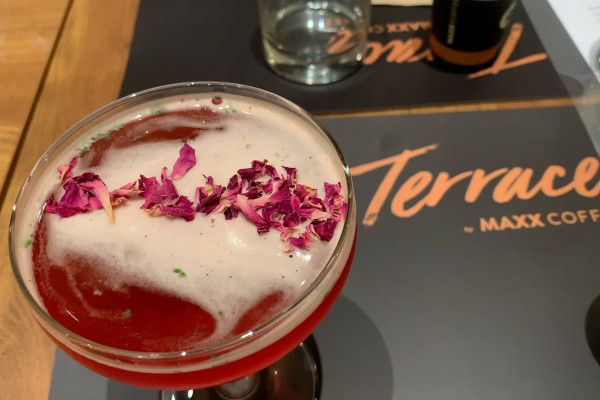
Tempat nongkrong merupakan salah satu kegiatan yang sering dilakukan oleh banyak orang, terutama para penggemar kopi. Bagi para pecinta kopi, mencari tempat yang nyaman dan cozy untuk menikmati secangkir kopi adalah hal yang sangat menyenangkan. Salah satu tempat nongkrong yang baru saja diperkenalkan untuk para pecinta kopi adalah Terrace Maxx Coffee.
Maxx Coffee adalah salah satu jaringan kedai kopi yang cukup terkenal di Indonesia. Mereka baru-baru ini memperkenalkan konsep baru yang diberi nama Terrace, yaitu sebuah tempat nongkrong yang didesain dengan konsep outdoor yang modern dan nyaman. Dengan nuansa alam yang segar dan udara terbuka, Terrace Maxx Coffee menjadi pilihan yang tepat bagi para penggemar kopi yang ingin menikmati suasana berbeda.
Terletak di beberapa lokasi strategis di Jakarta, seperti Senayan City, Mall Ciputra, dan Kota Kasablanka, Terrace Maxx Coffee menawarkan berbagai macam menu kopi yang lezat dan berkualitas. Mulai dari kopi hitam, cappuccino, latte, hingga kopi spesial yang dibuat dengan teknik dan bahan terbaik. Selain itu, mereka juga menyediakan berbagai pilihan makanan ringan dan camilan yang cocok untuk menemani secangkir kopi Anda.
Selain itu, Terrace Maxx Coffee juga menawarkan suasana yang nyaman dan cozy untuk para pengunjung. Dengan desain yang modern dan minimalis, serta dekorasi yang menarik, tempat ini cocok untuk berbagai kegiatan, mulai dari ngobrol santai dengan teman, rapat bisnis, hingga acara kumpul keluarga. Dengan pelayanan yang ramah dan harga yang terjangkau, Maxx Coffee merupakan tempat nongkrong yang cocok untuk semua kalangan.
Jadi, bagi Anda yang sedang mencari tempat nongkrong baru untuk menikmati kopi yang lezat dan suasana yang nyaman, Maxx Coffee Terrace adalah pilihan yang tepat. Kunjungi salah satu outlet mereka dan rasakan pengalaman baru dalam menikmati kopi di tempat yang berbeda. Ayo nikmati kopi dan suasana yang segar hanya di Maxx Coffee Terrace!

Astra Infra bersama kepolisian terapkan rekayasa lalin untuk mengatasi kemacetan di jalan raya. Kerjasama antara perusahaan pengelola infrastruktur dan pihak kepolisian ini bertujuan untuk meningkatkan kelancaran lalu lintas dan mengurangi waktu tempuh perjalanan bagi pengguna jalan.
Dengan adanya rekayasa lalin, Astra Infra dan kepolisian dapat mengatur arus lalu lintas secara optimal, sehingga kemacetan dapat diminimalkan. Langkah-langkah yang diambil antara lain penempatan petugas lalu lintas di titik-titik strategis, pengalihan jalur lalu lintas, serta pengaturan lampu lalu lintas.
Selain itu, Astra Infra juga melakukan pemeliharaan dan perbaikan jalan secara berkala untuk memastikan kondisi jalan yang baik dan aman bagi pengguna jalan. Dengan demikian, diharapkan tingkat kecelakaan dapat dikurangi dan mobilitas masyarakat menjadi lebih lancar.
Kerjasama antara Astra Infra dan kepolisian ini merupakan bentuk komitmen dari kedua belah pihak dalam meningkatkan kualitas transportasi di Indonesia. Dengan adanya rekayasa lalin yang terintegrasi, diharapkan dapat memberikan manfaat yang besar bagi masyarakat dan mempercepat pertumbuhan ekonomi negara.
Sebagai pengguna jalan, kita juga diimbau untuk selalu mematuhi peraturan lalu lintas, mengutamakan keselamatan dalam berkendara, serta mendukung upaya perbaikan dan peningkatan infrastruktur jalan raya. Dengan demikian, kita semua dapat berkontribusi dalam menciptakan lalu lintas yang aman, lancar, dan tertib.



































































































